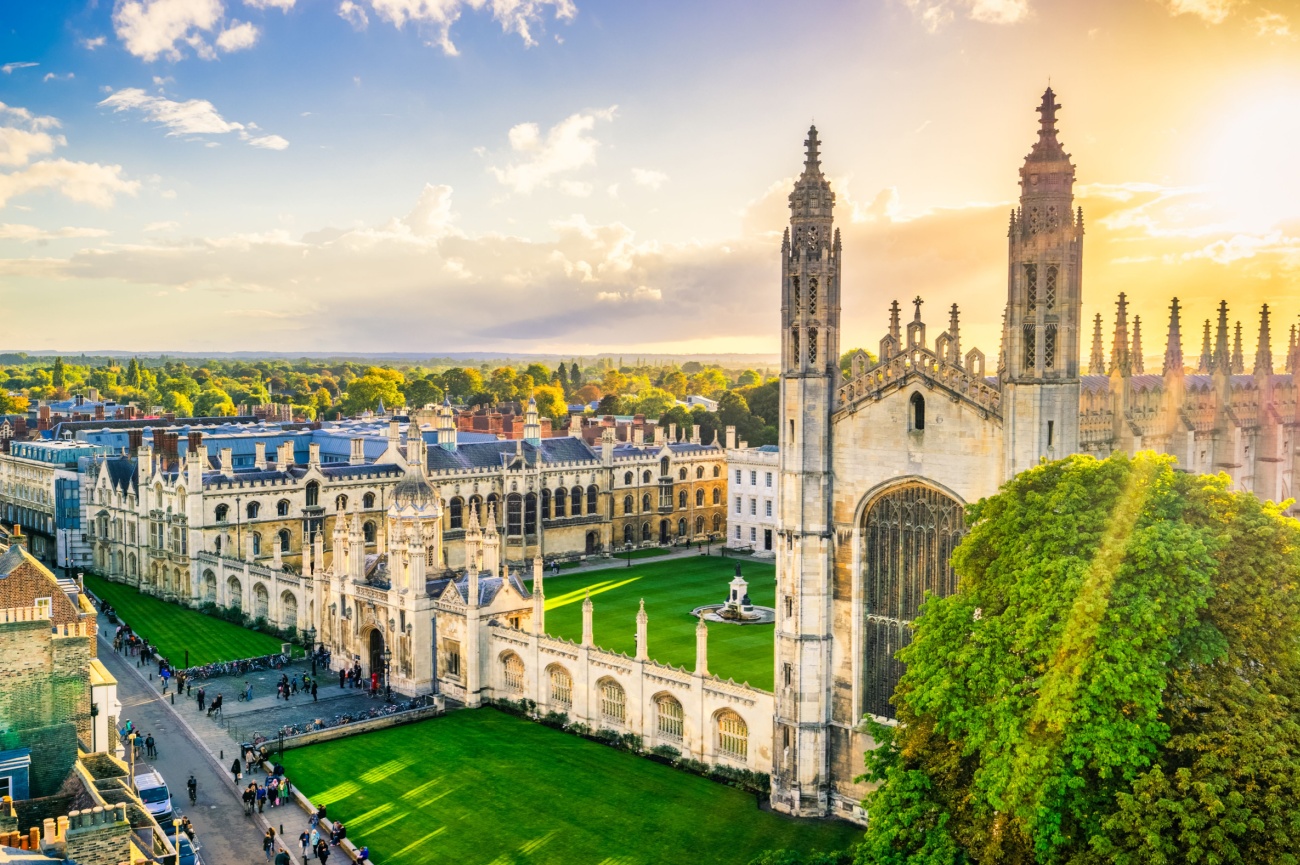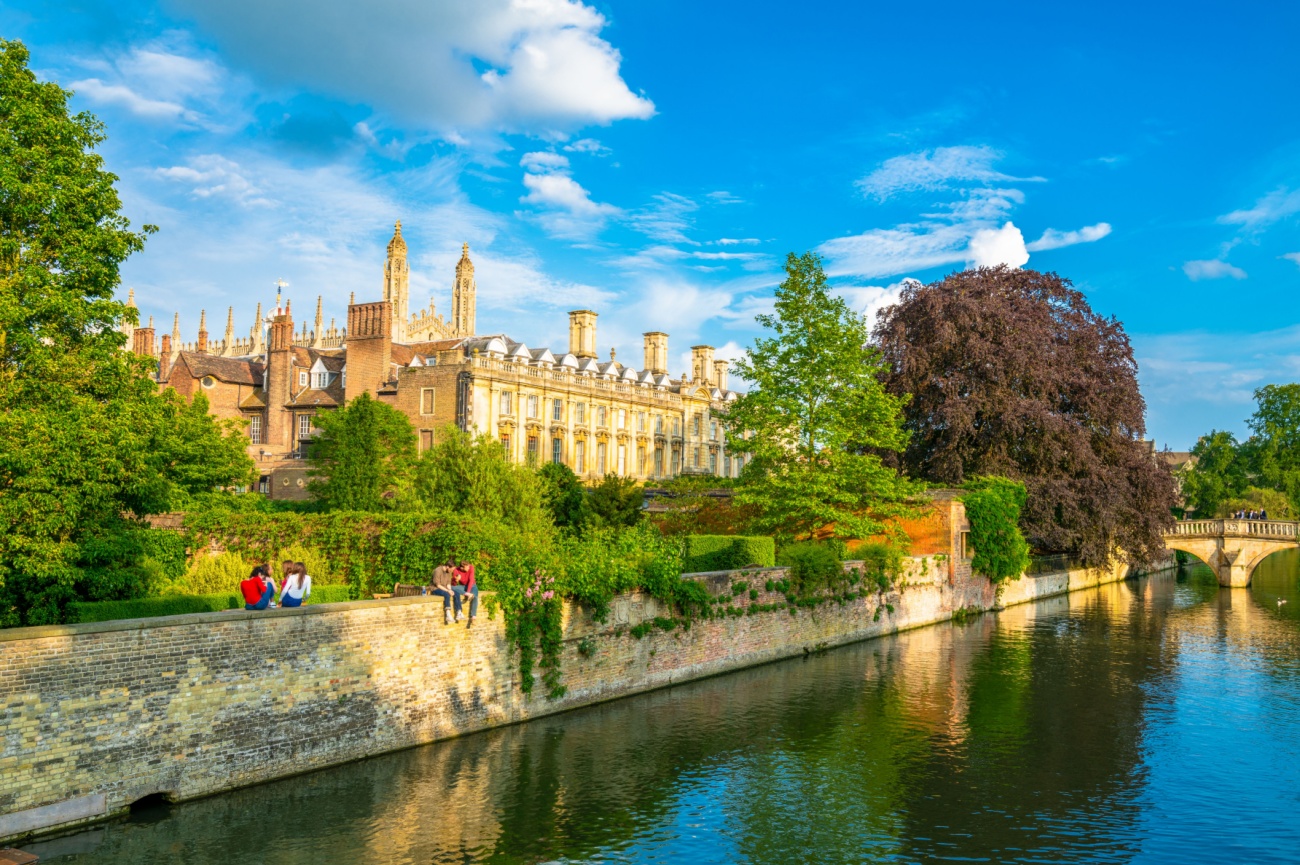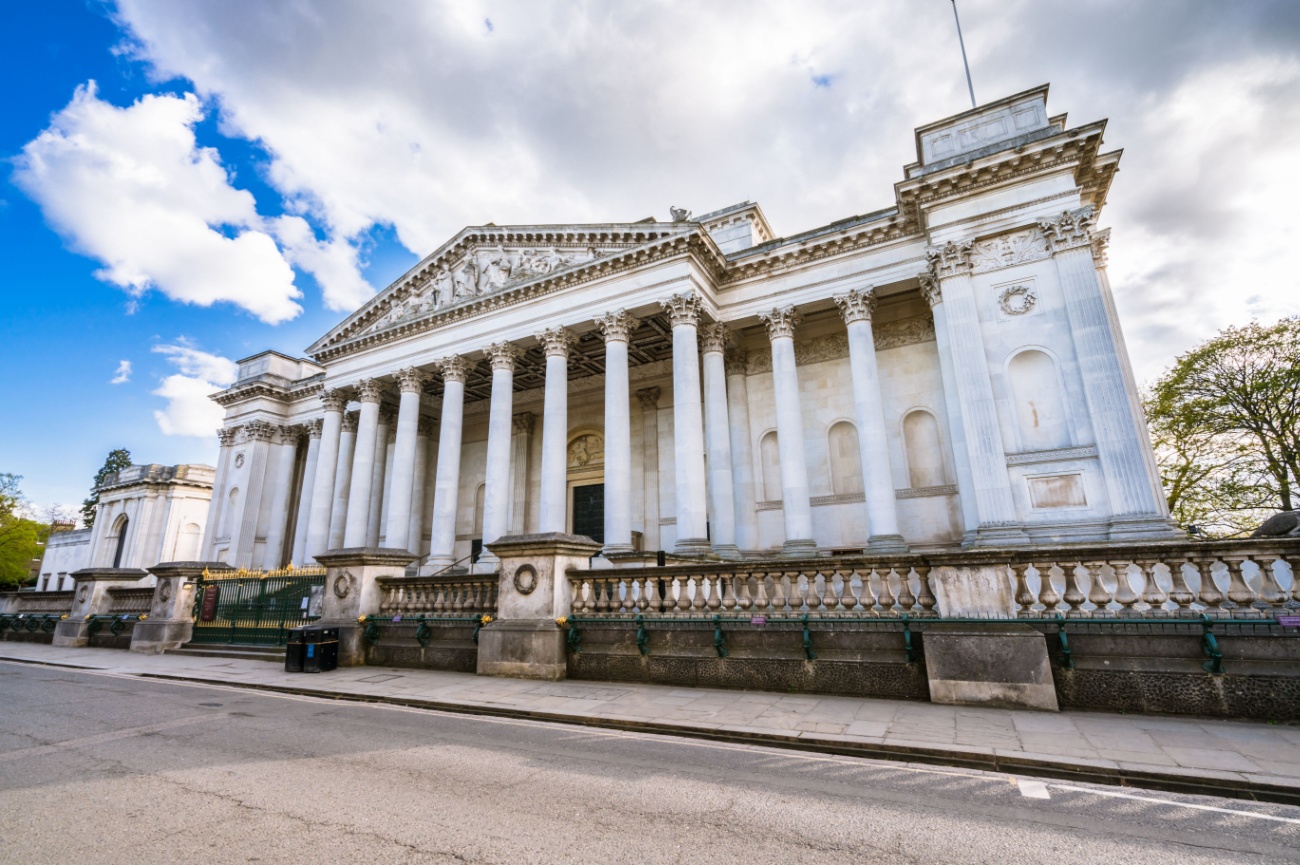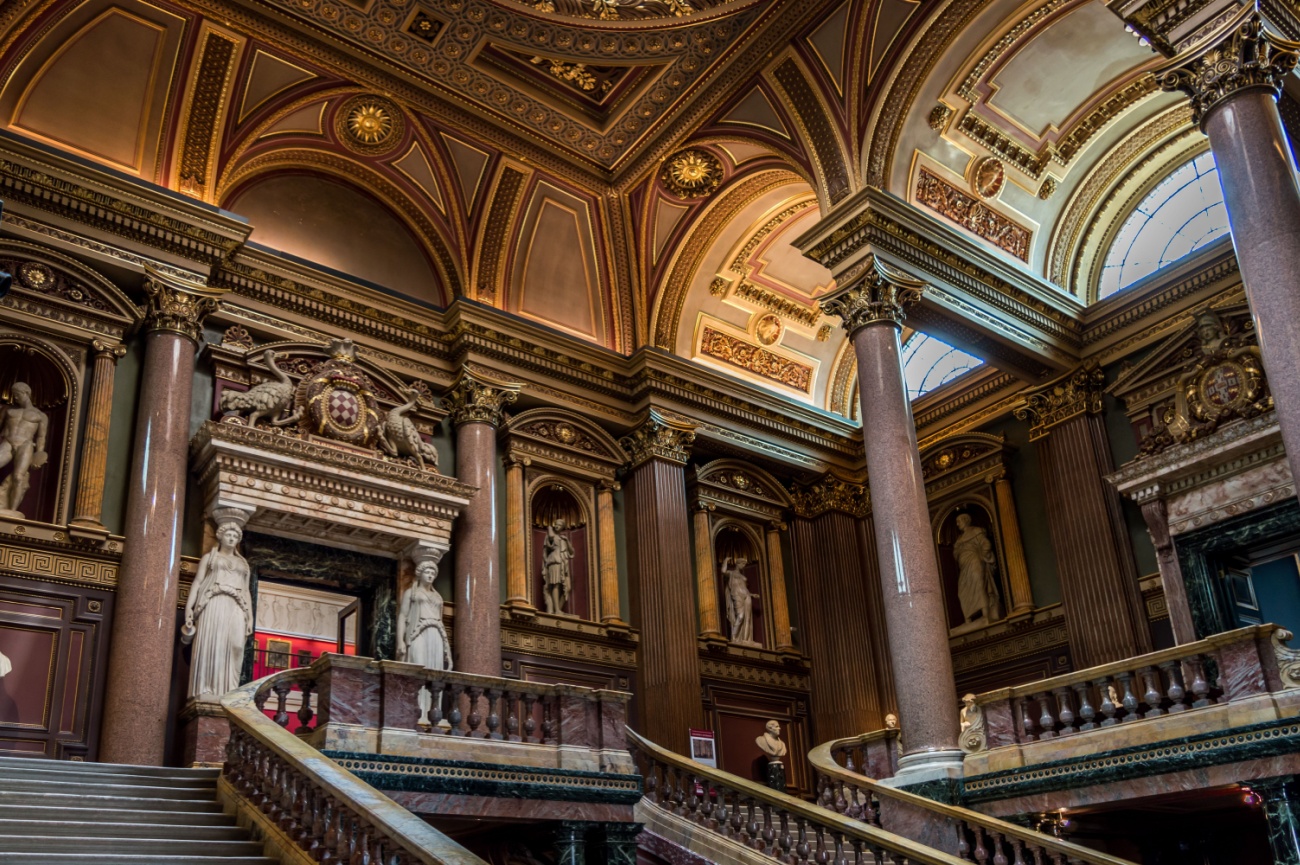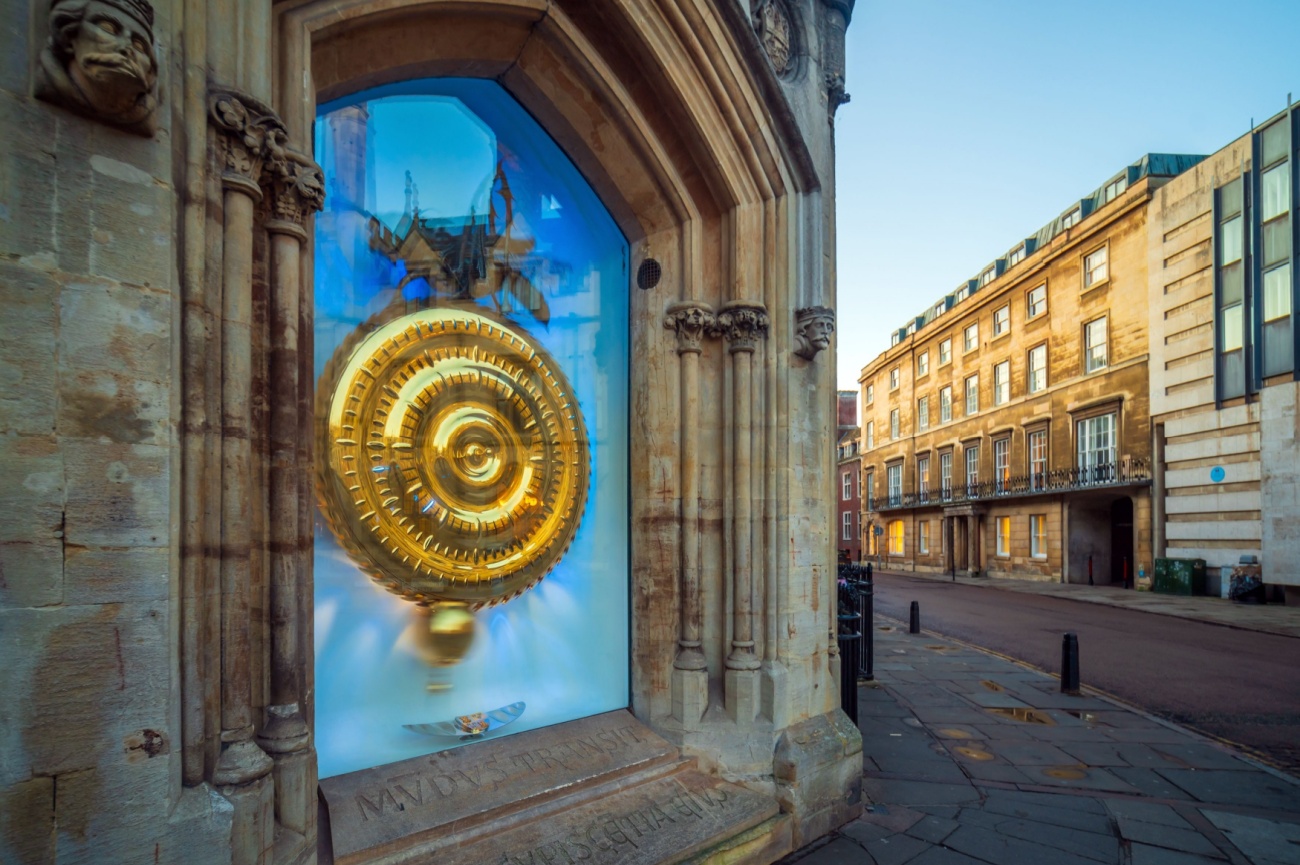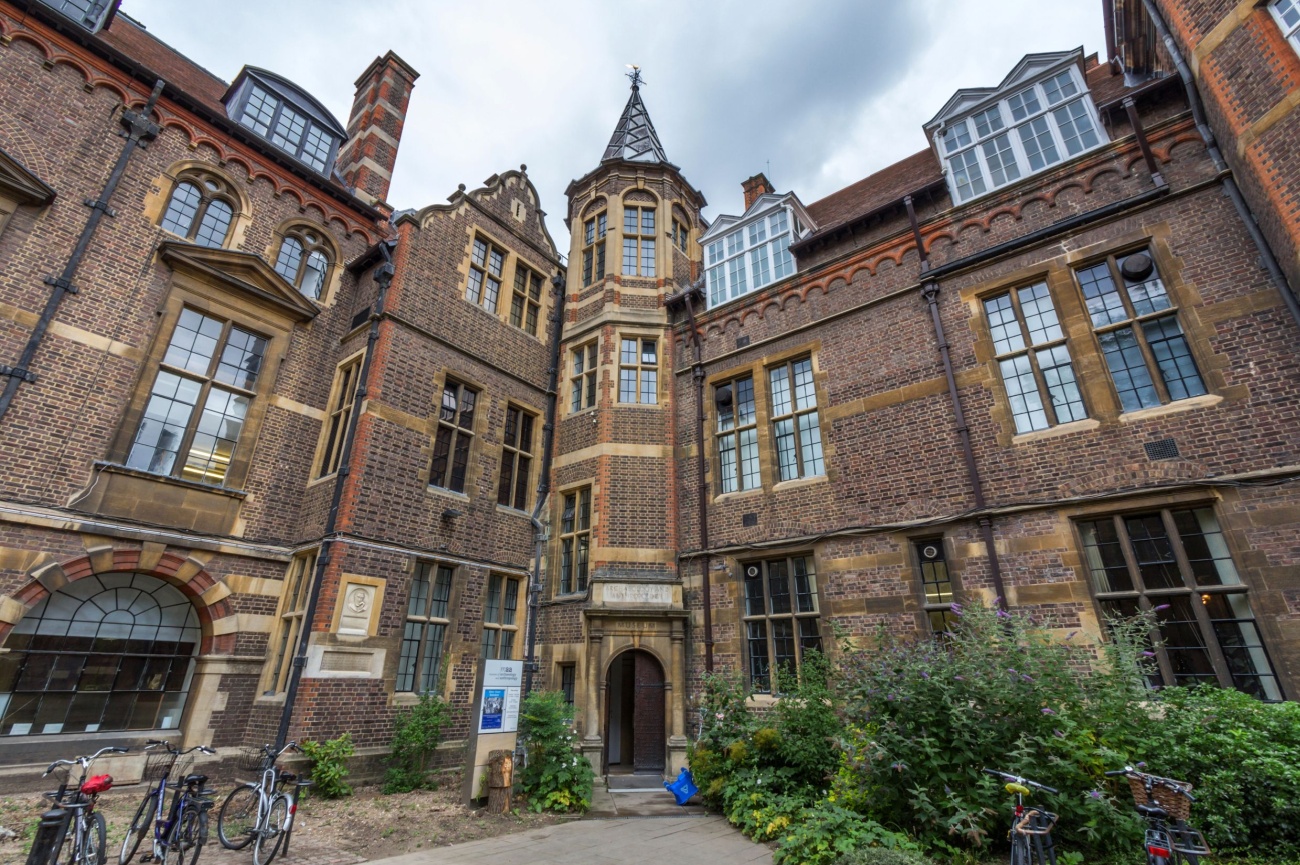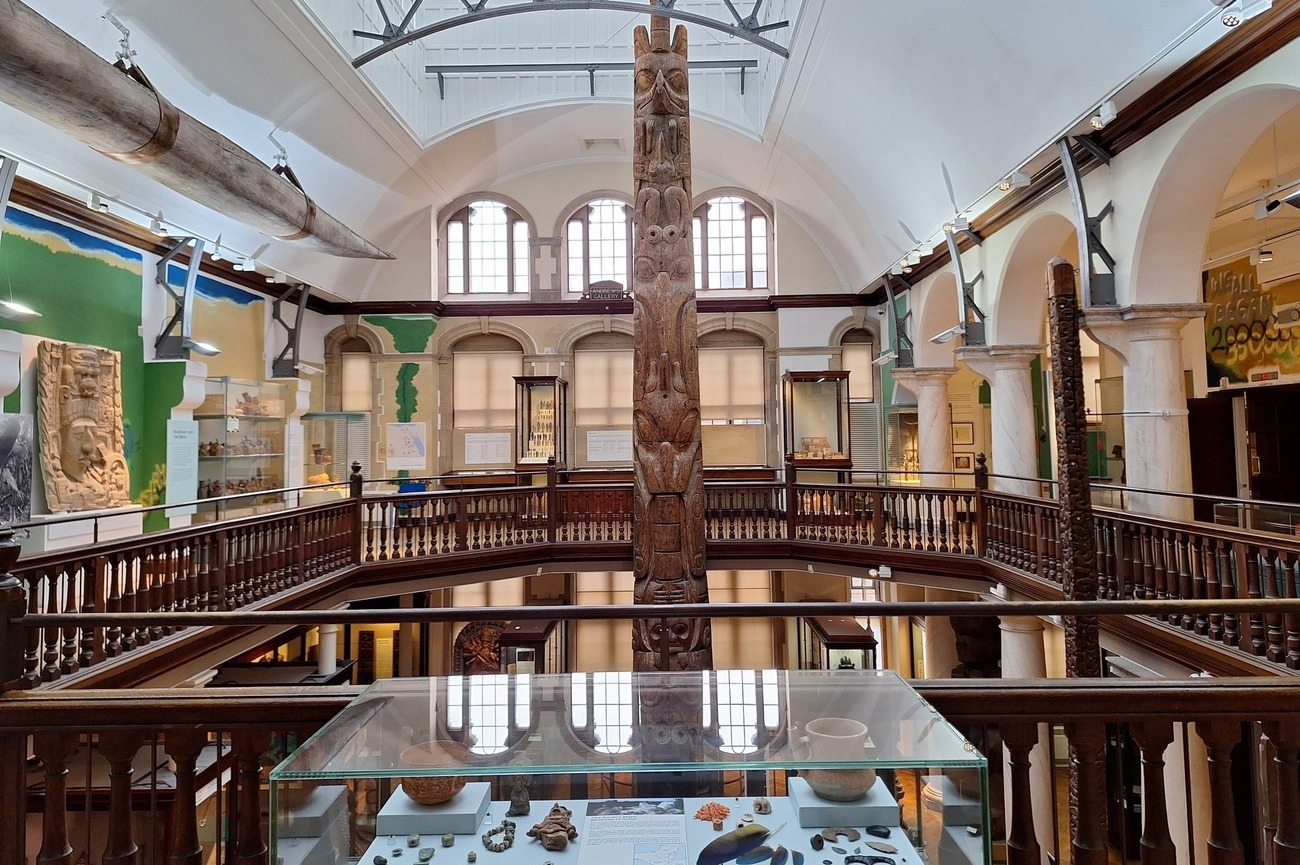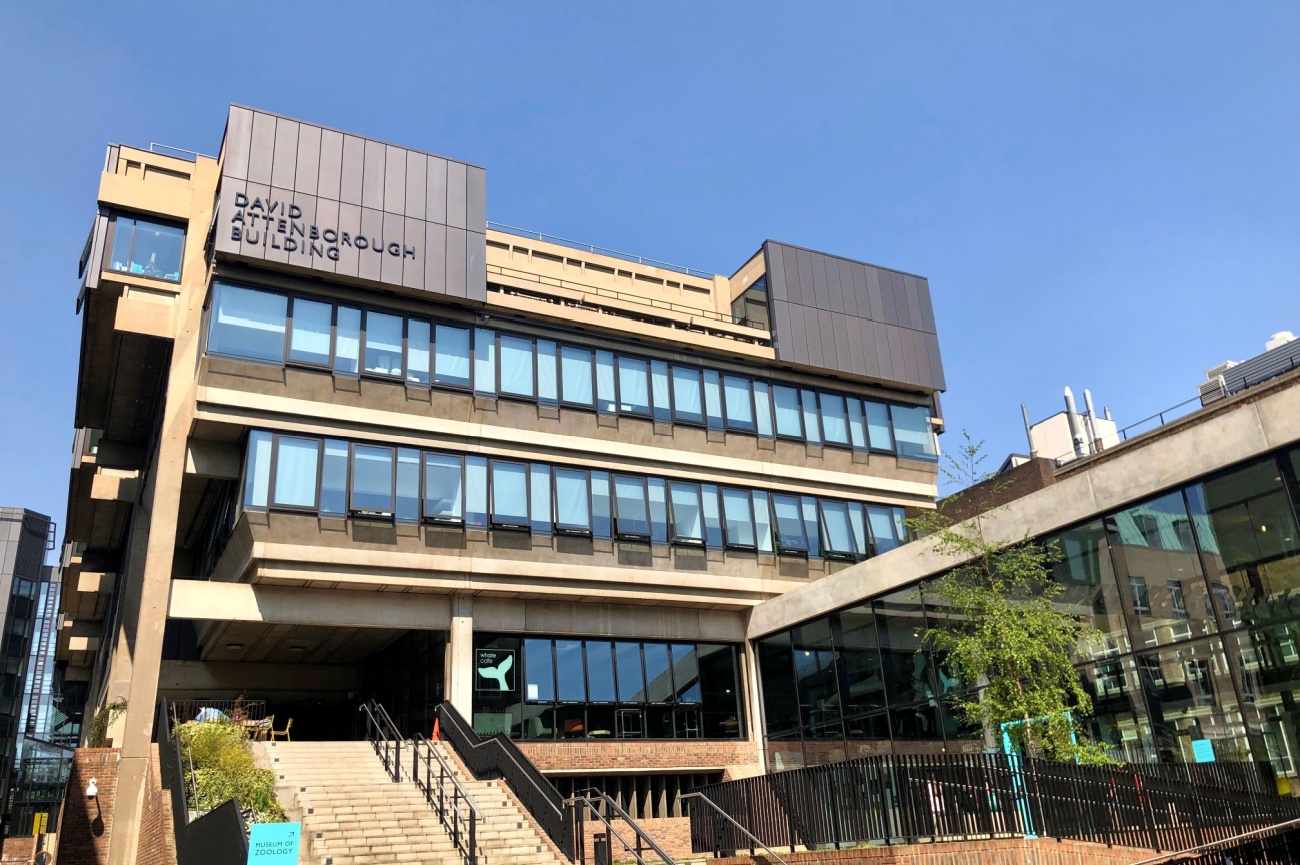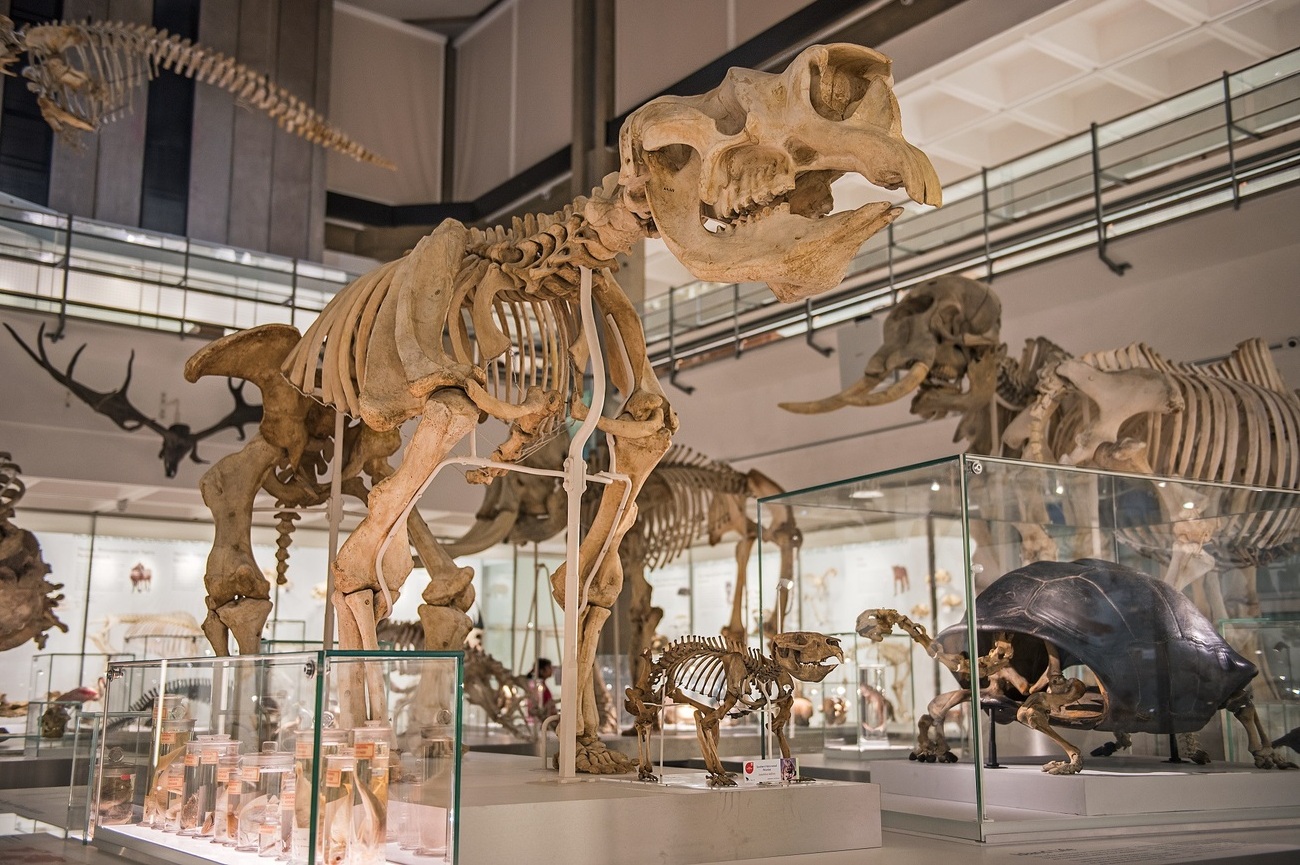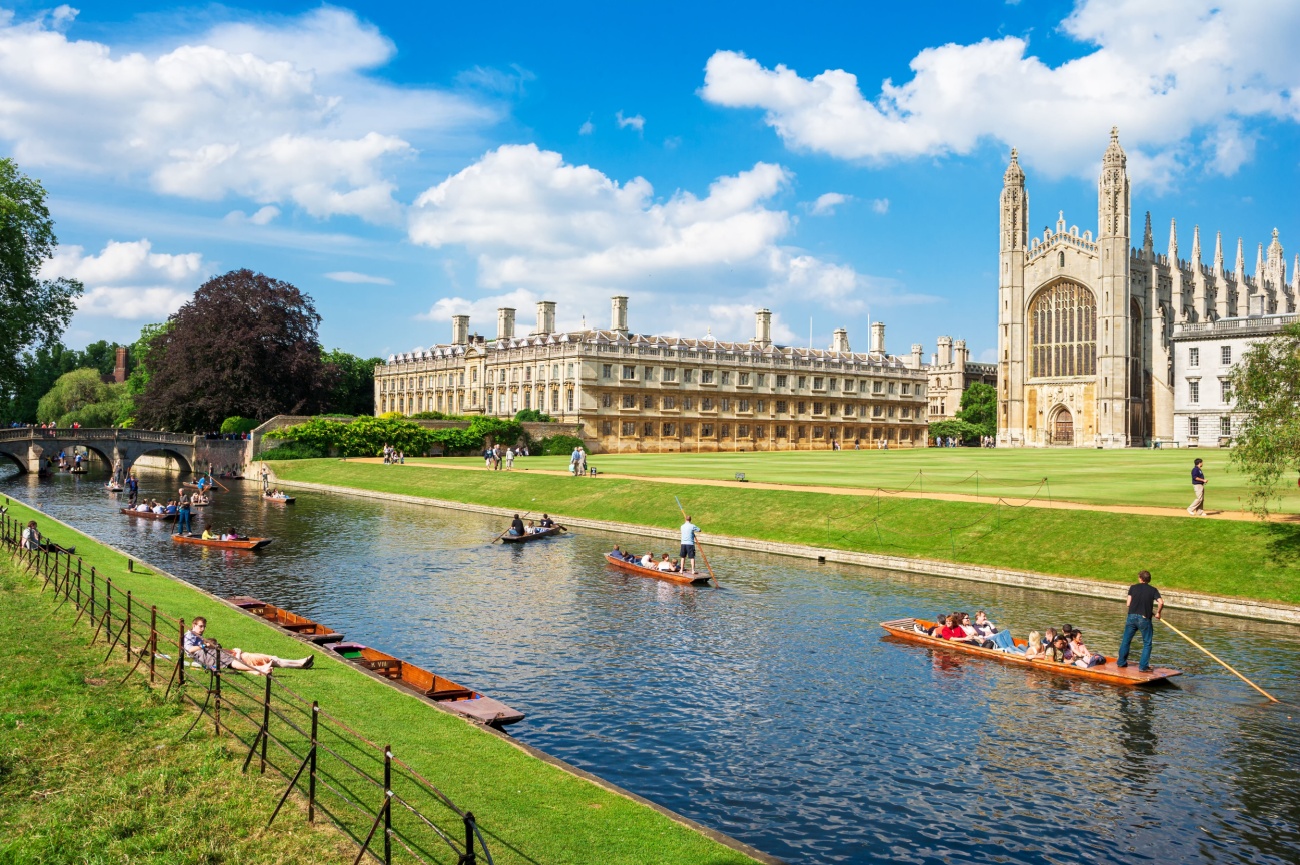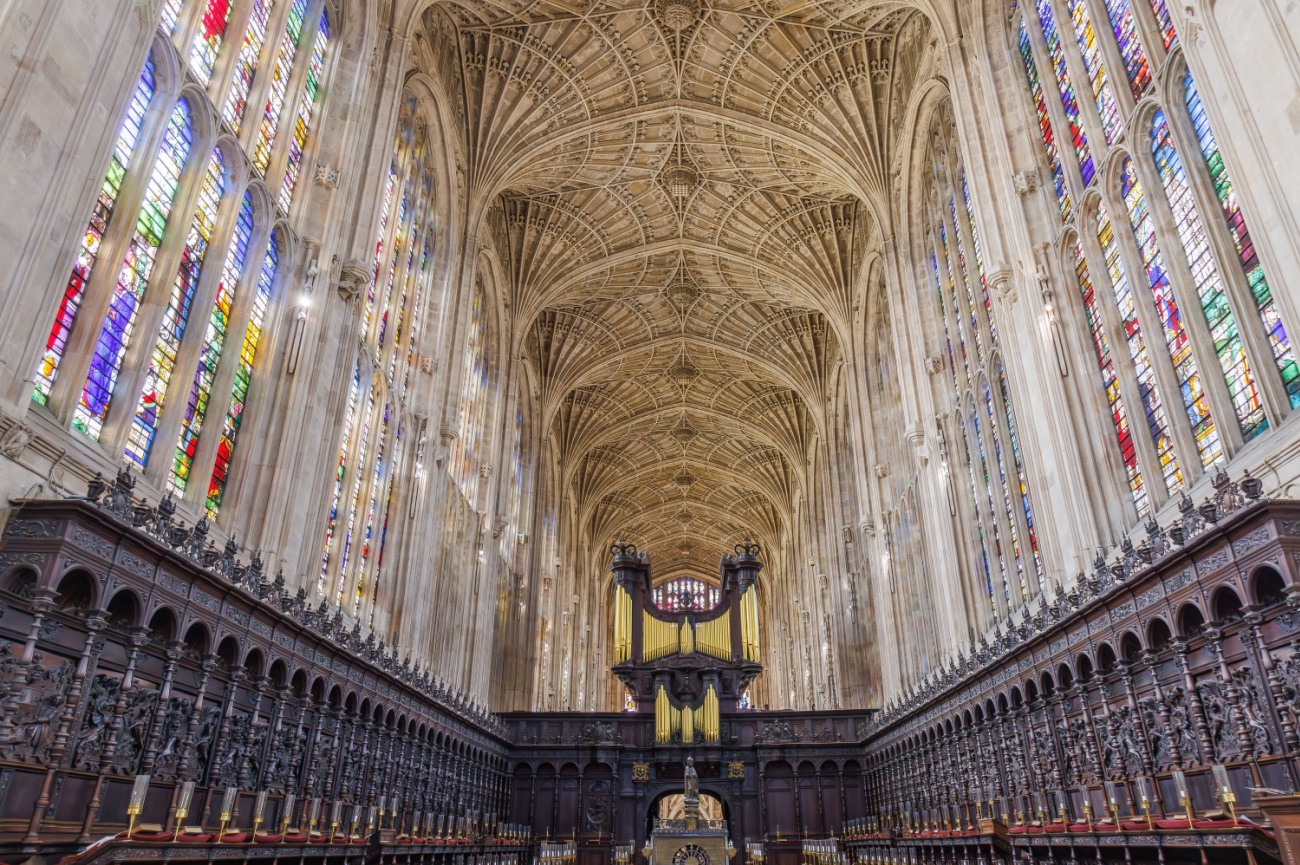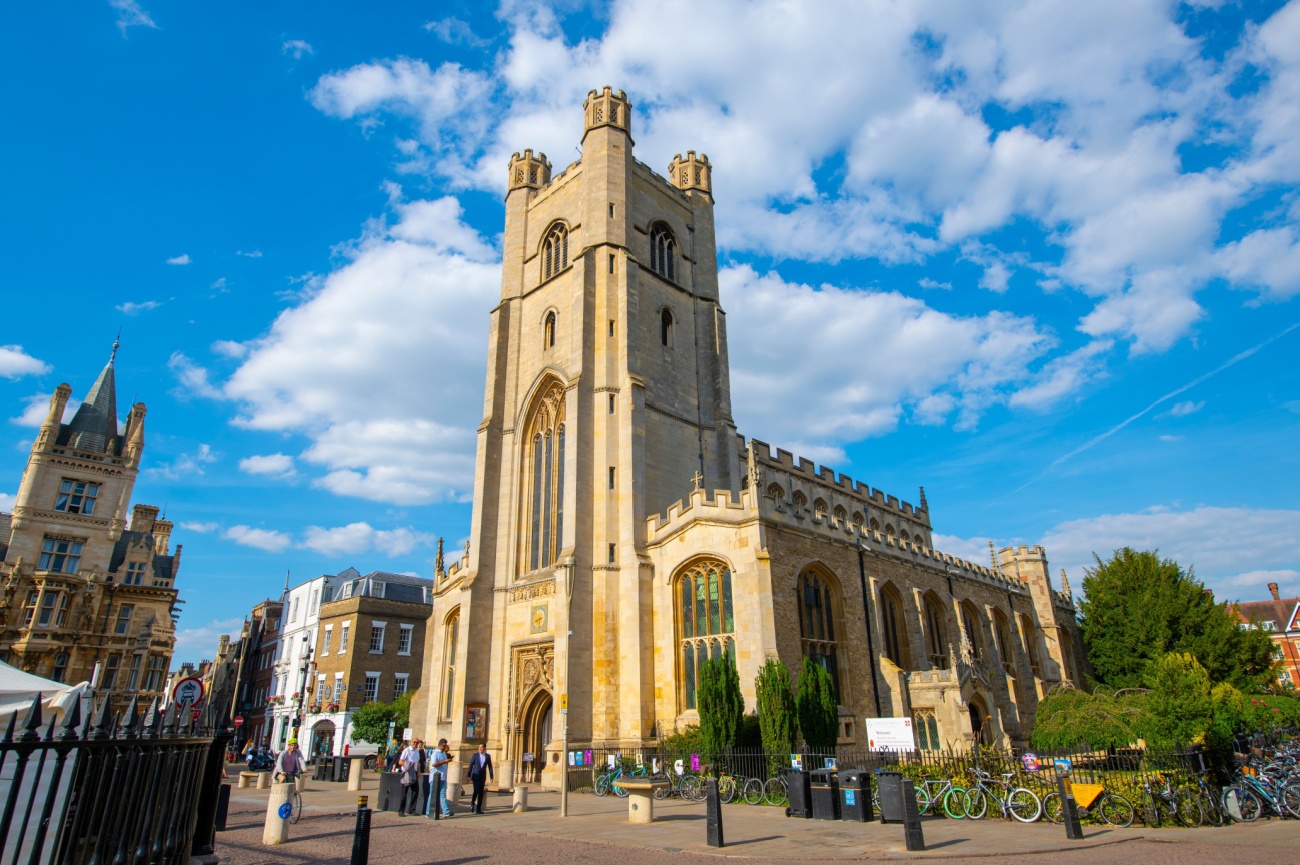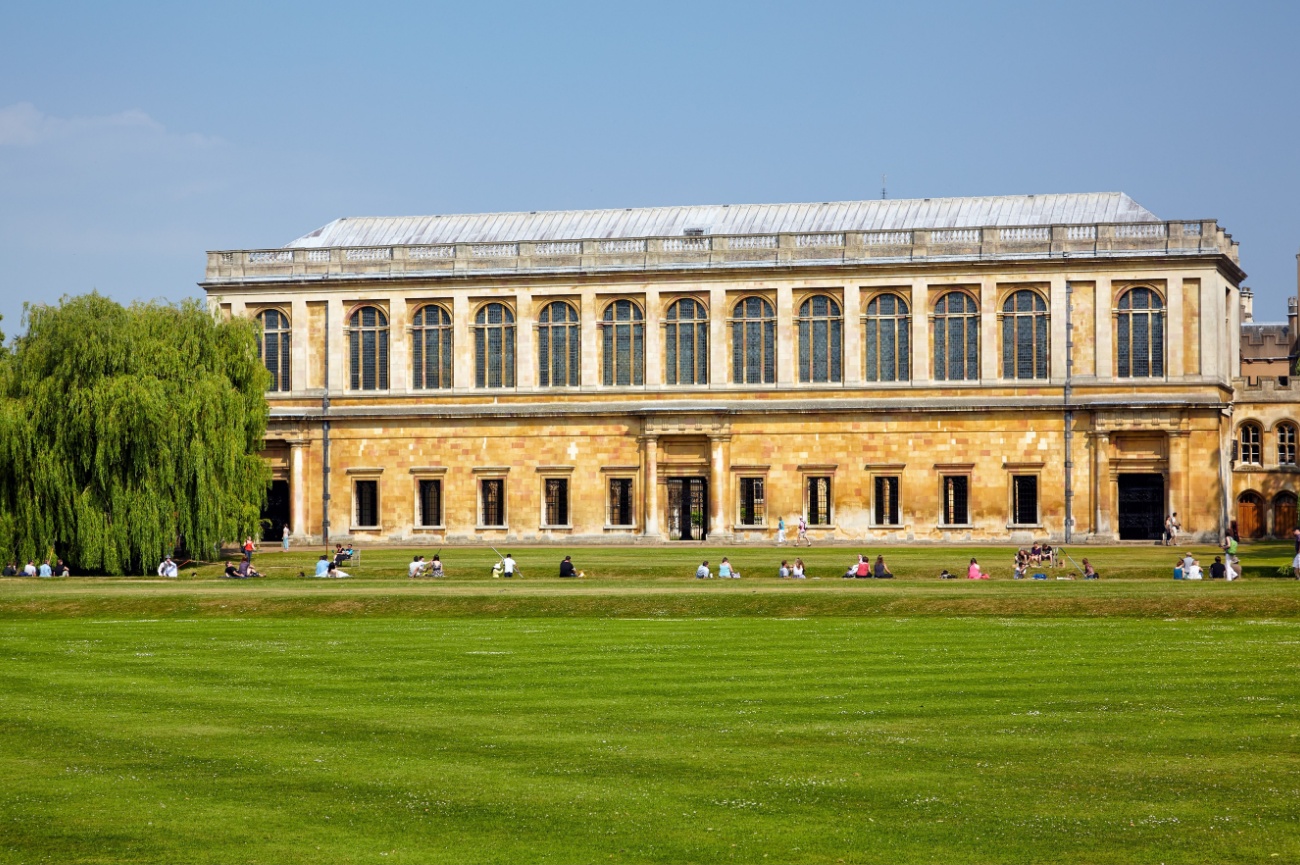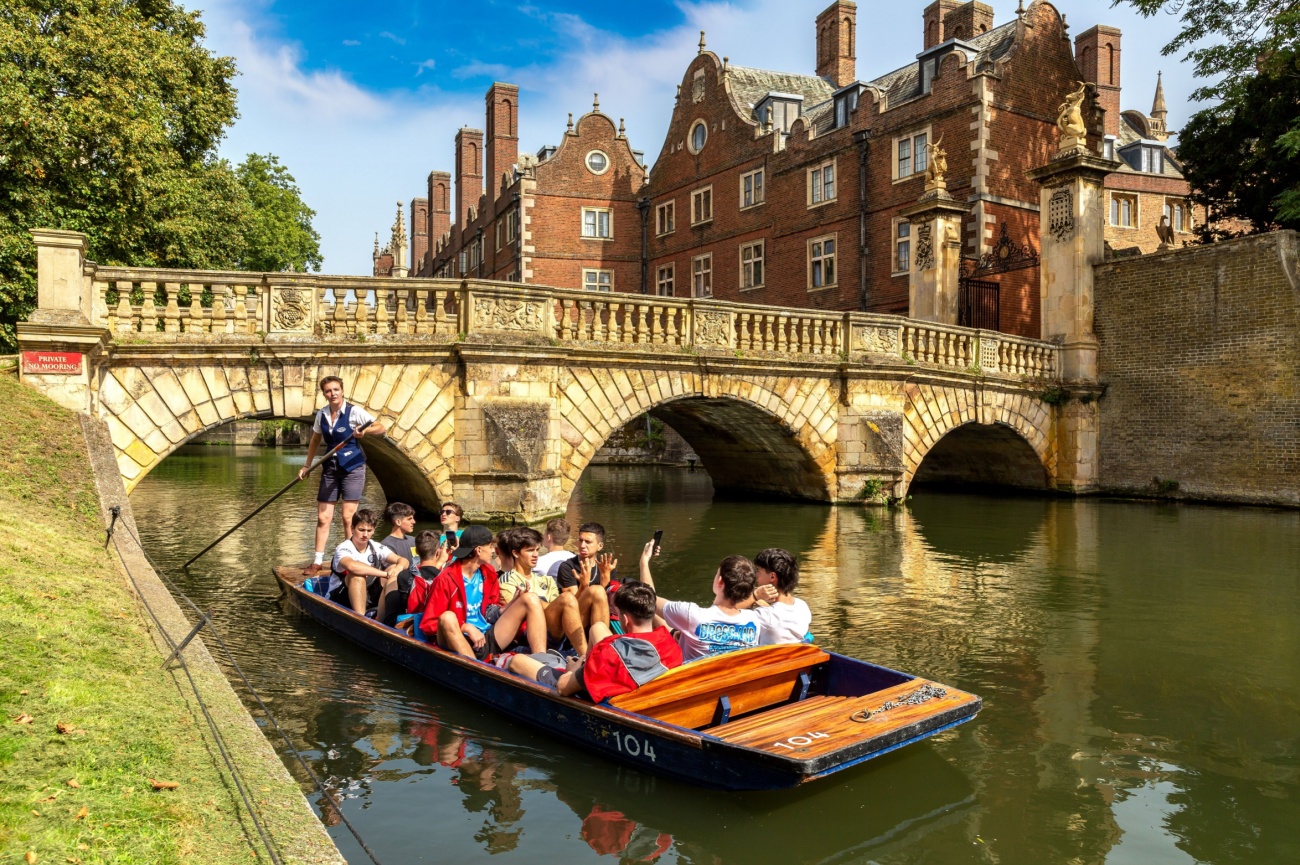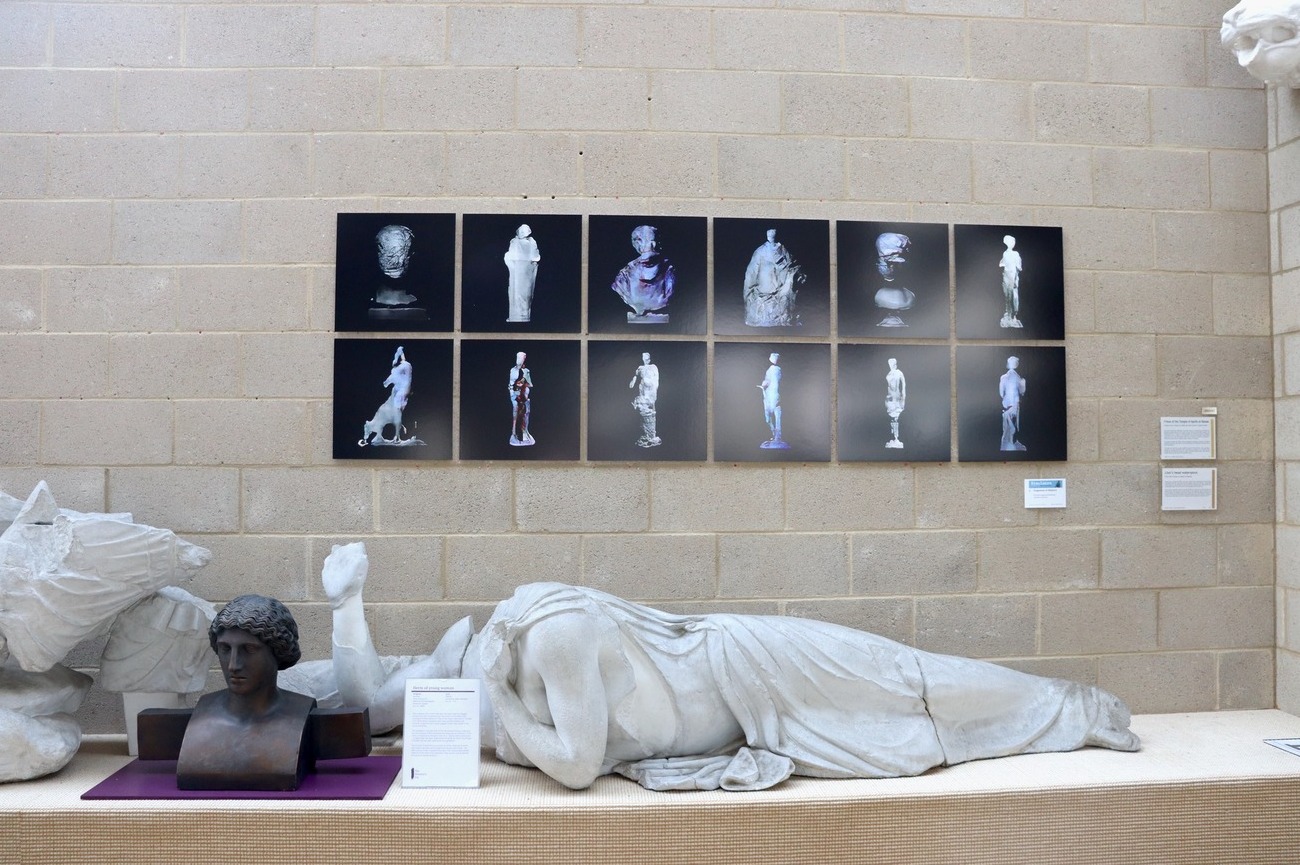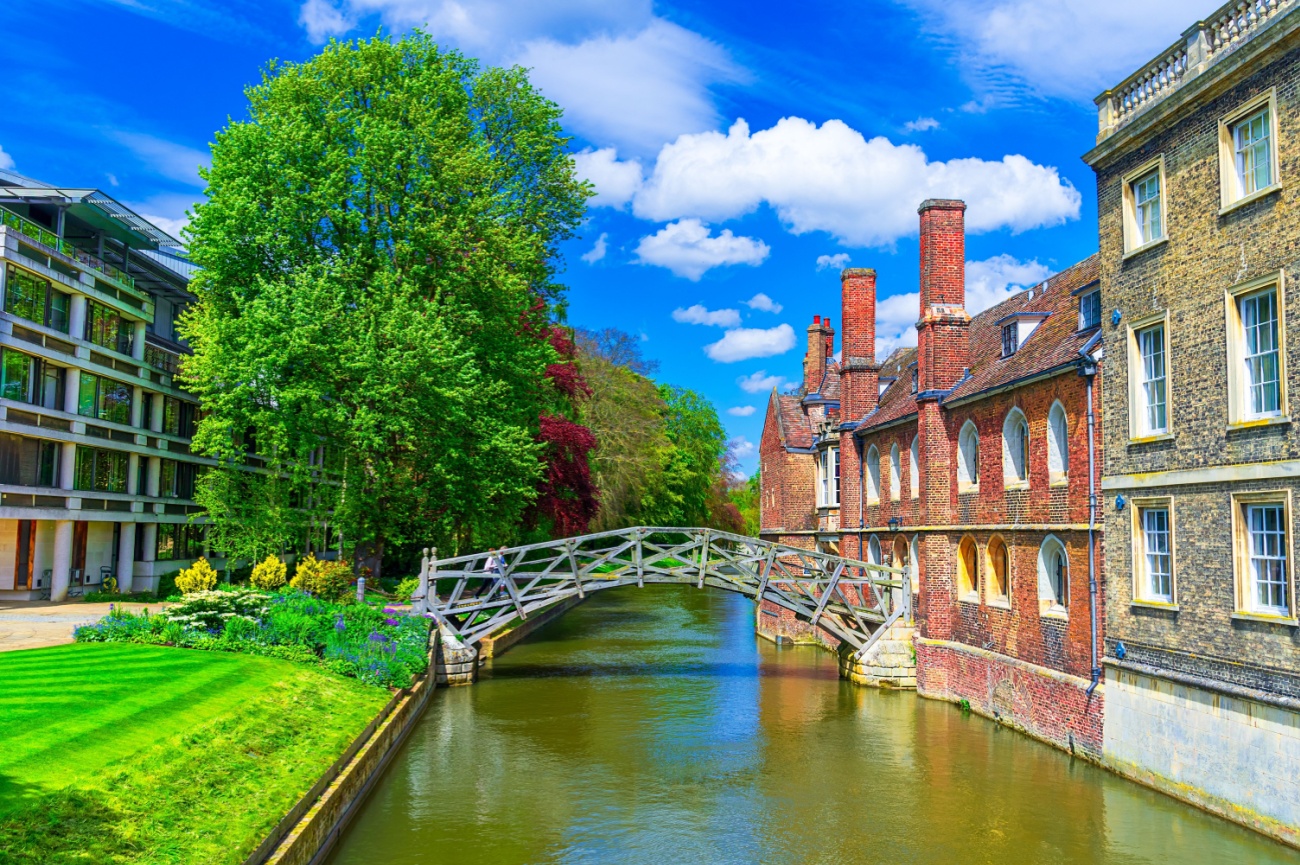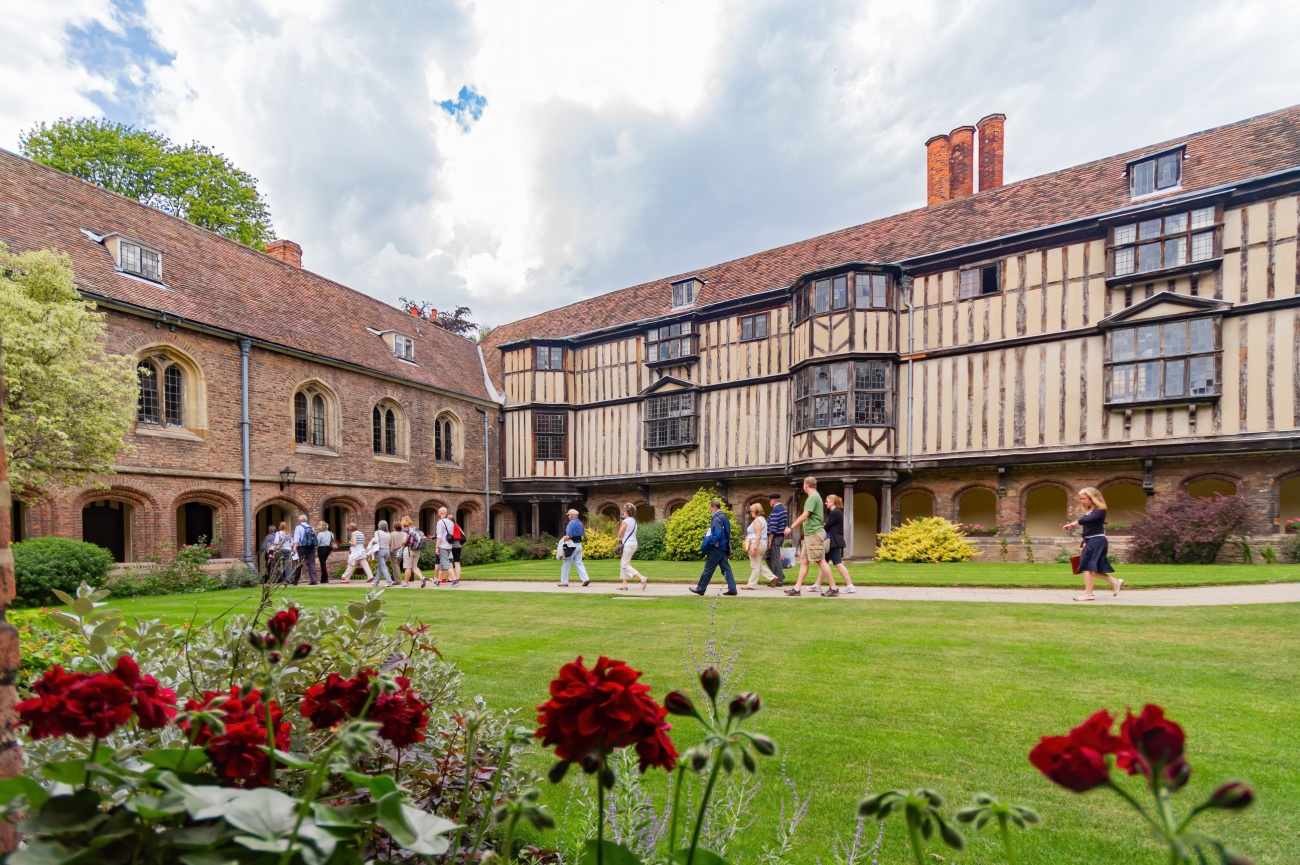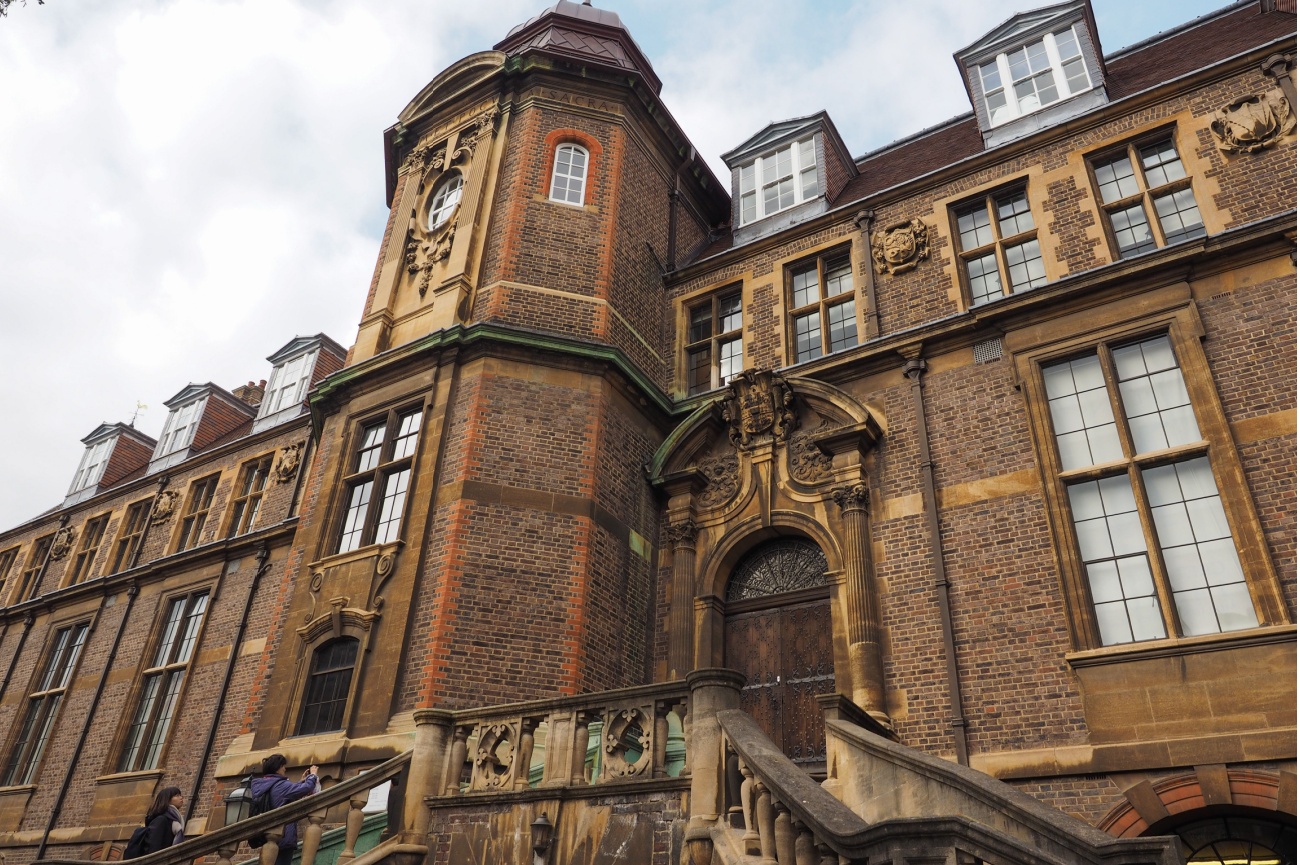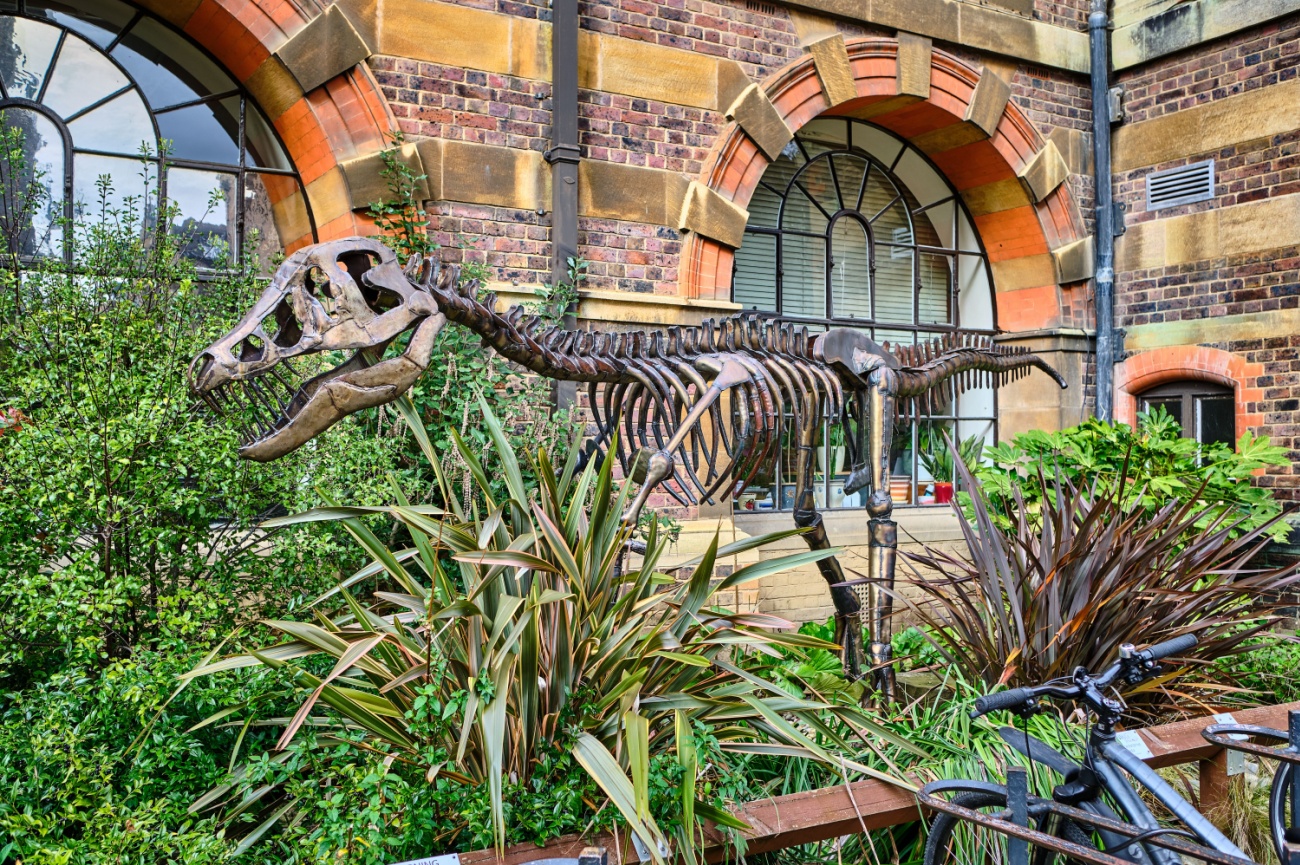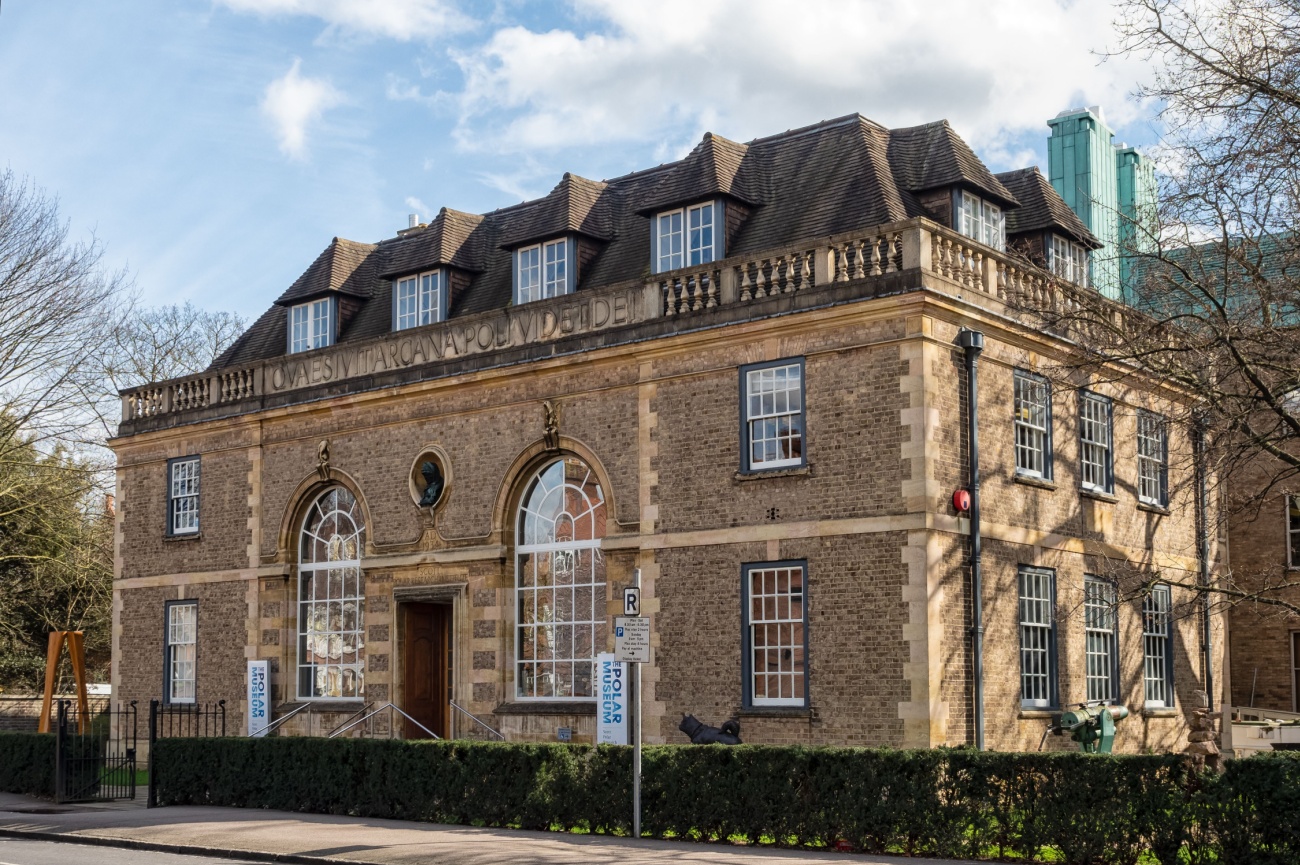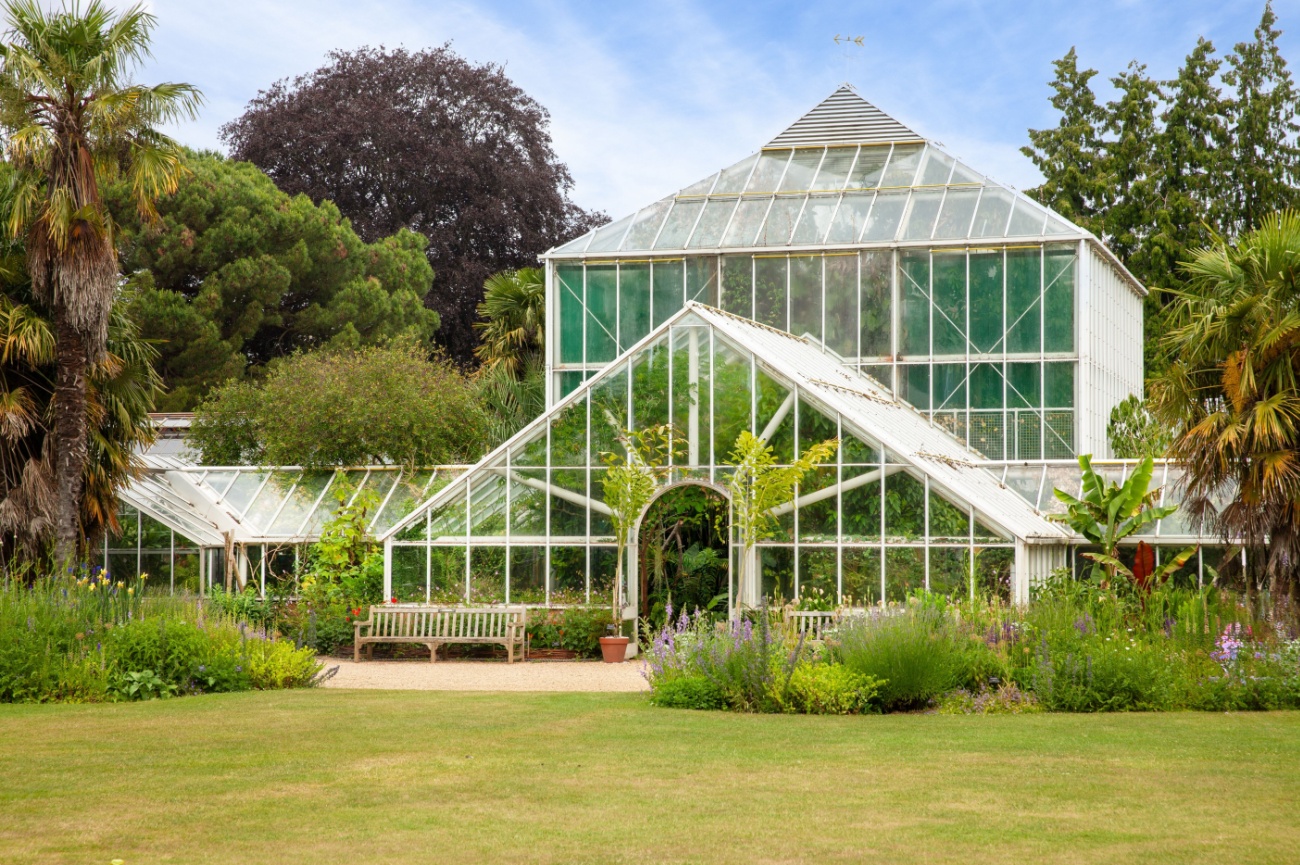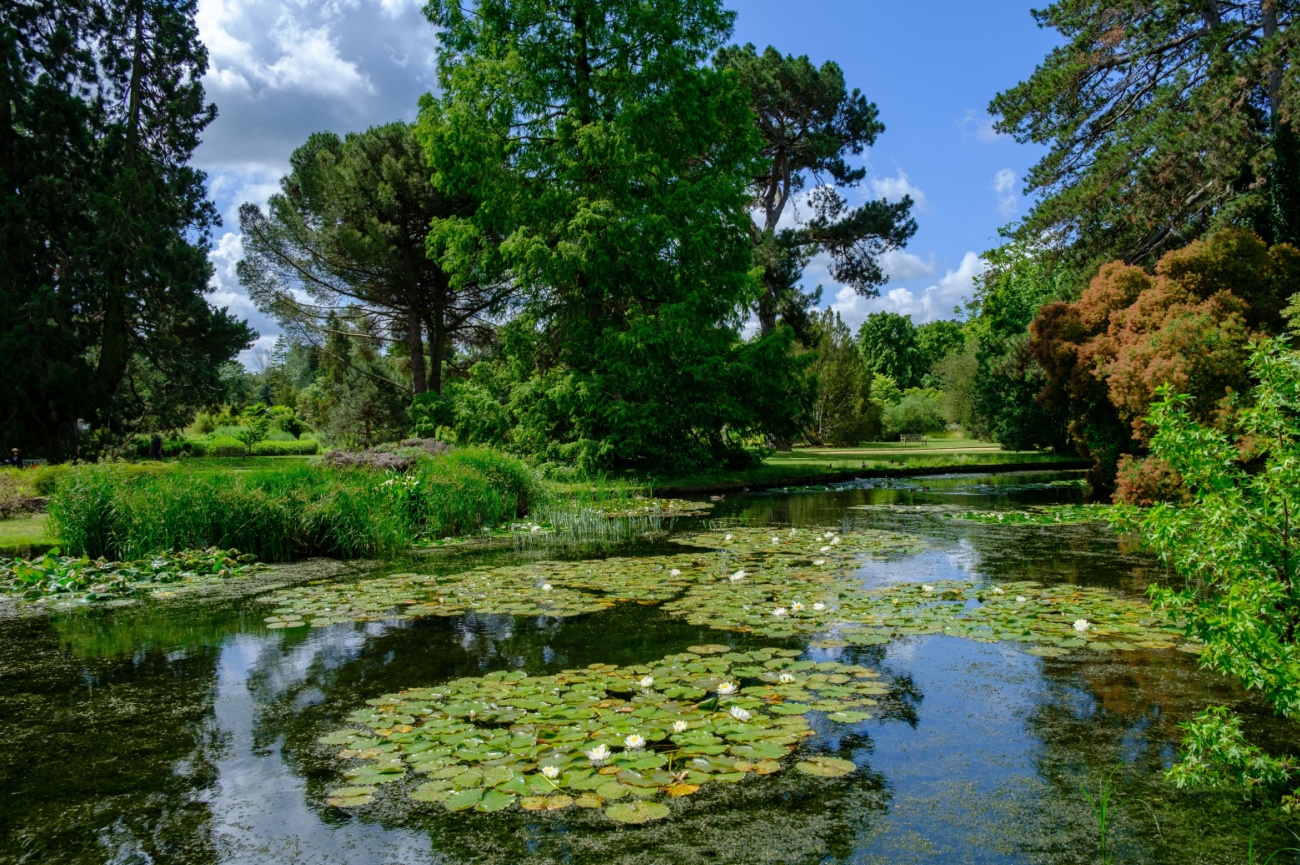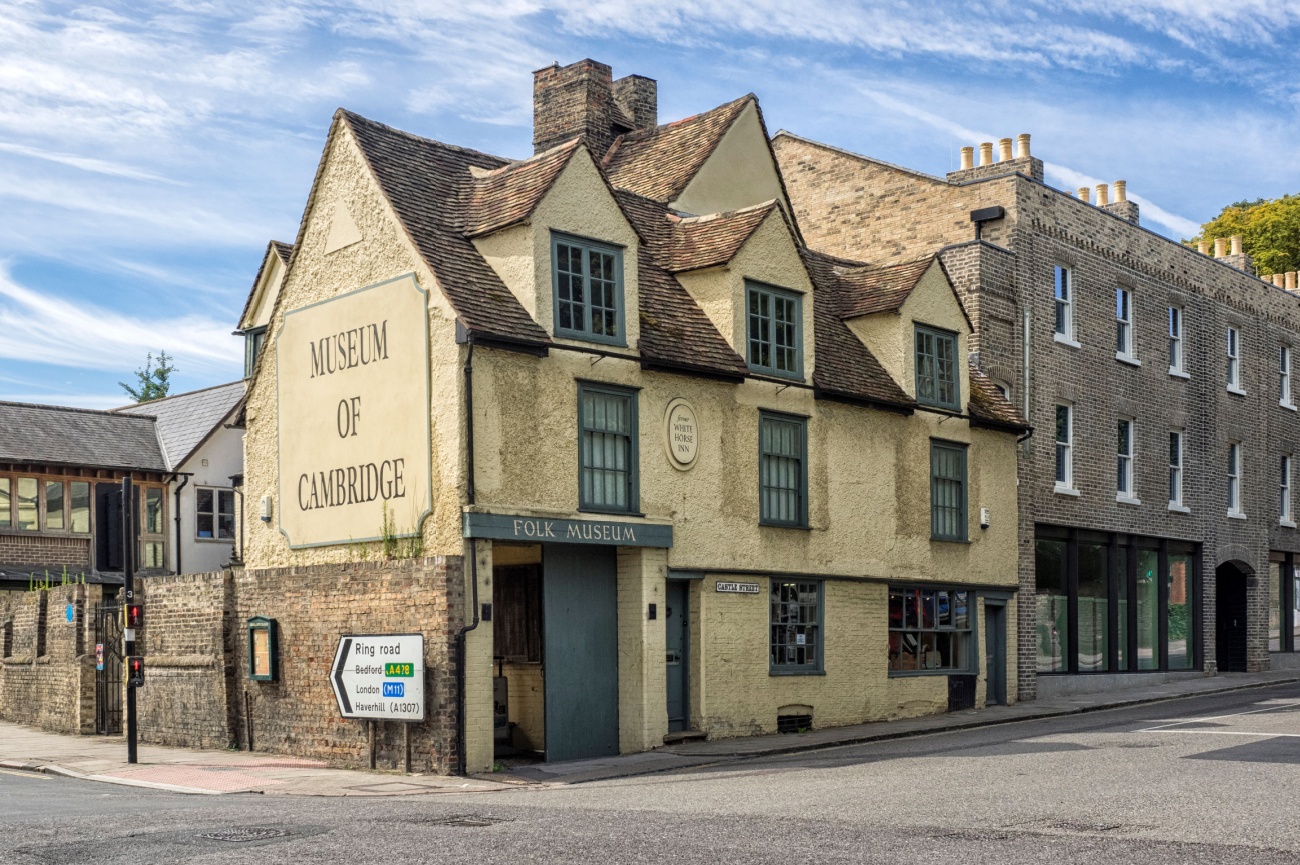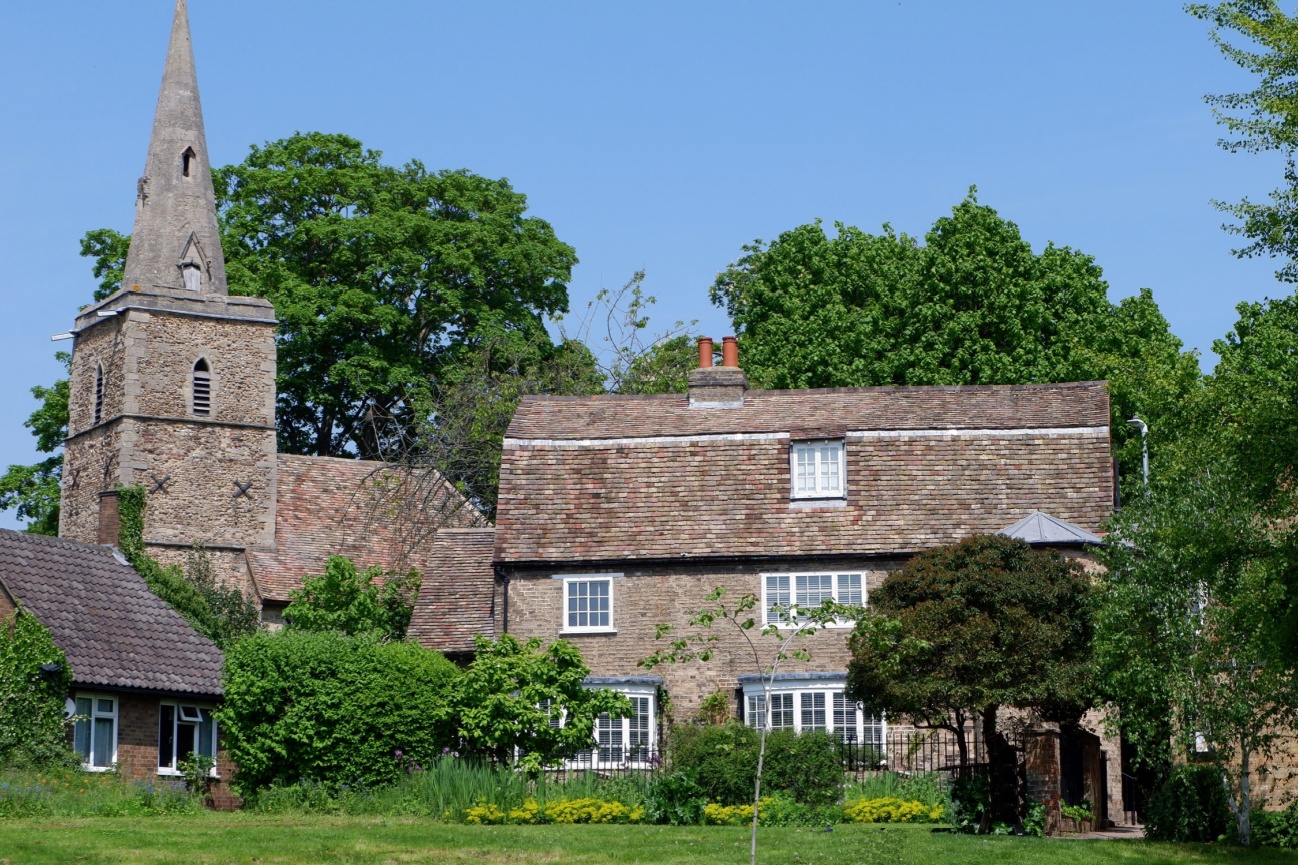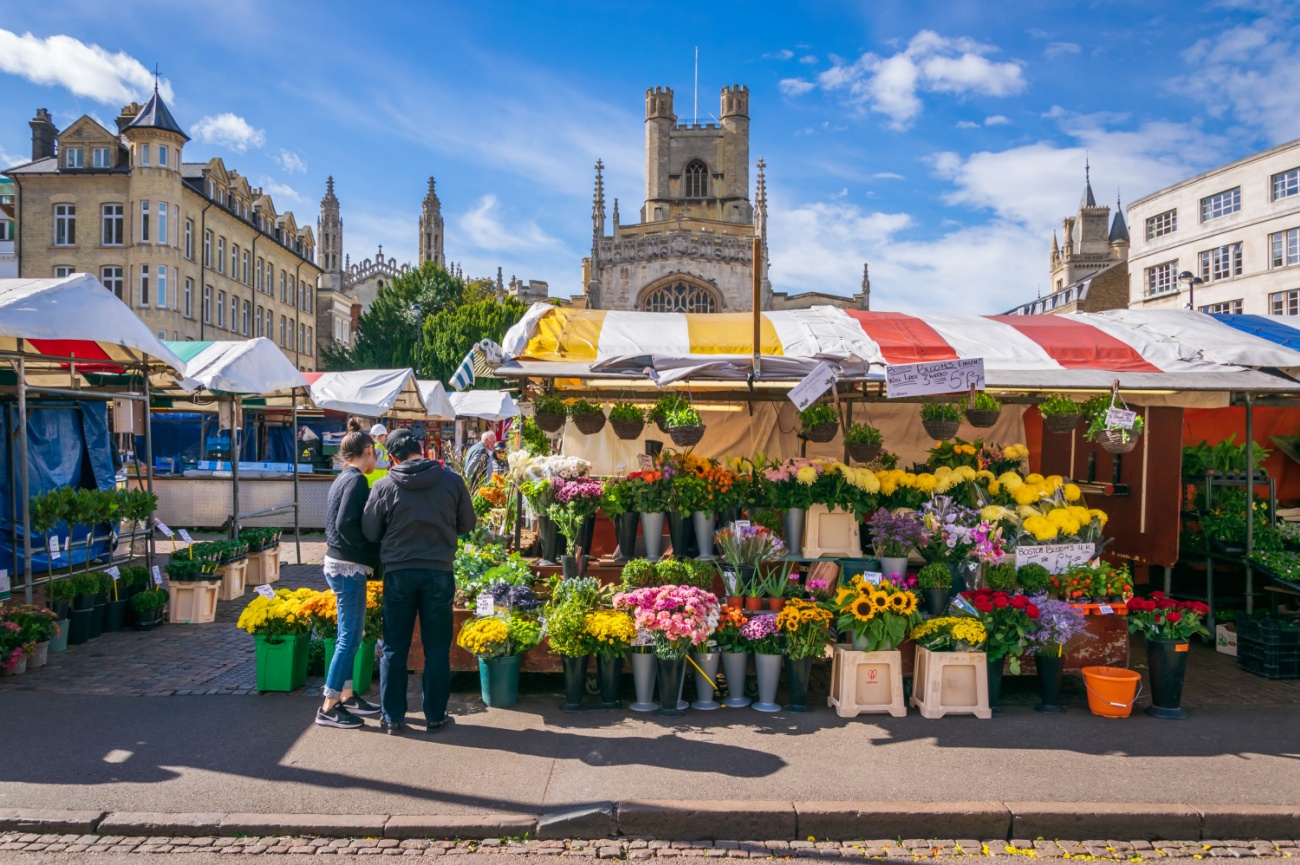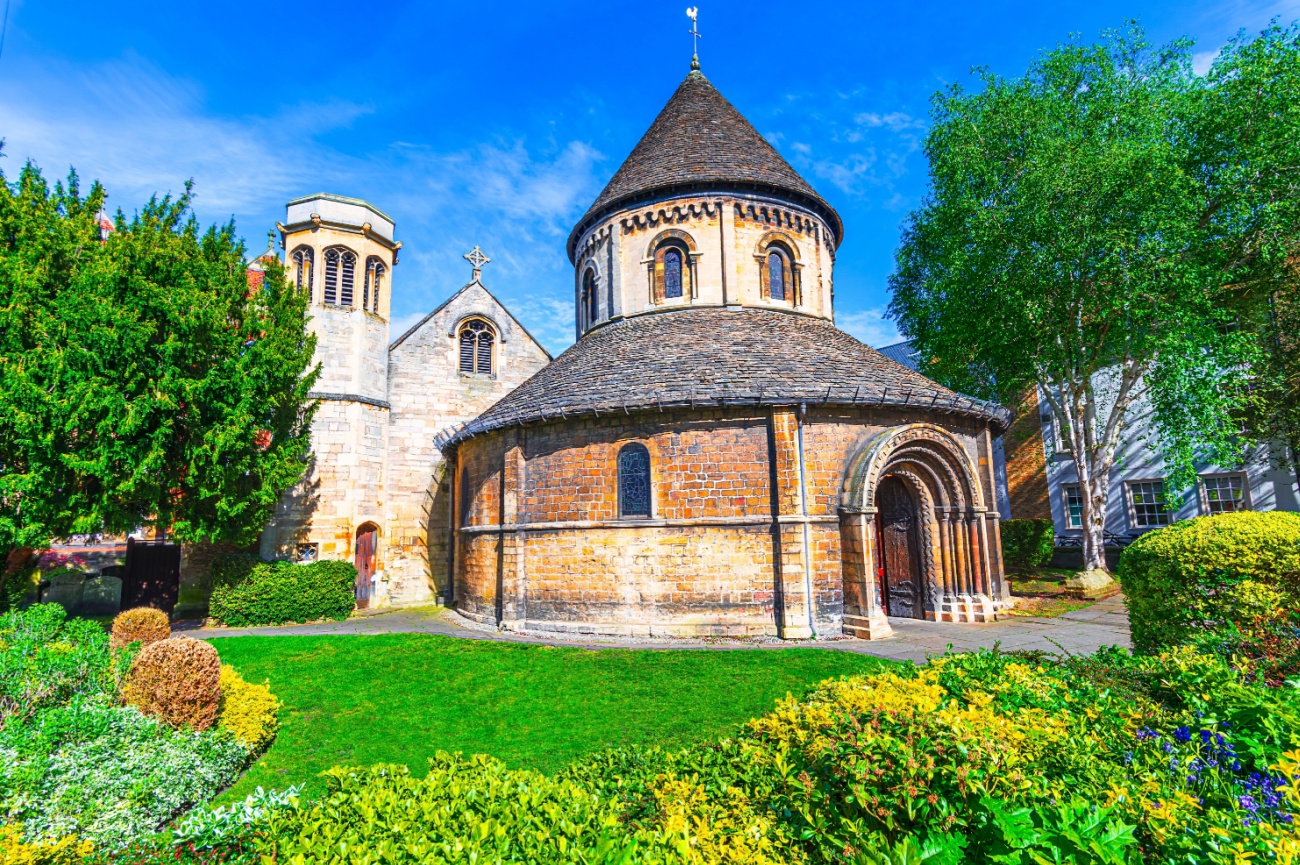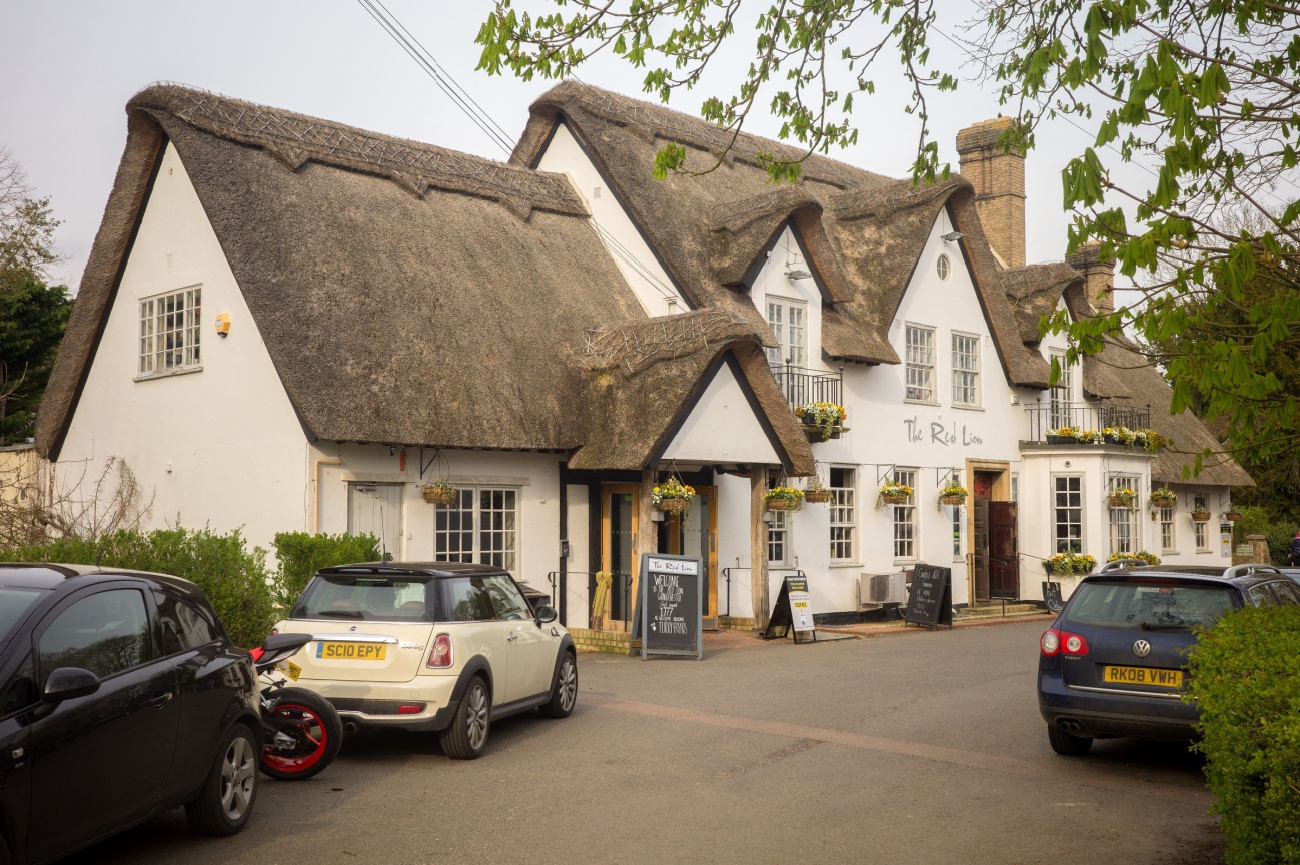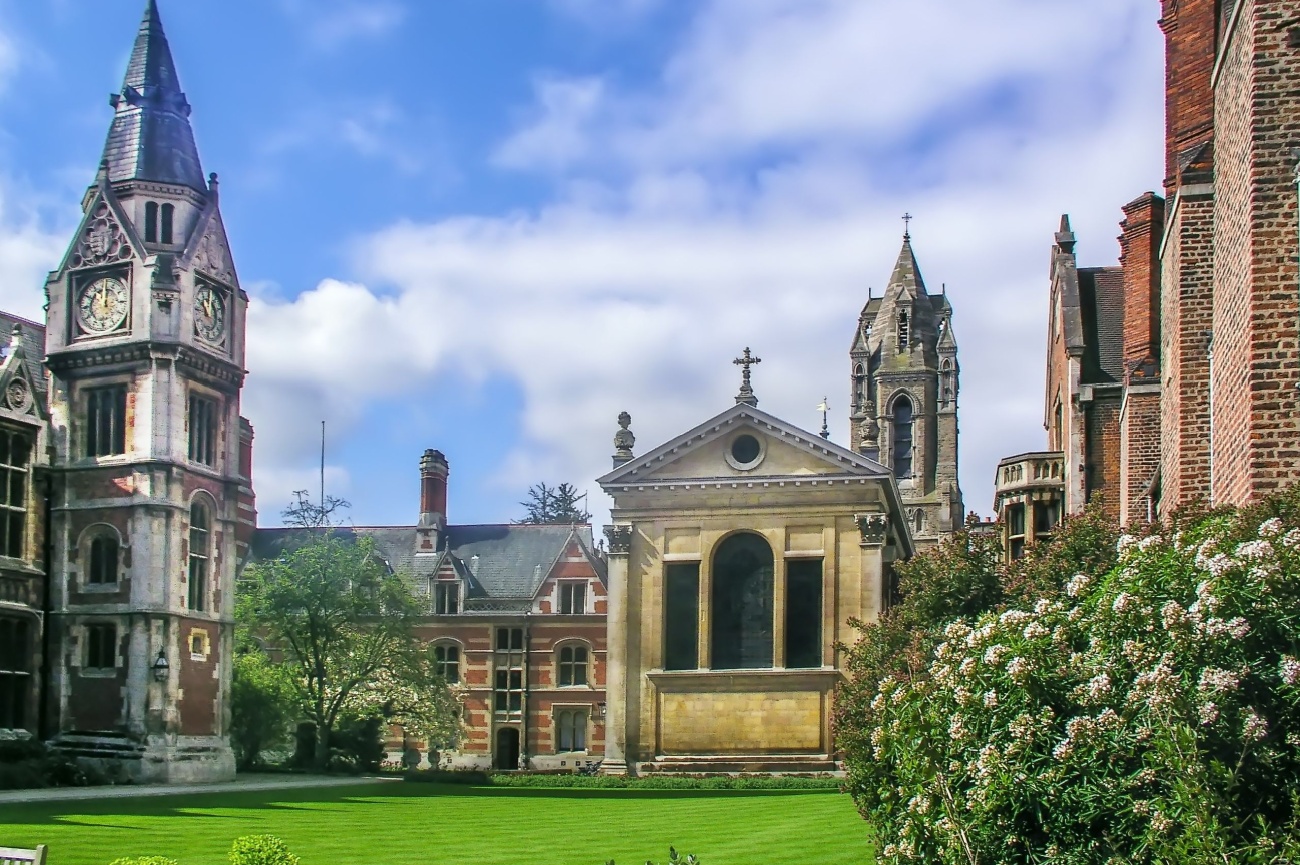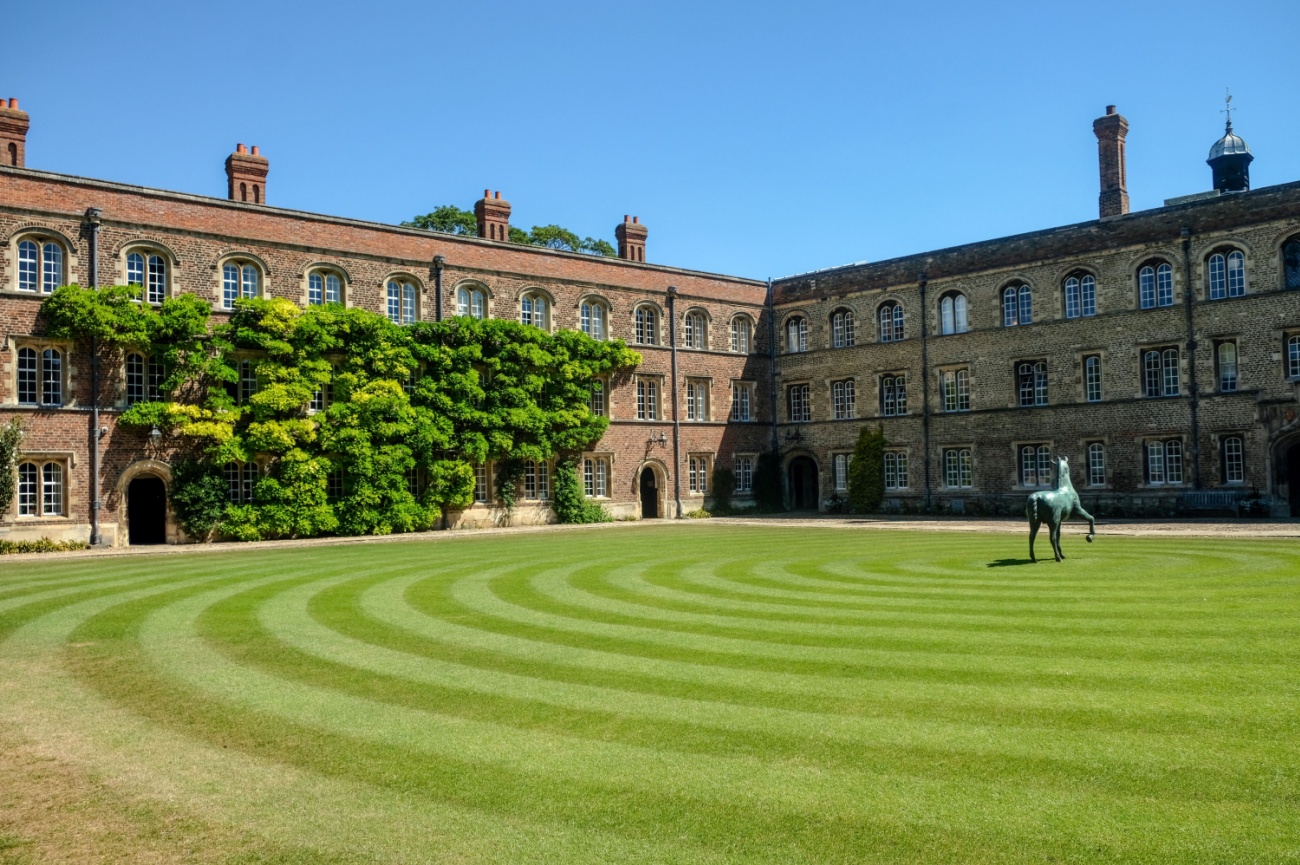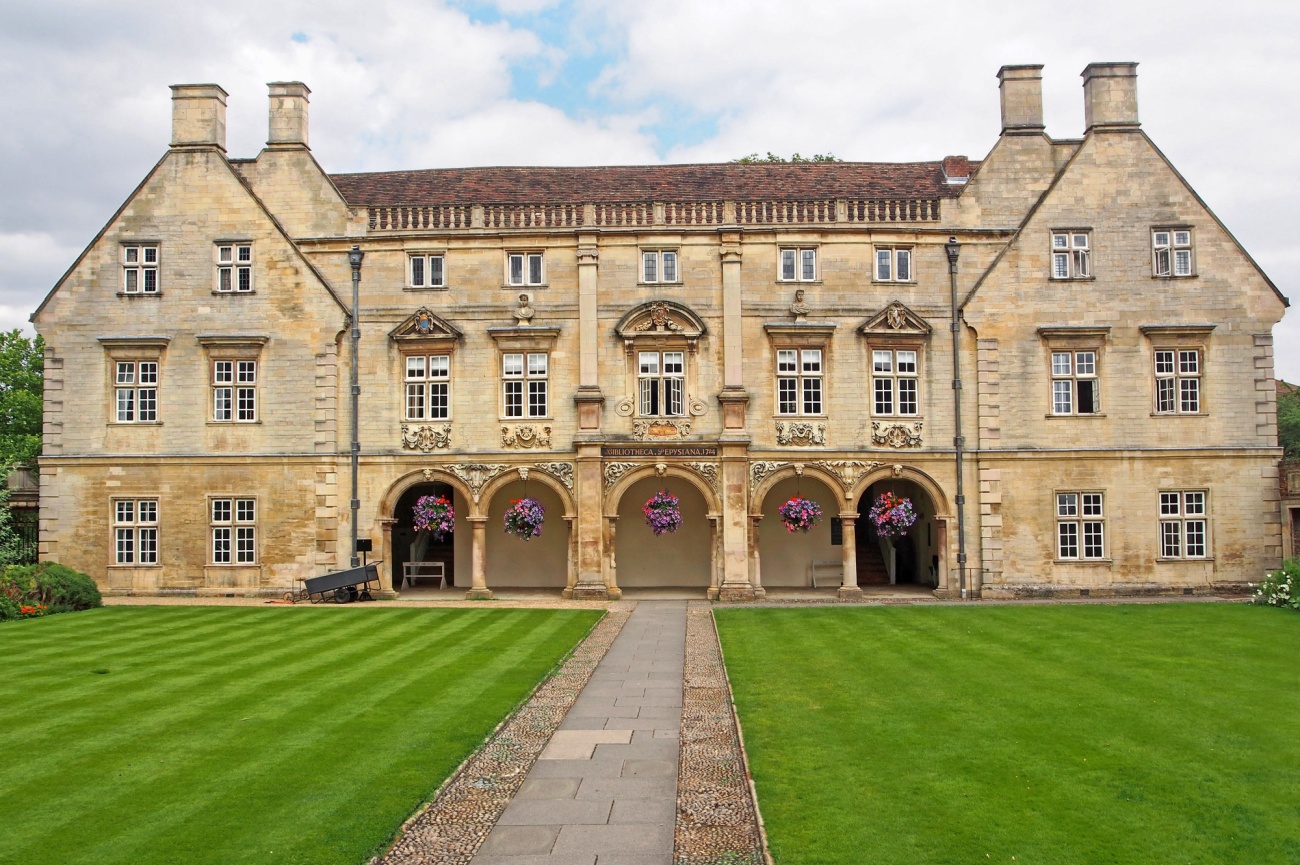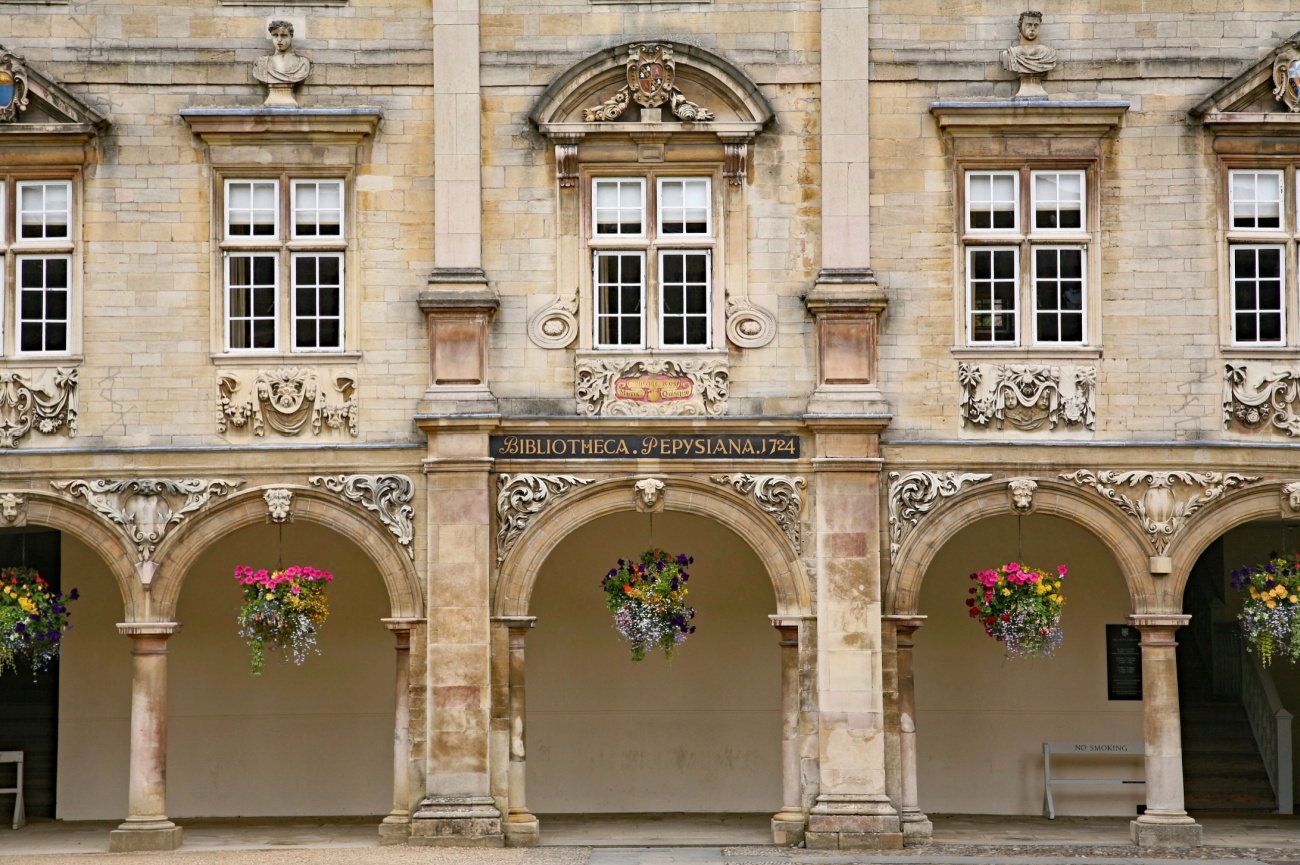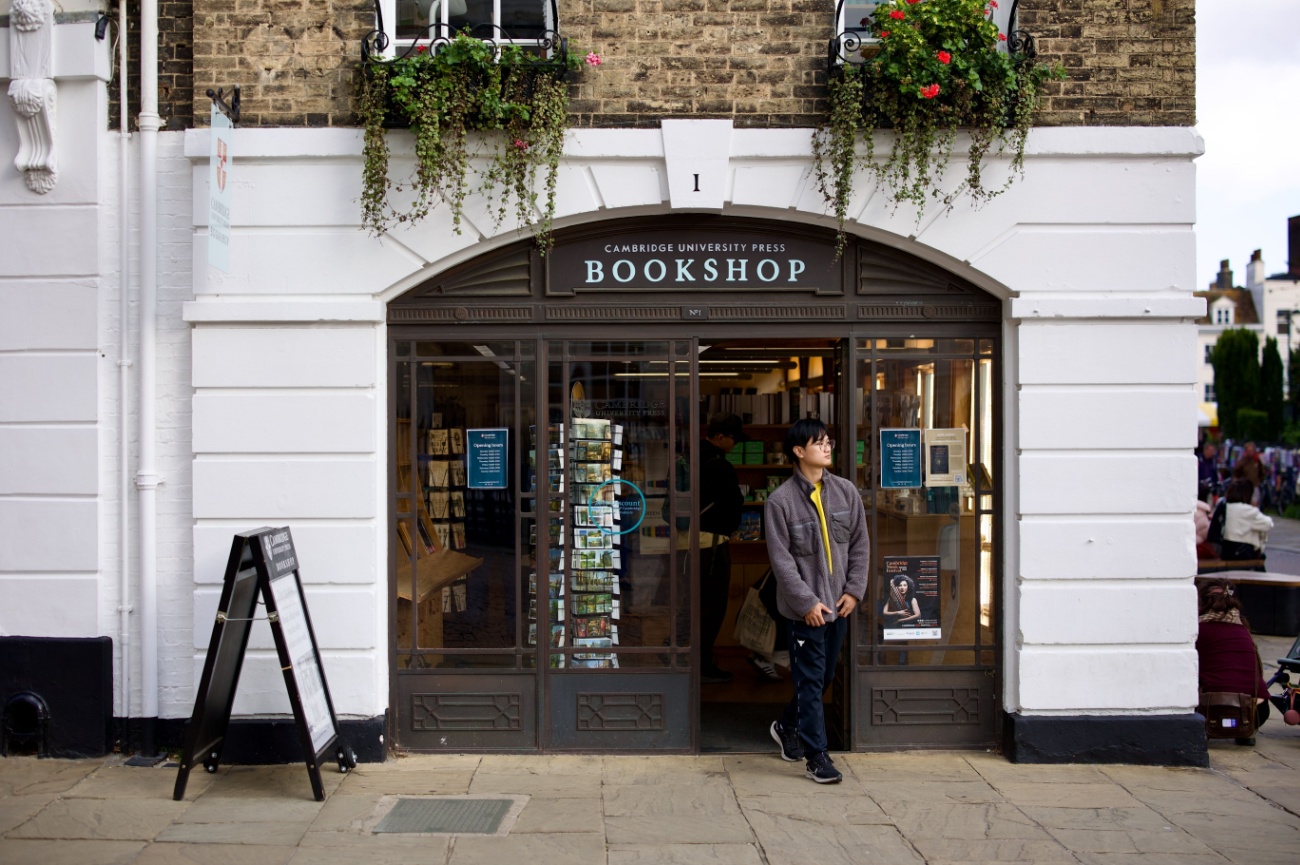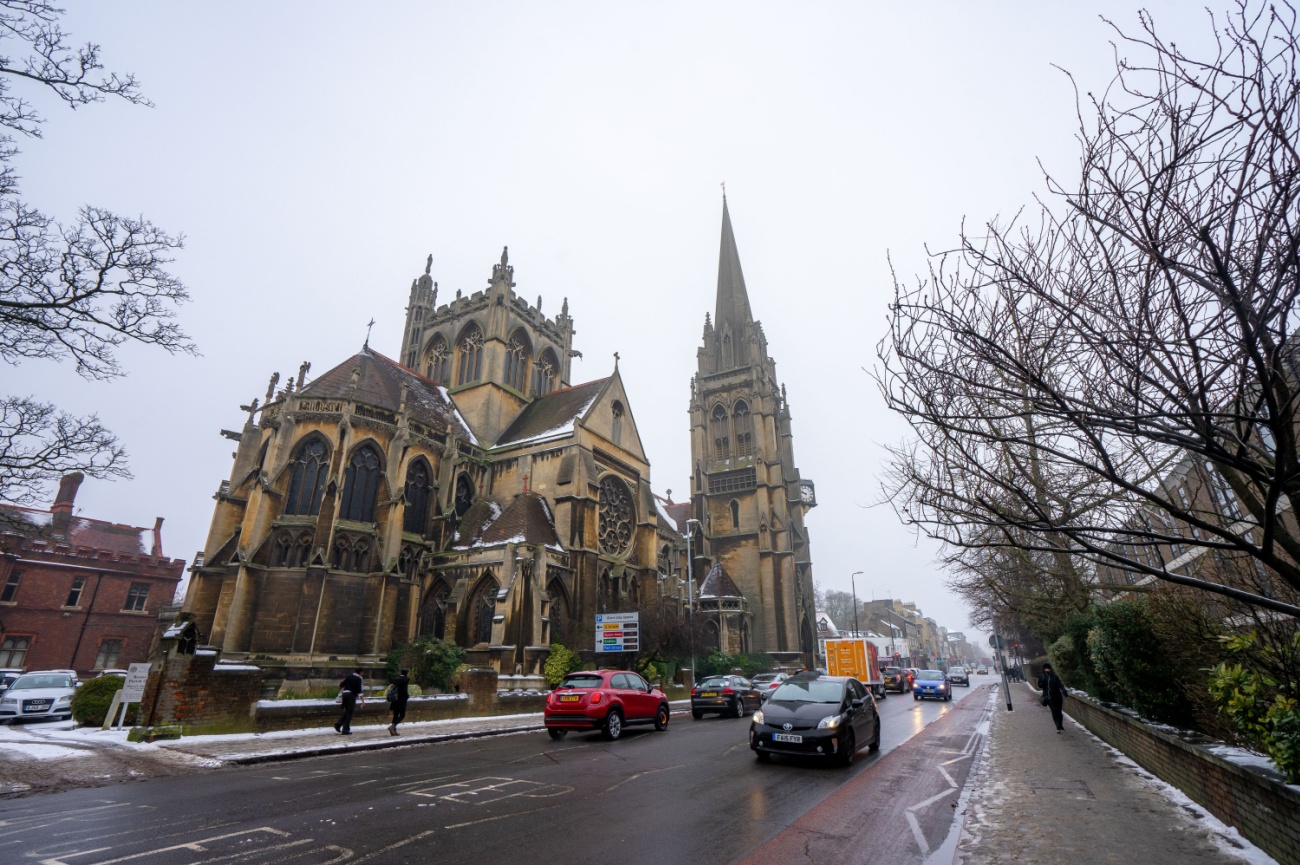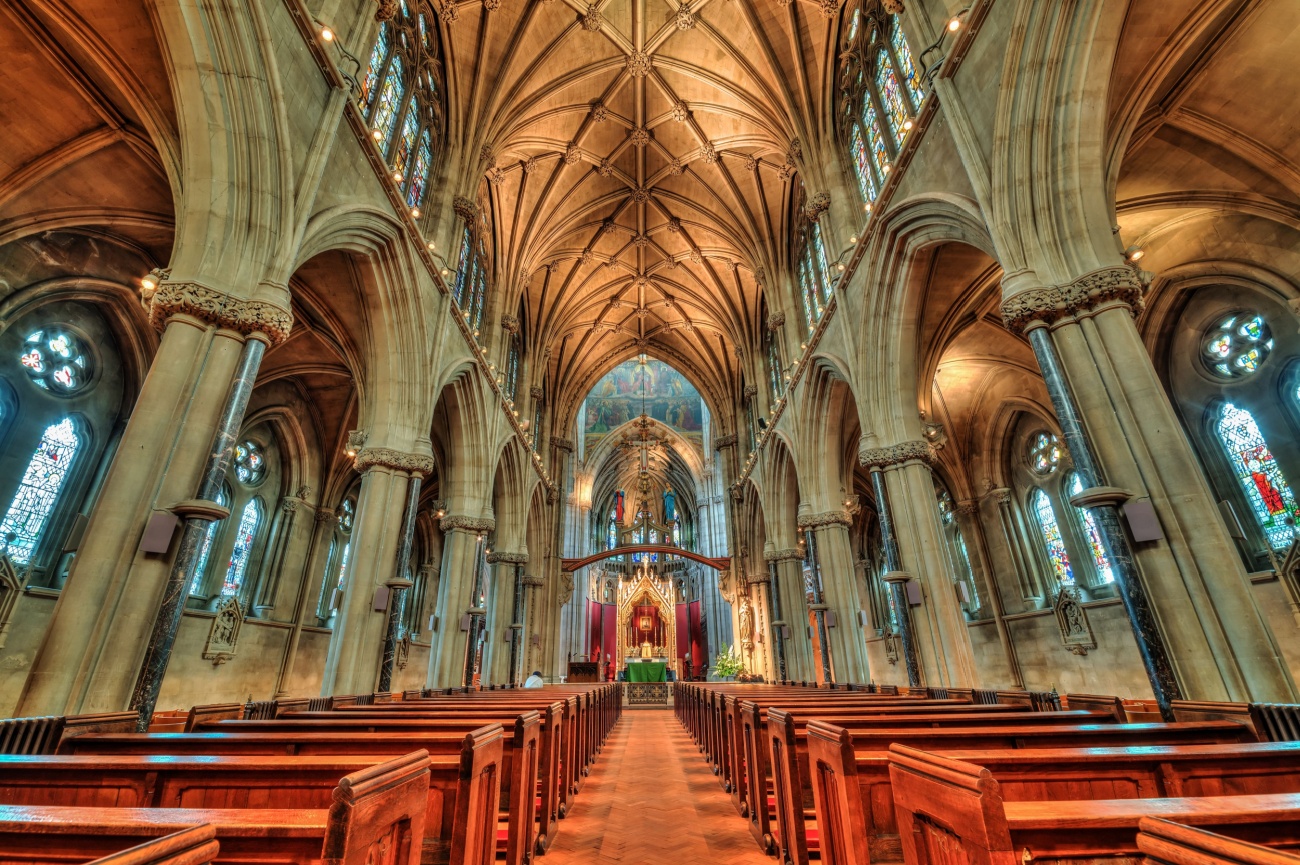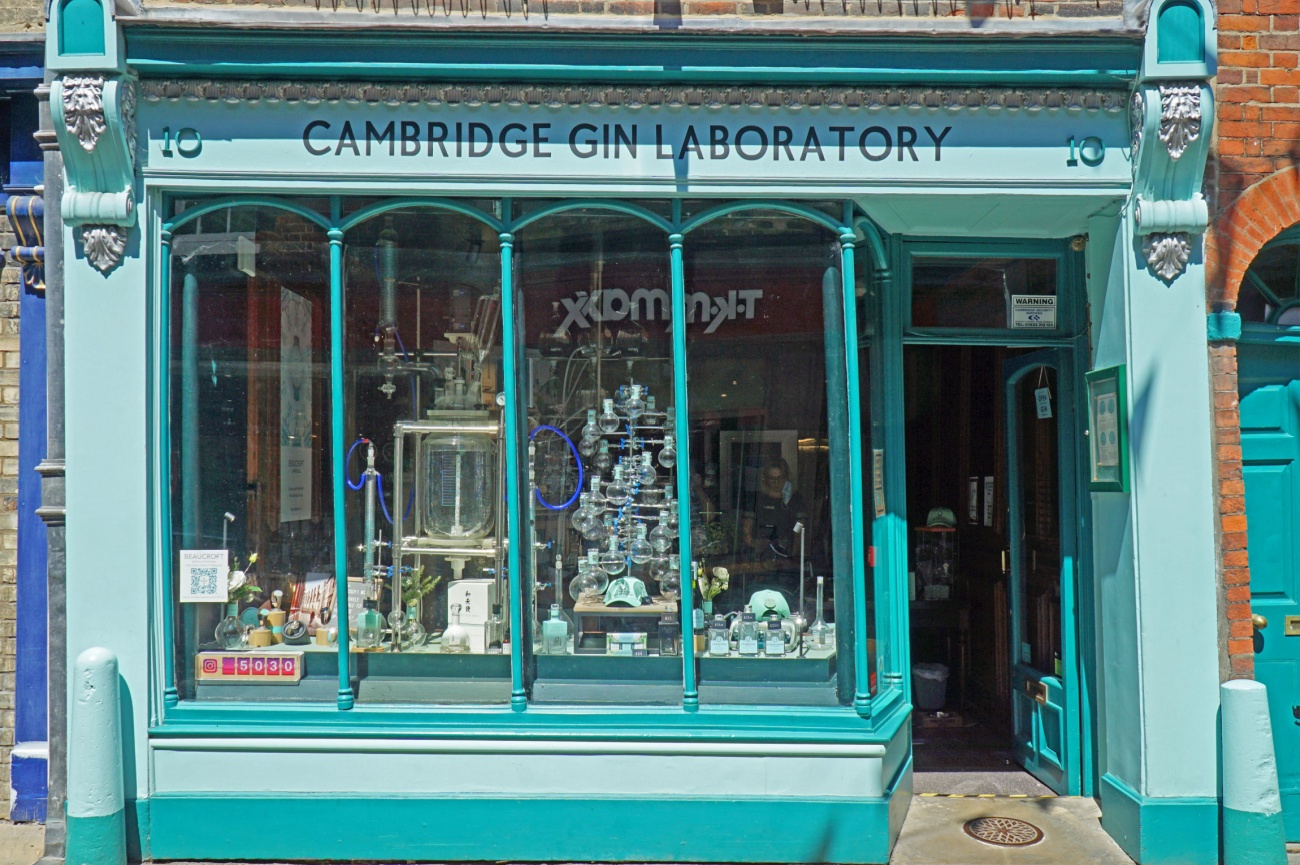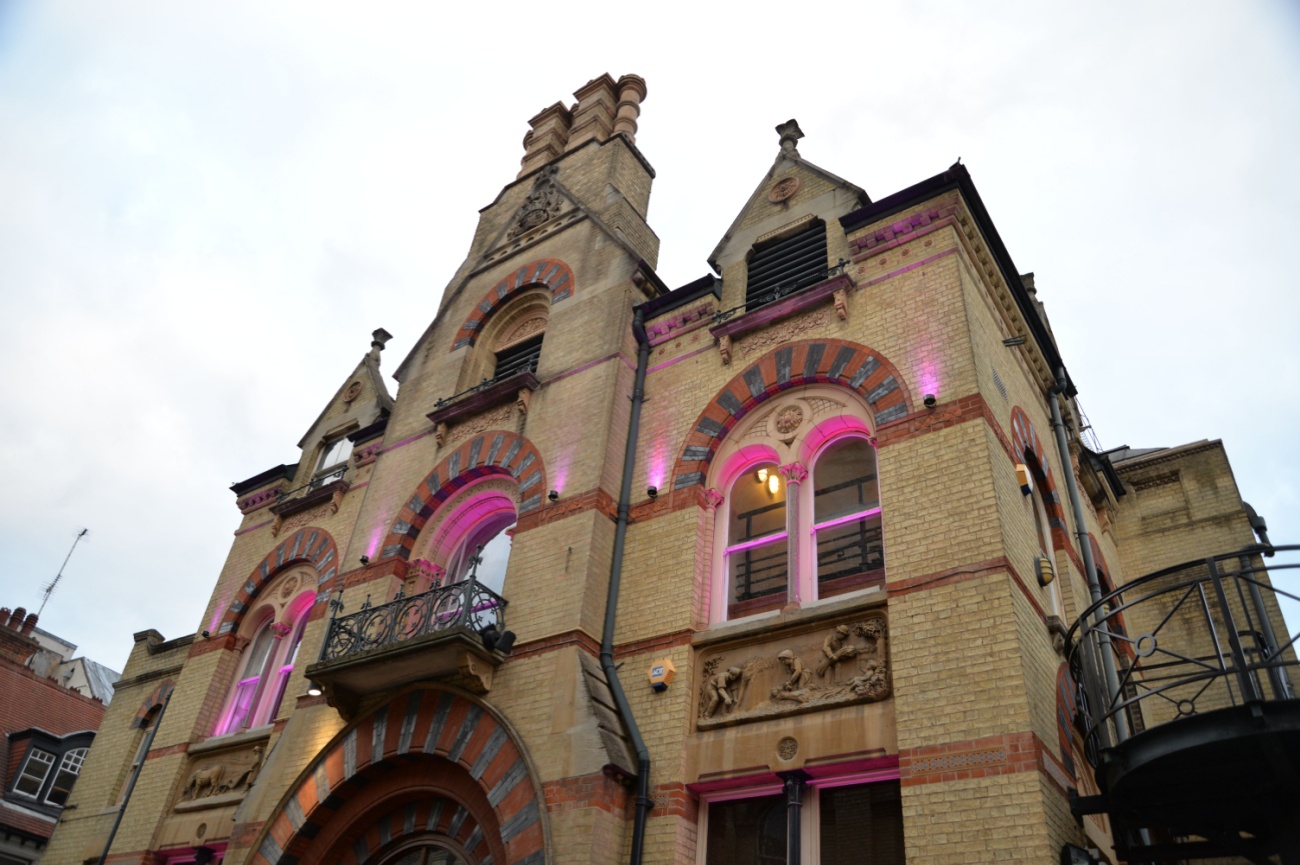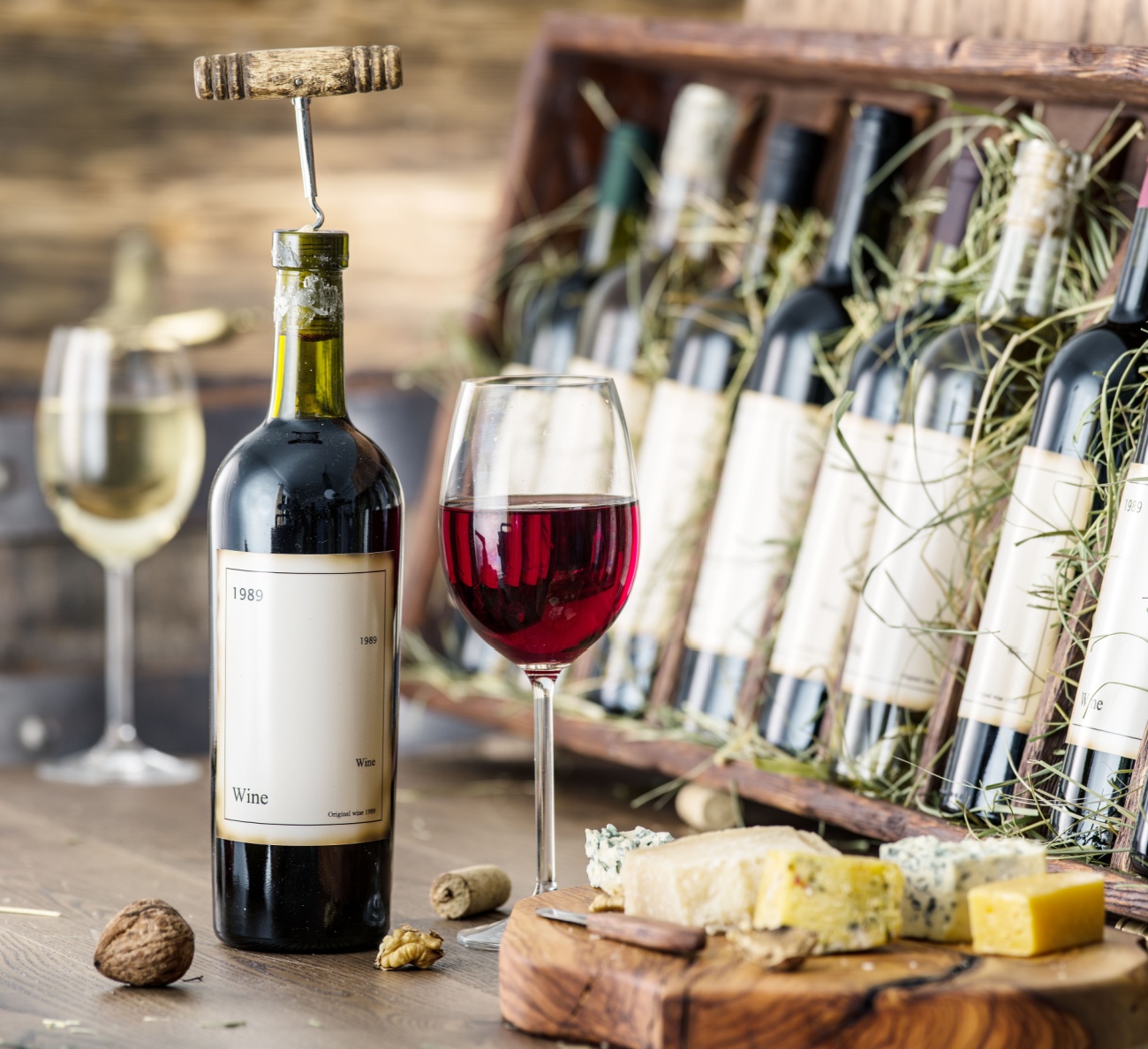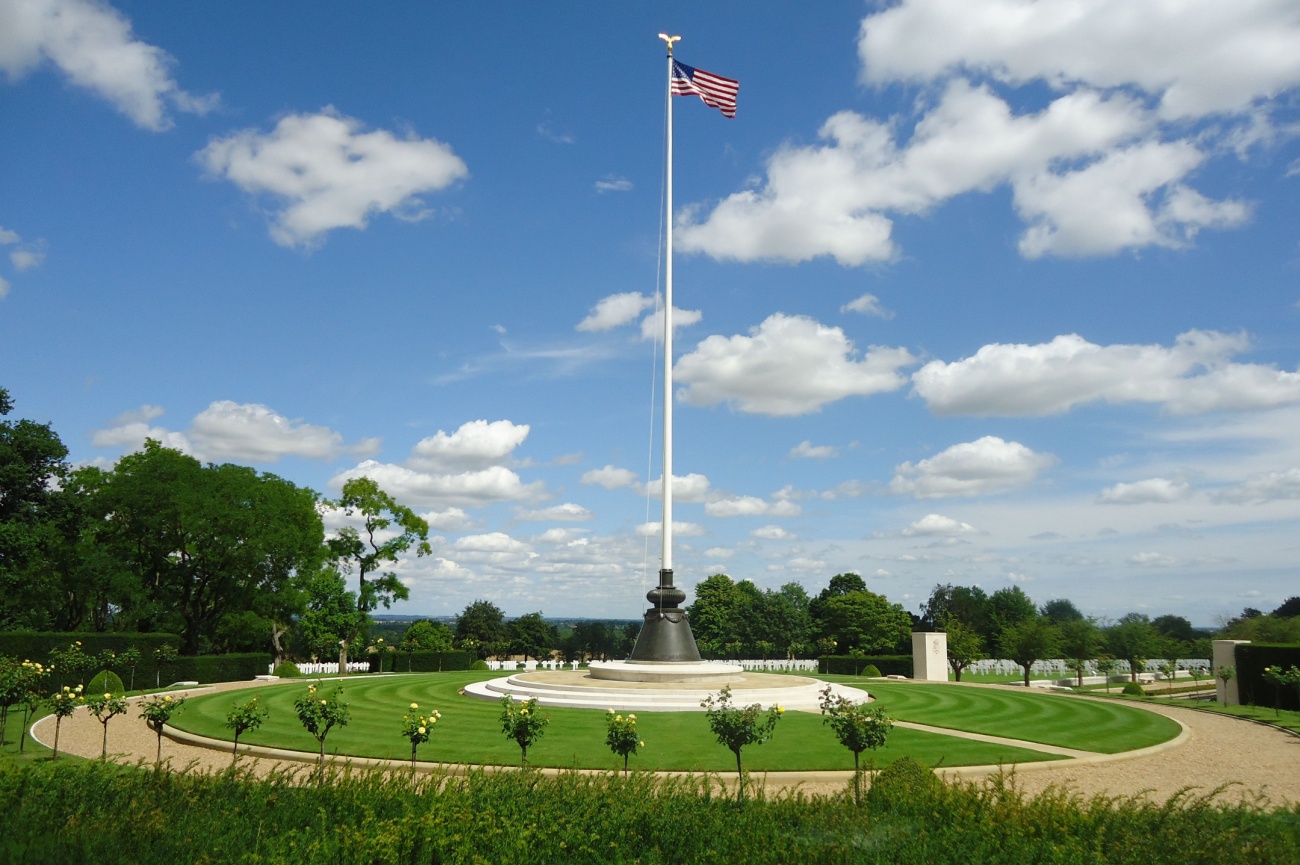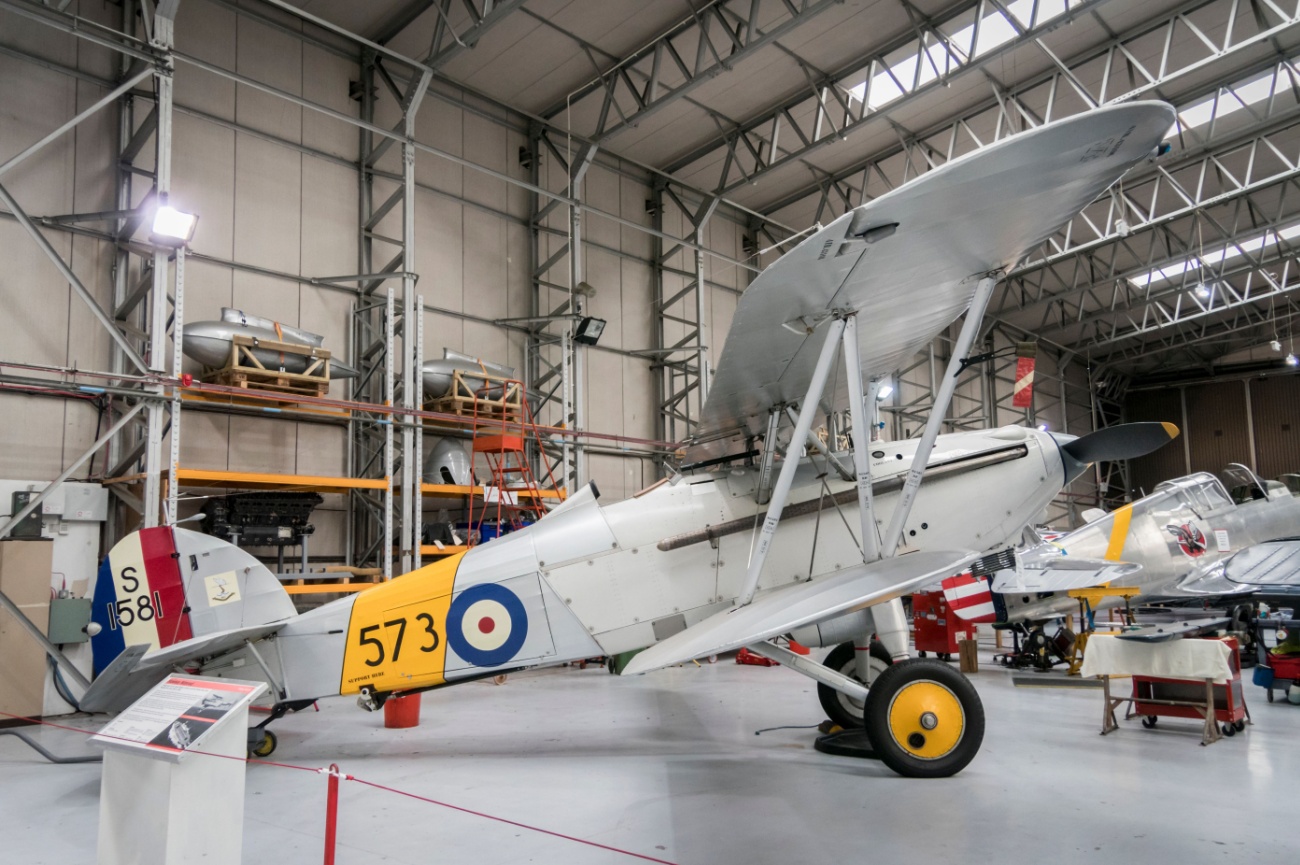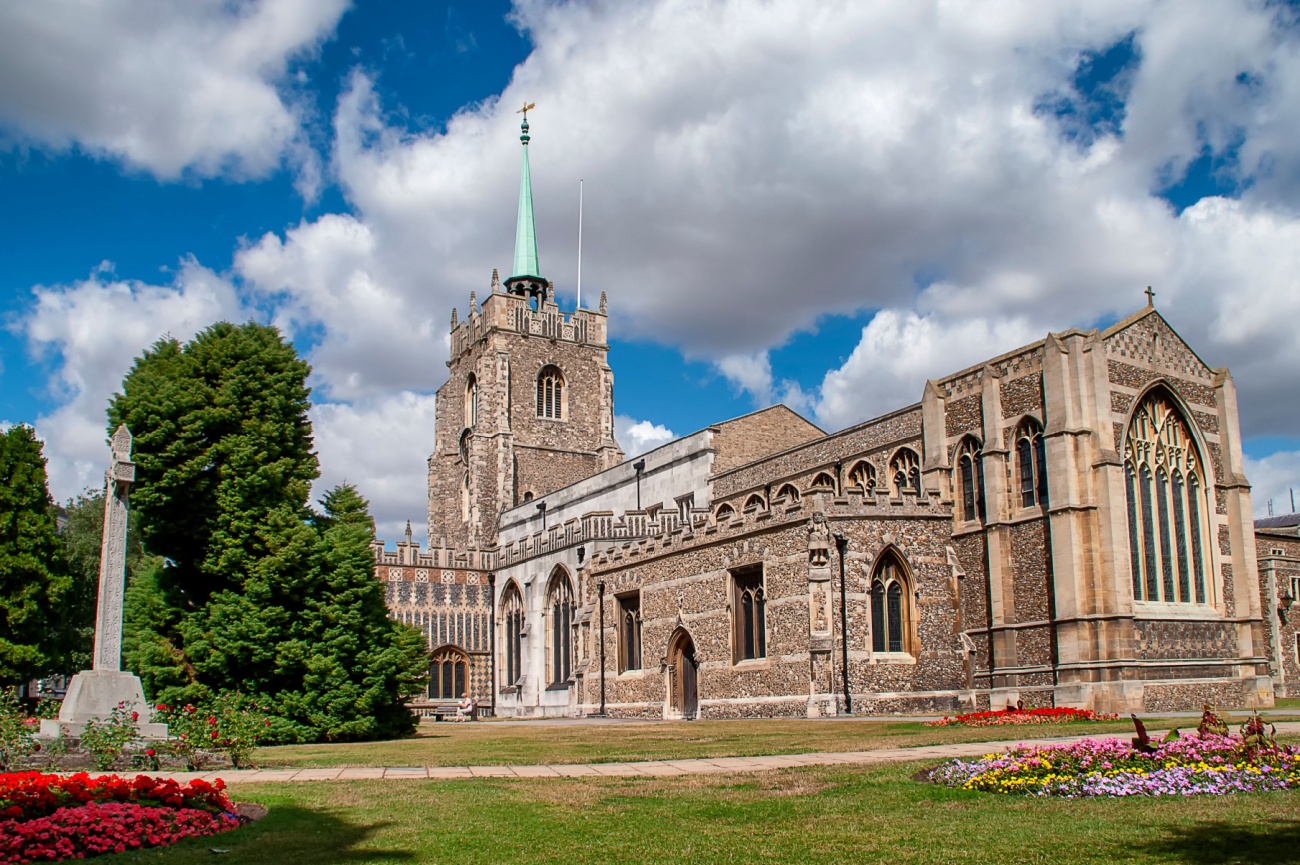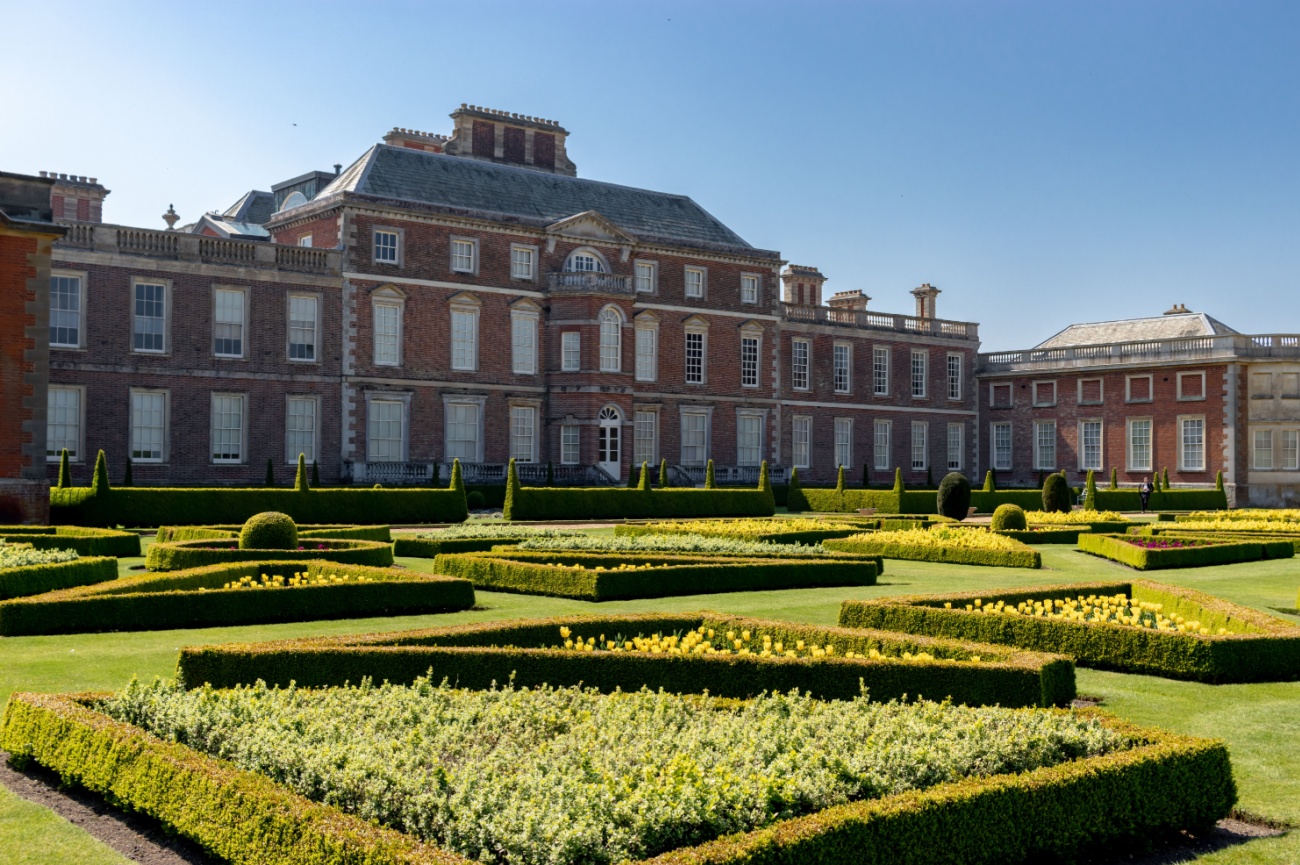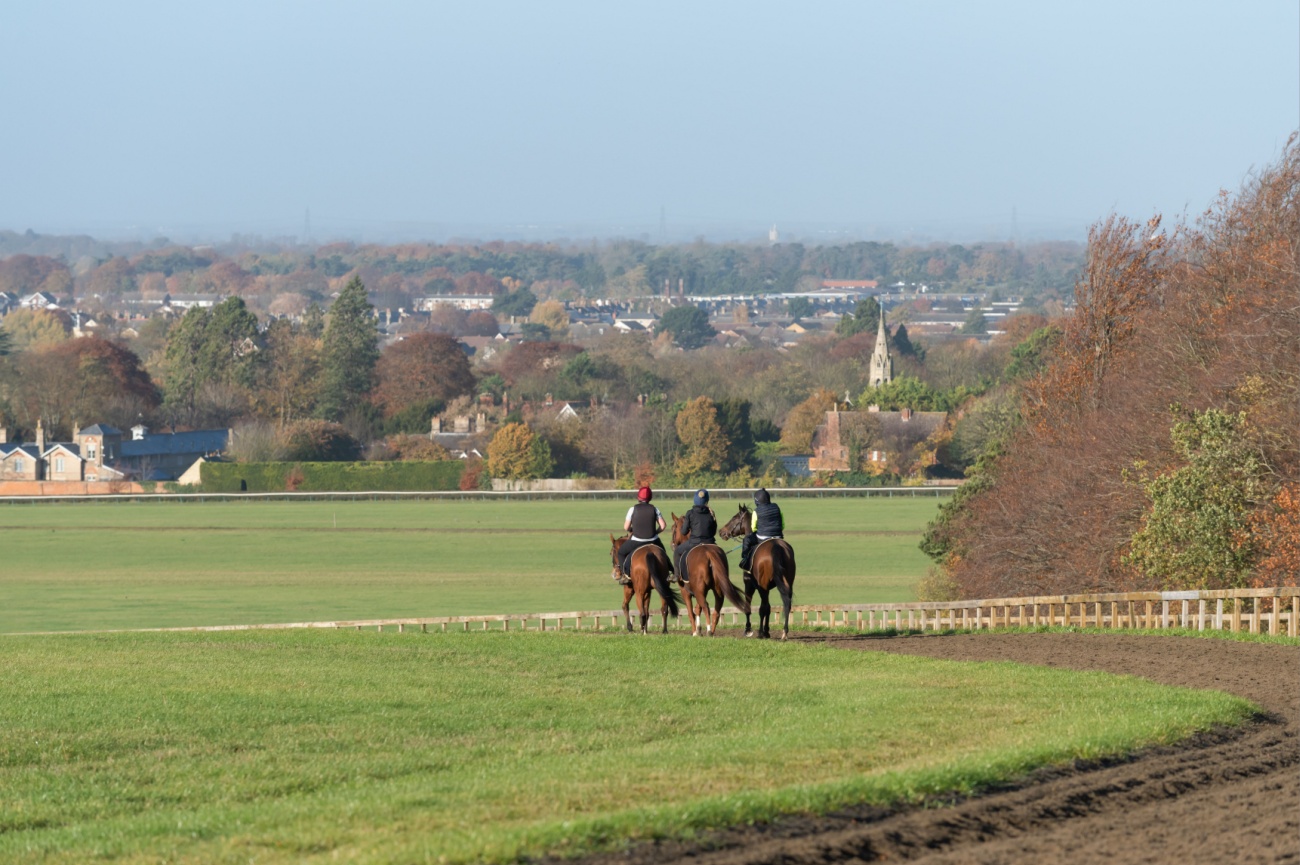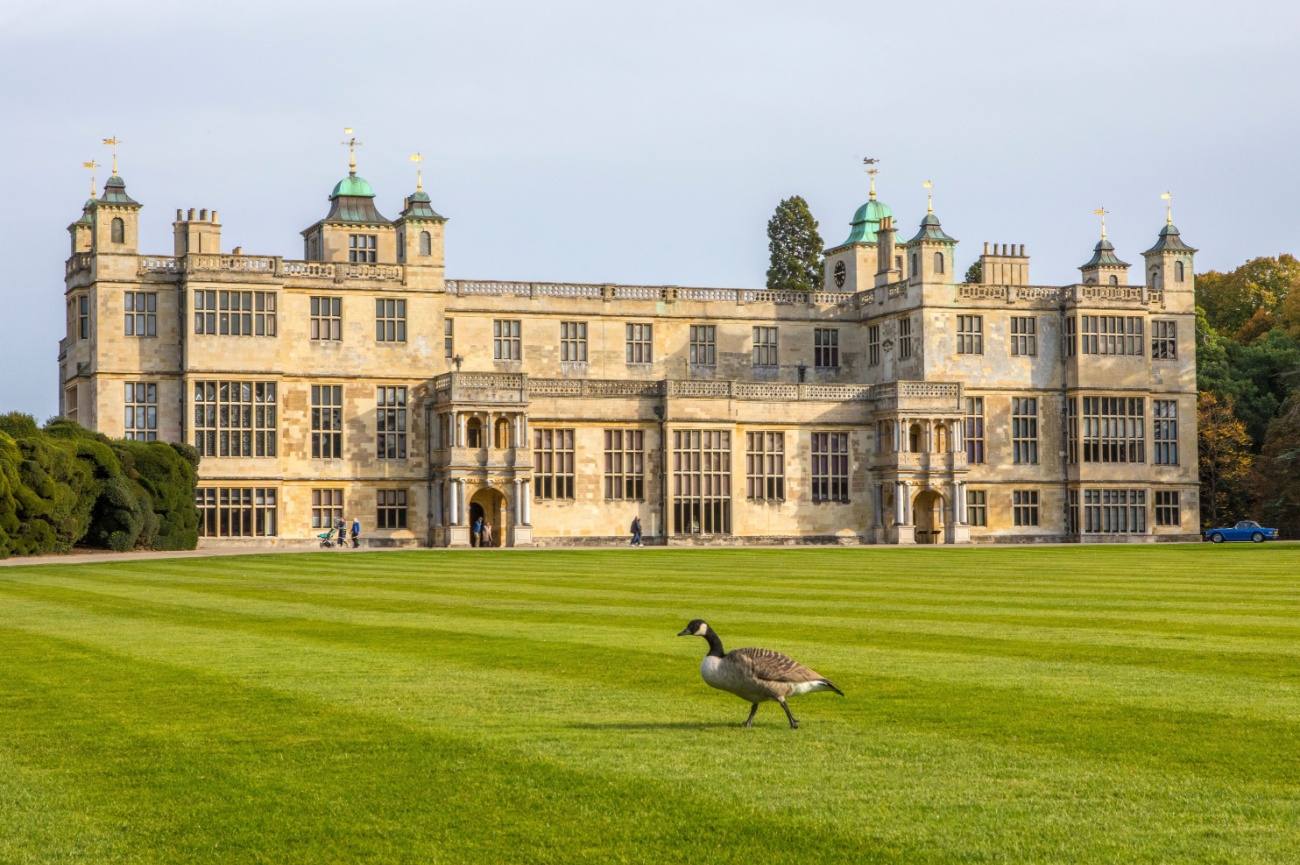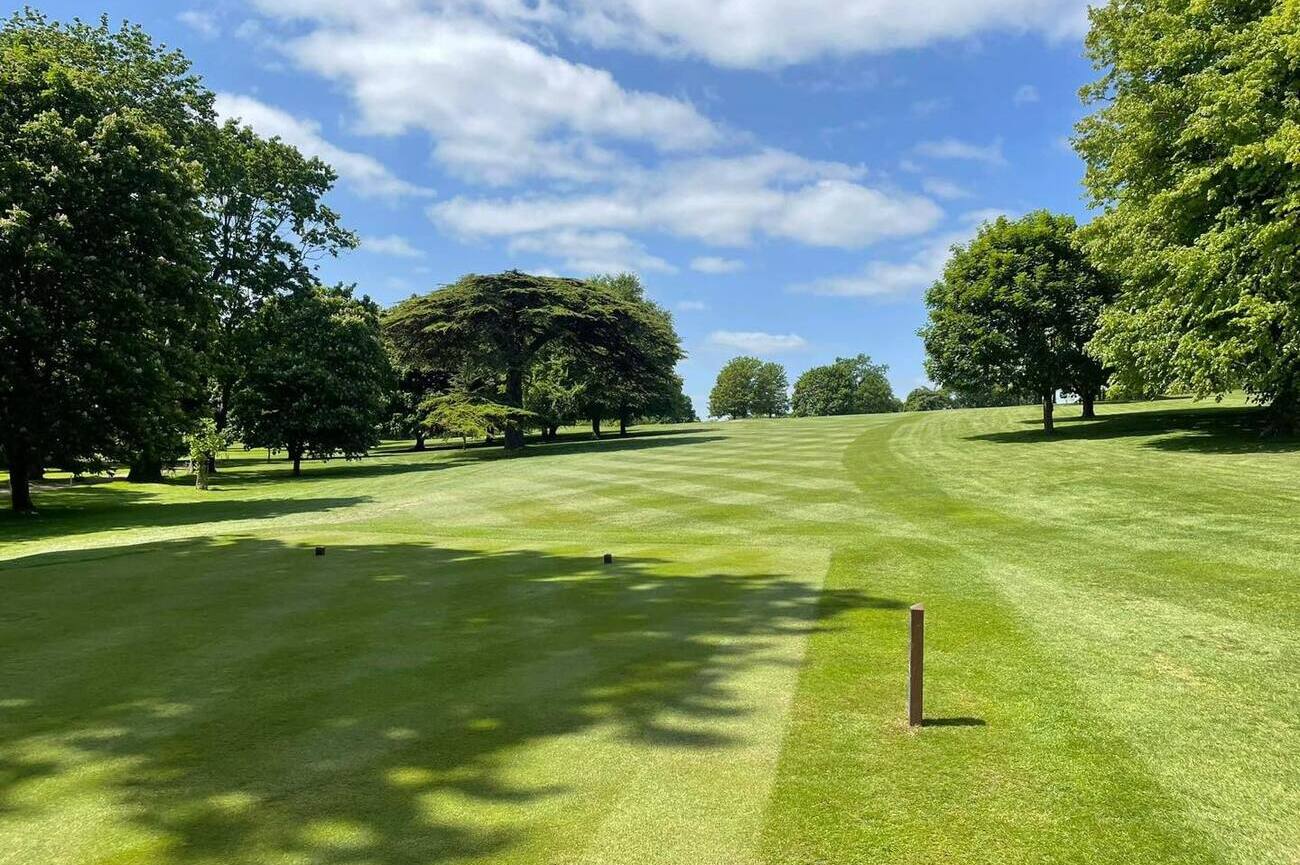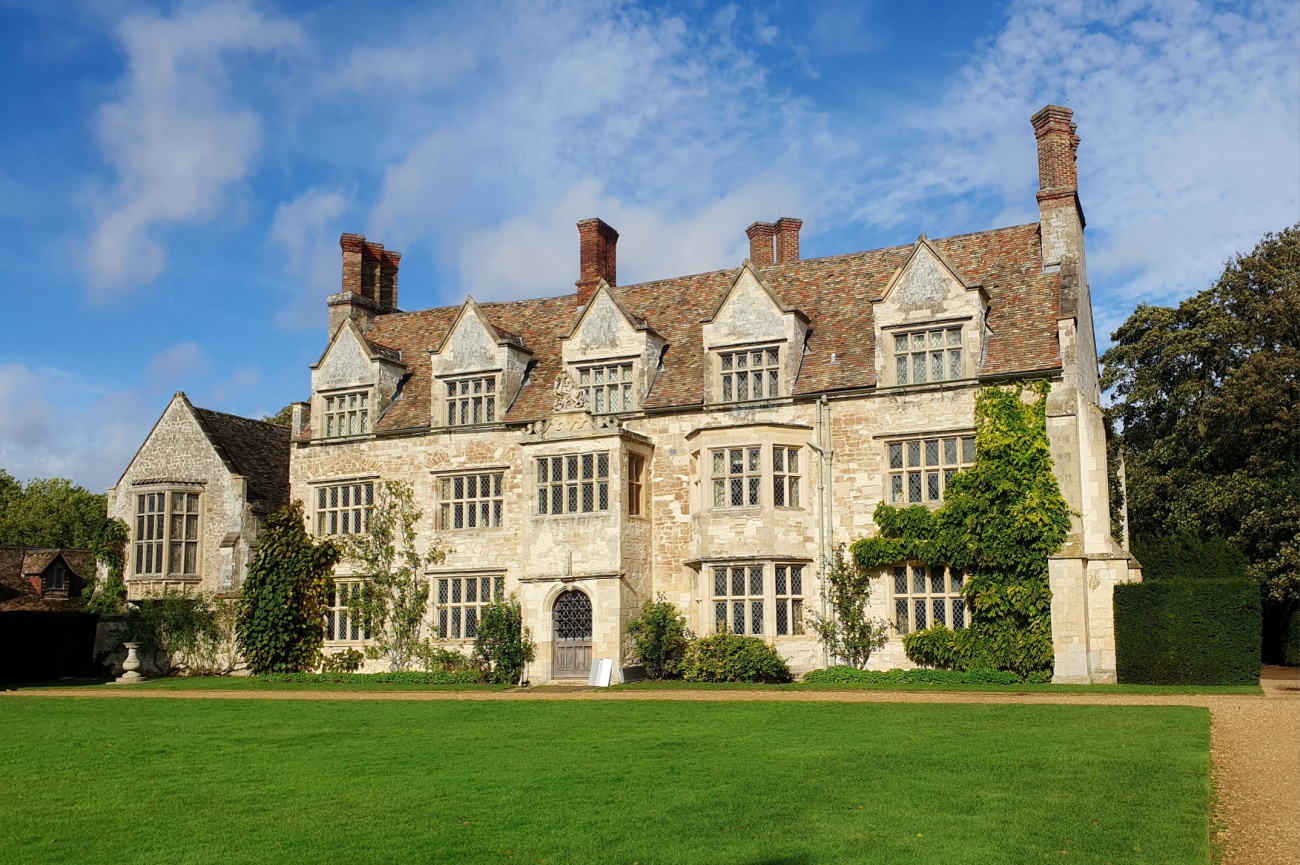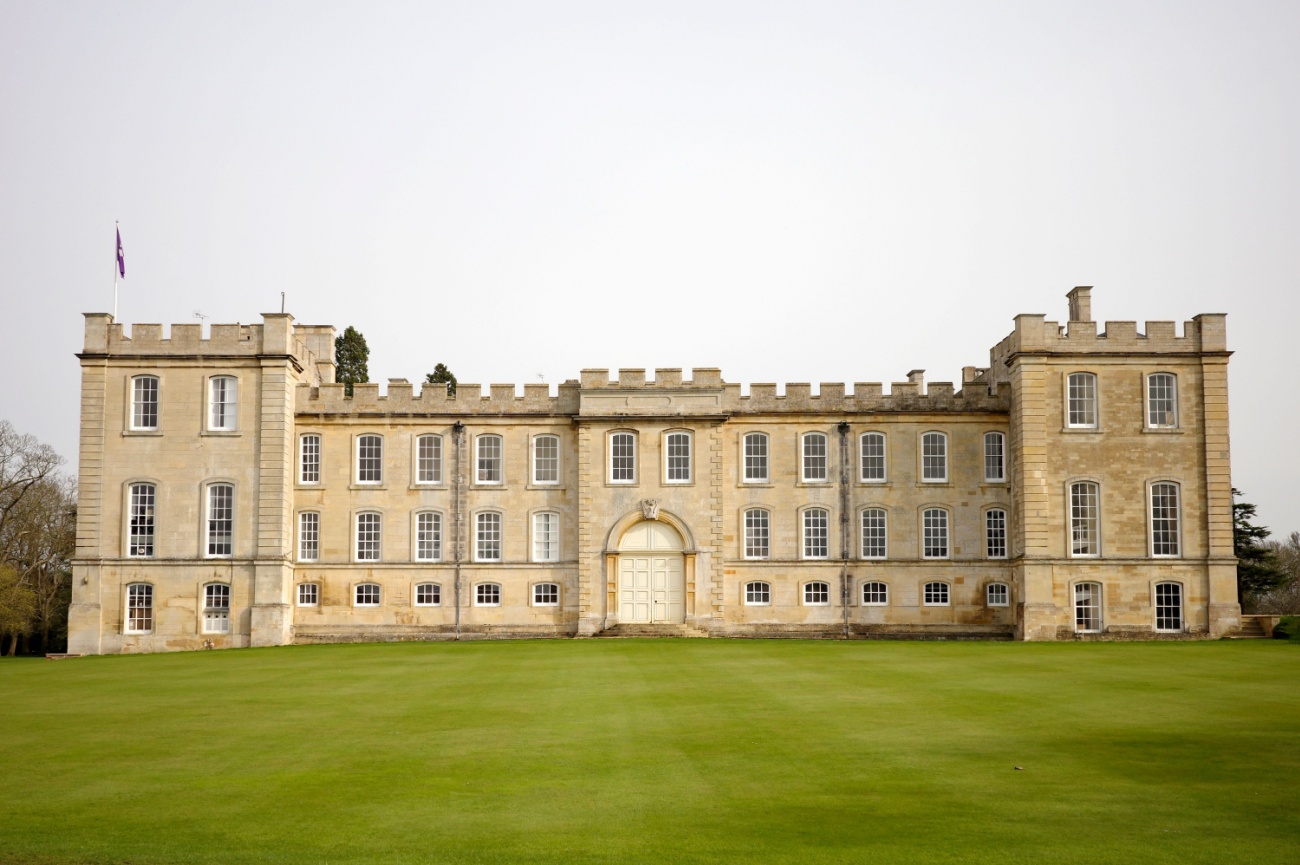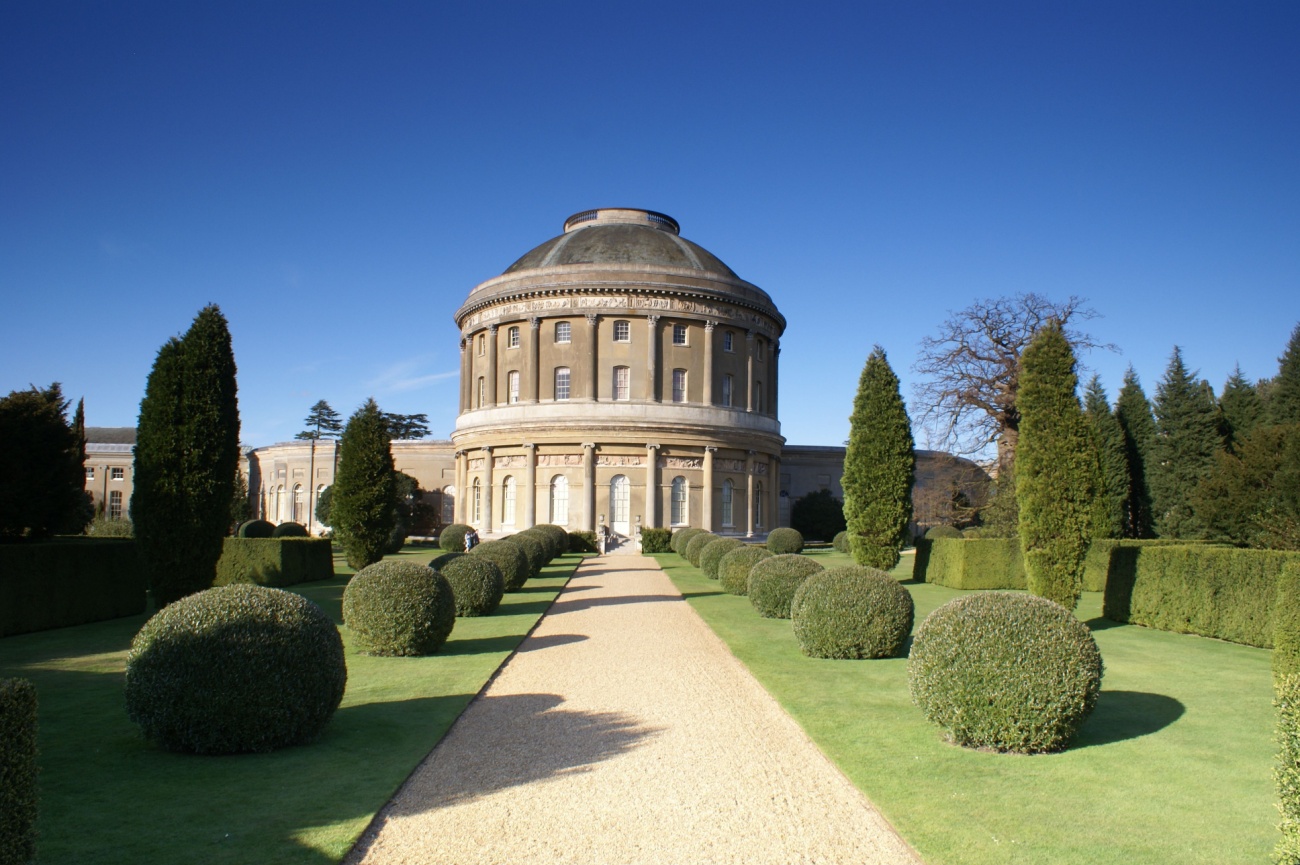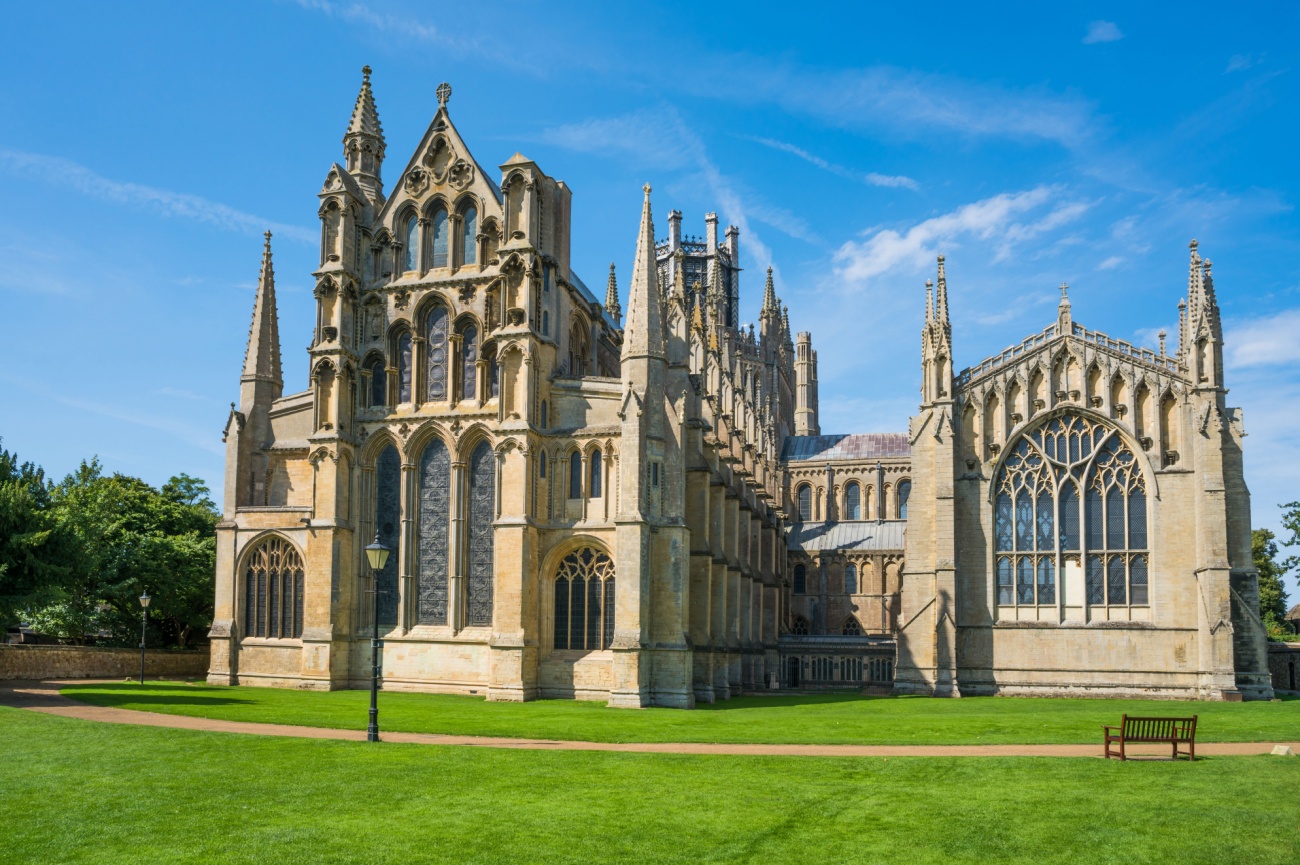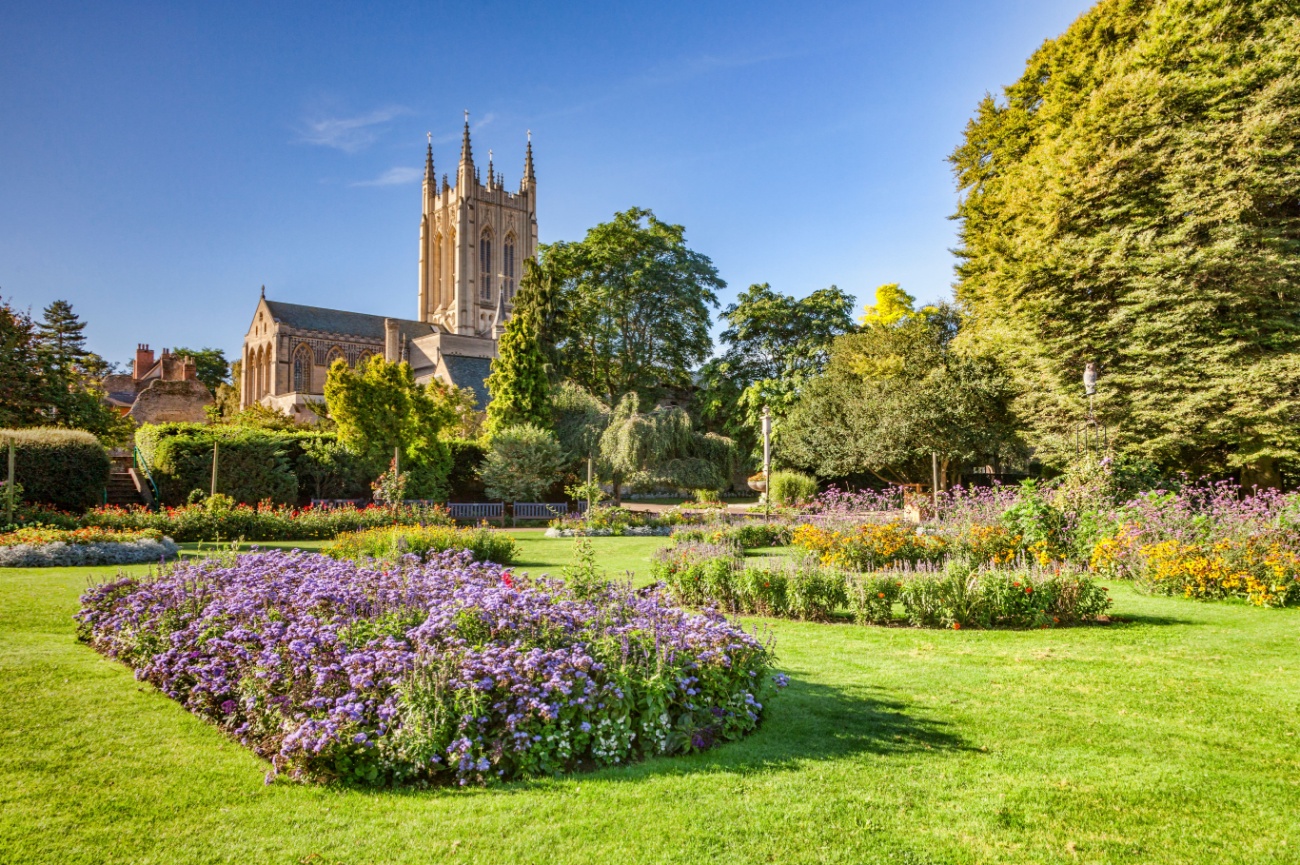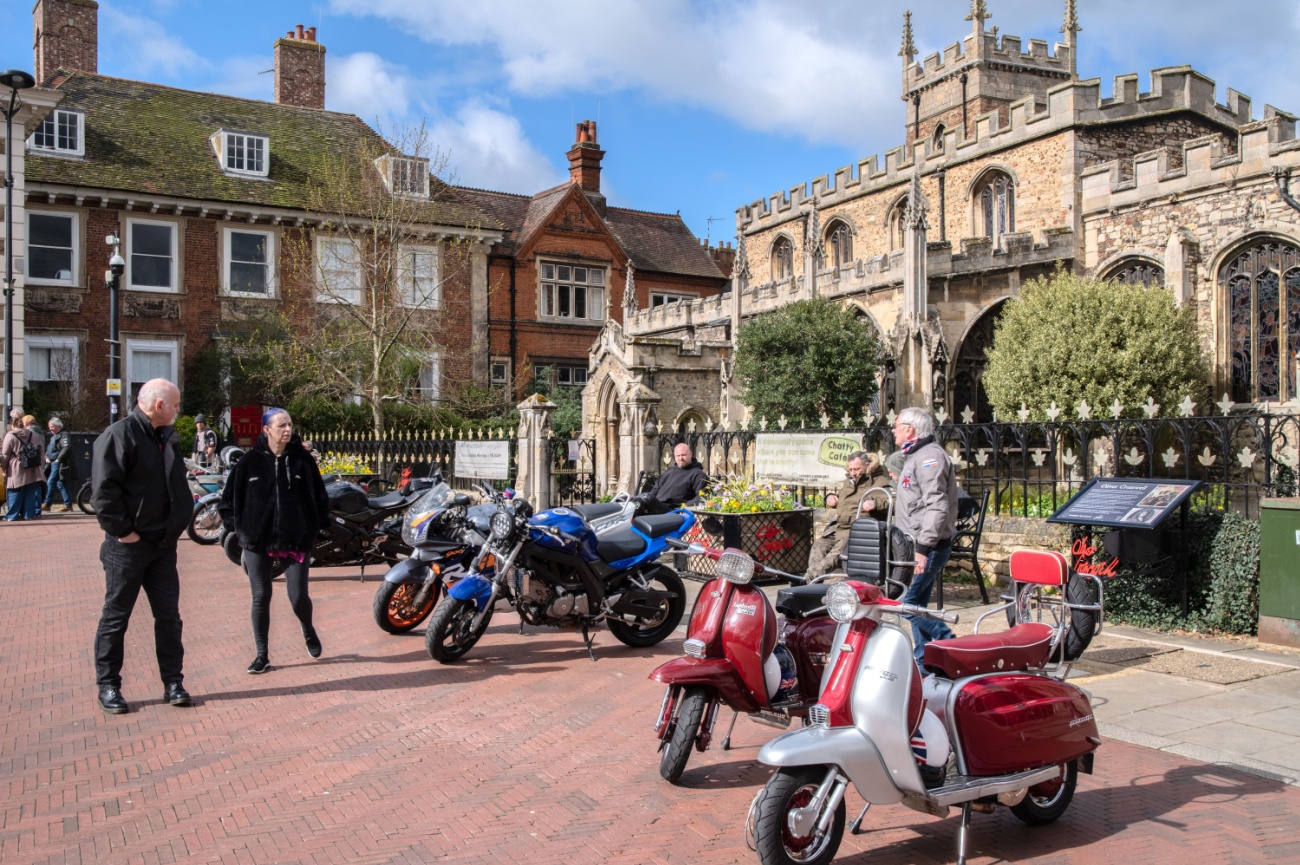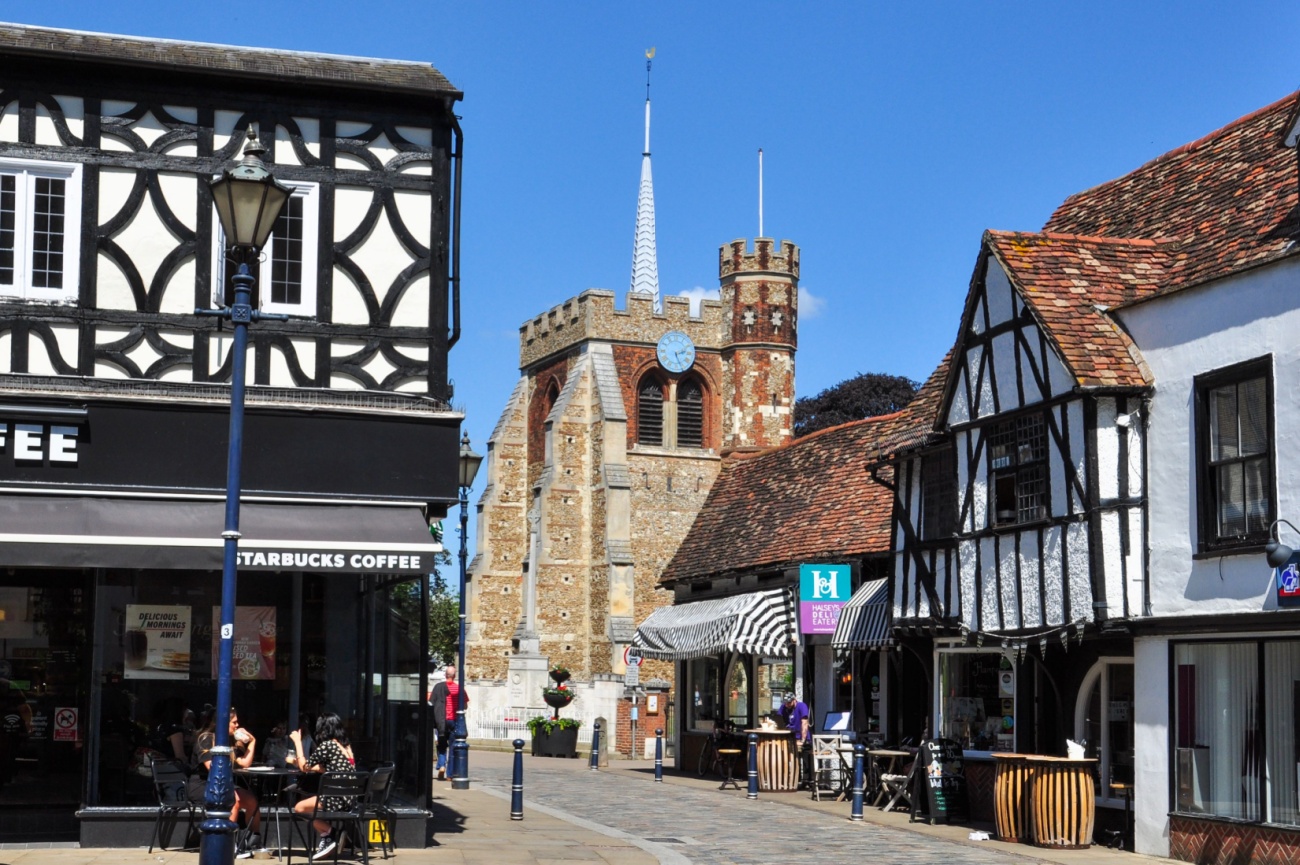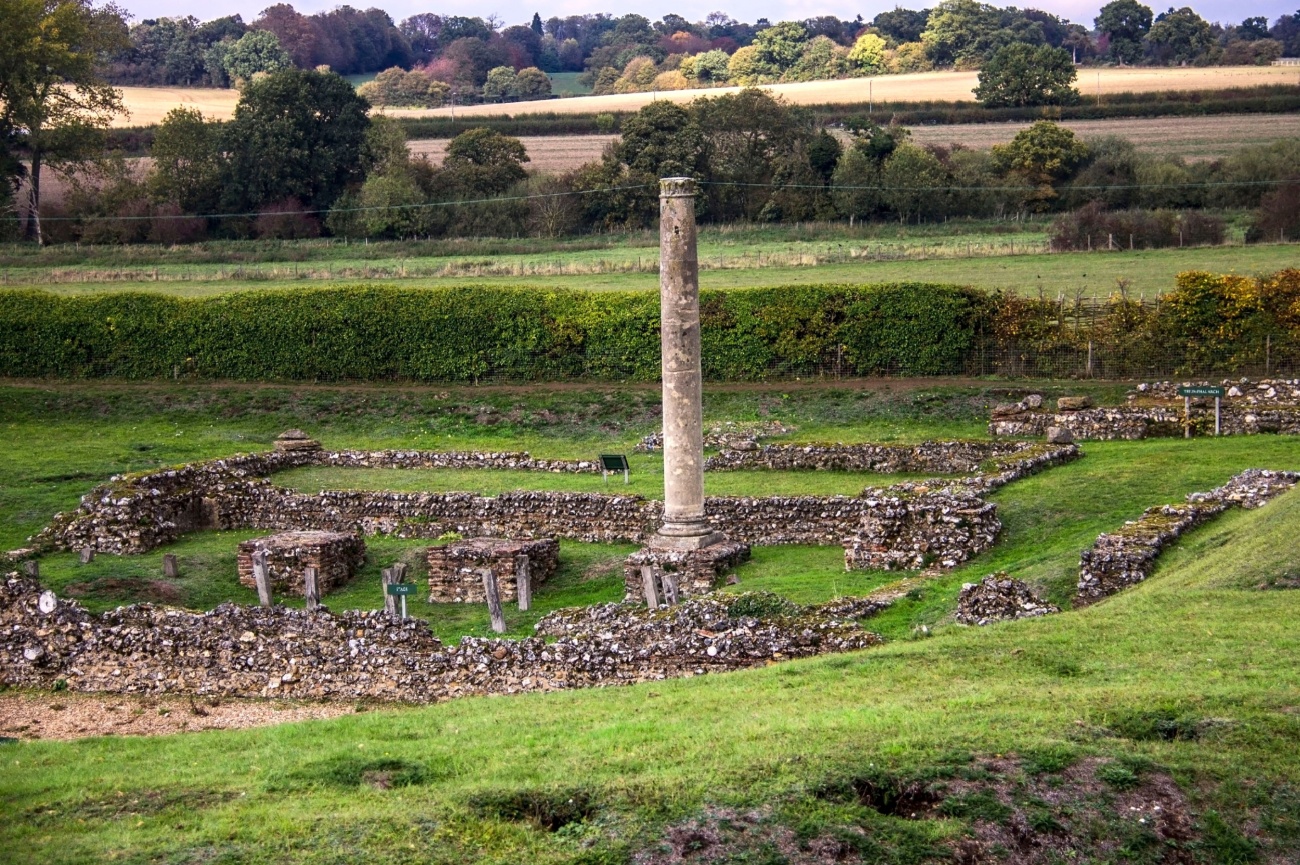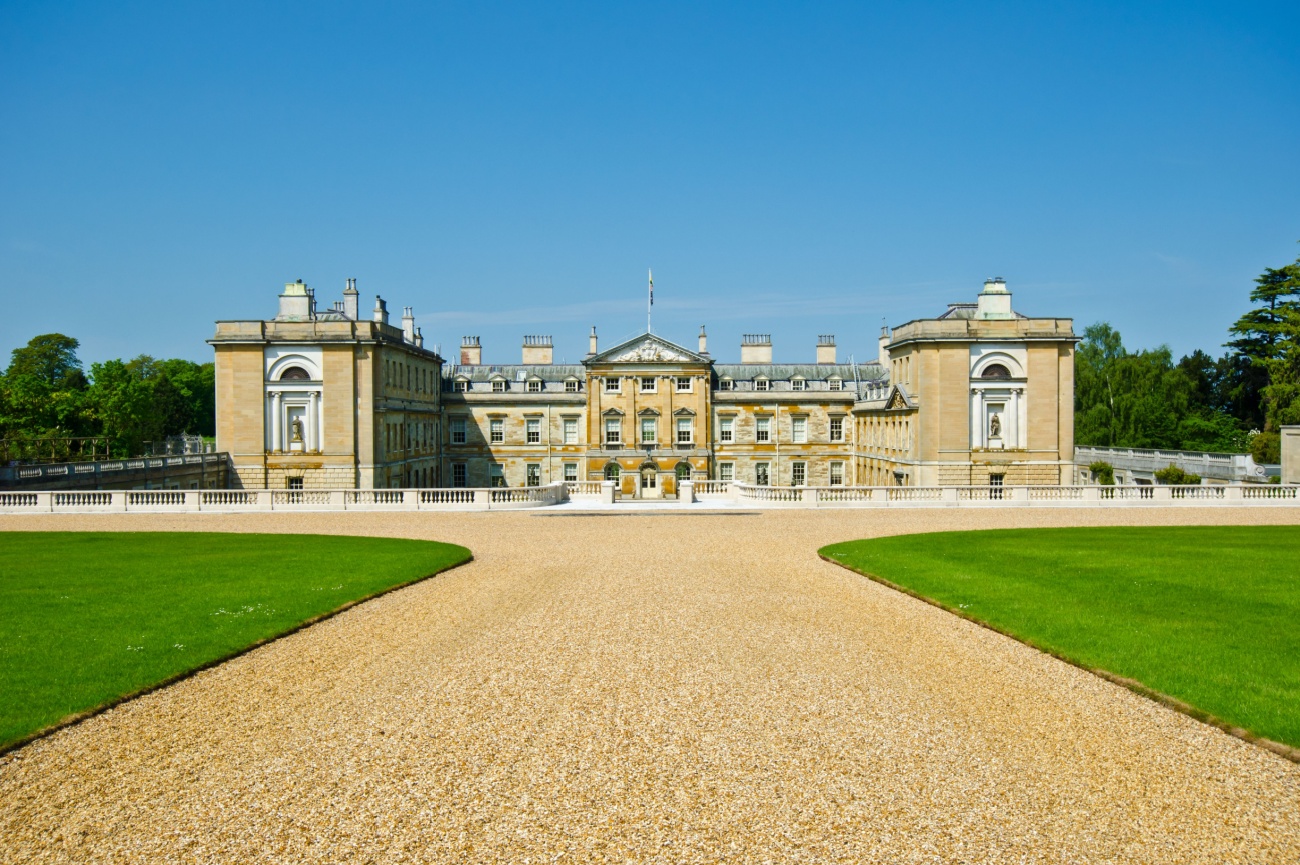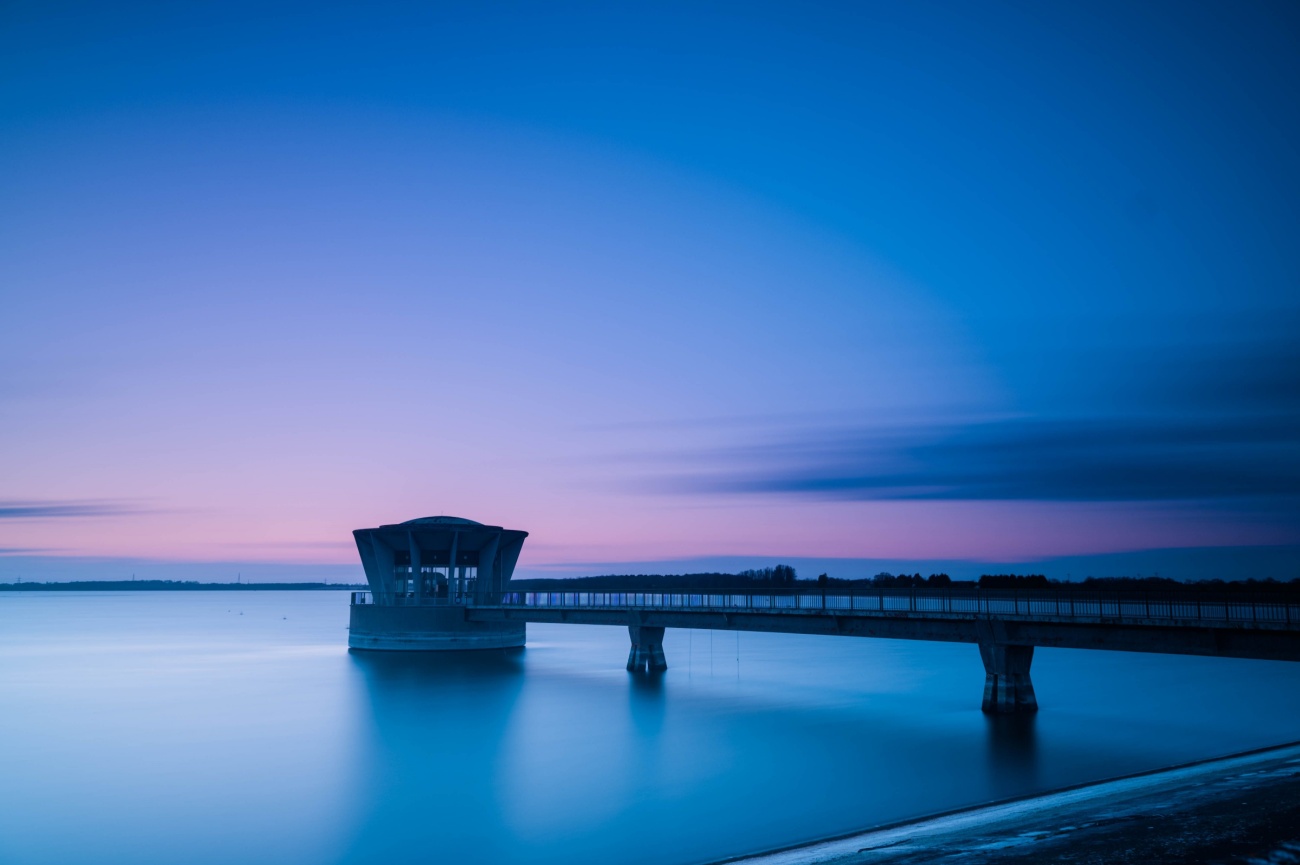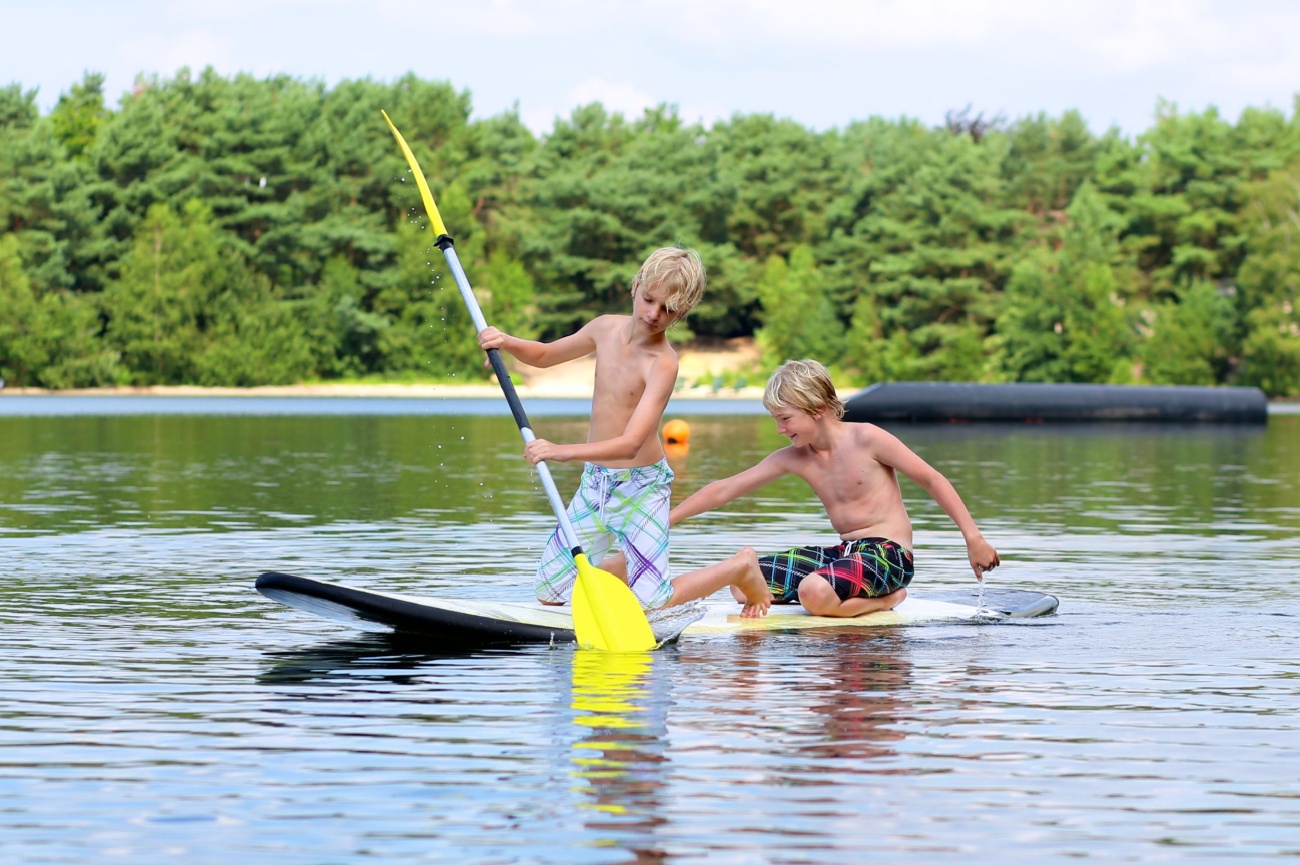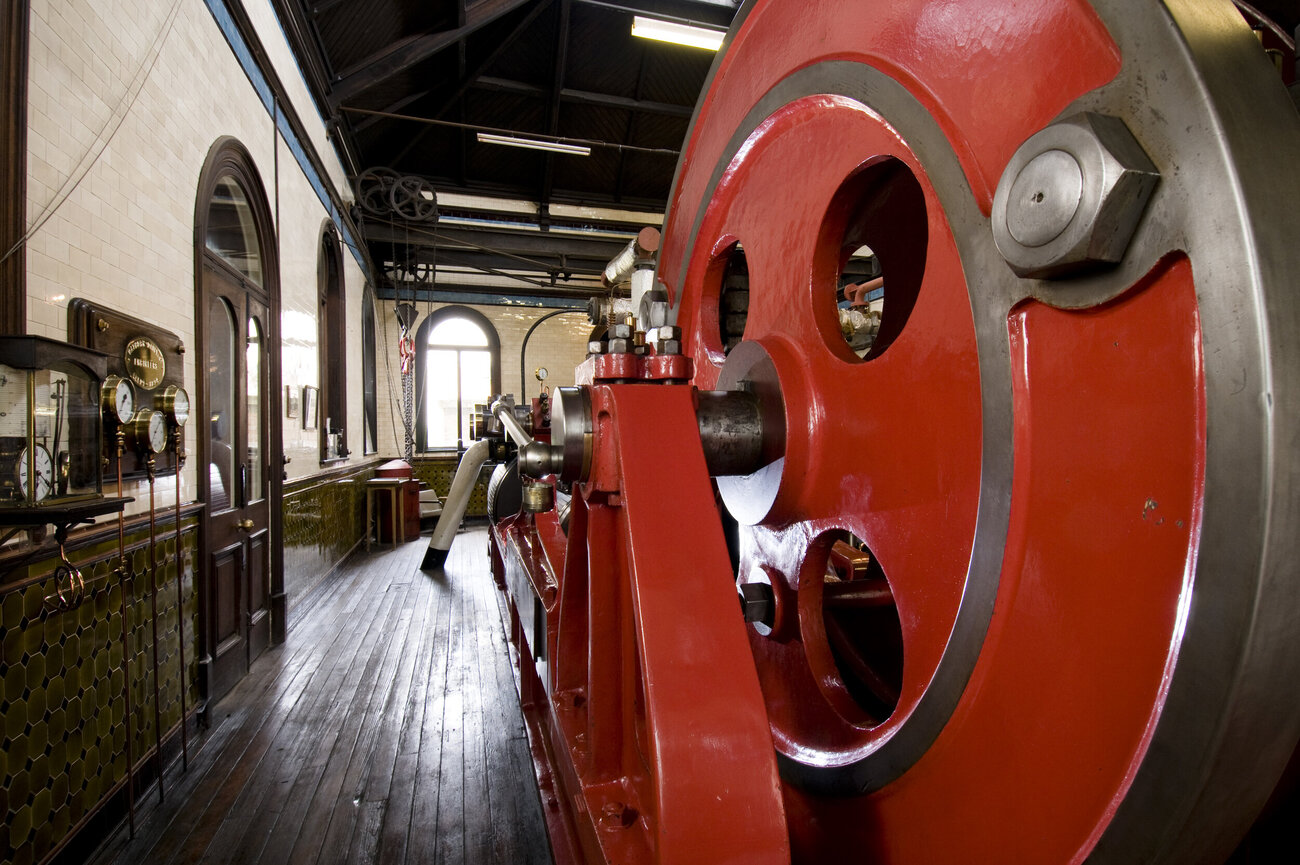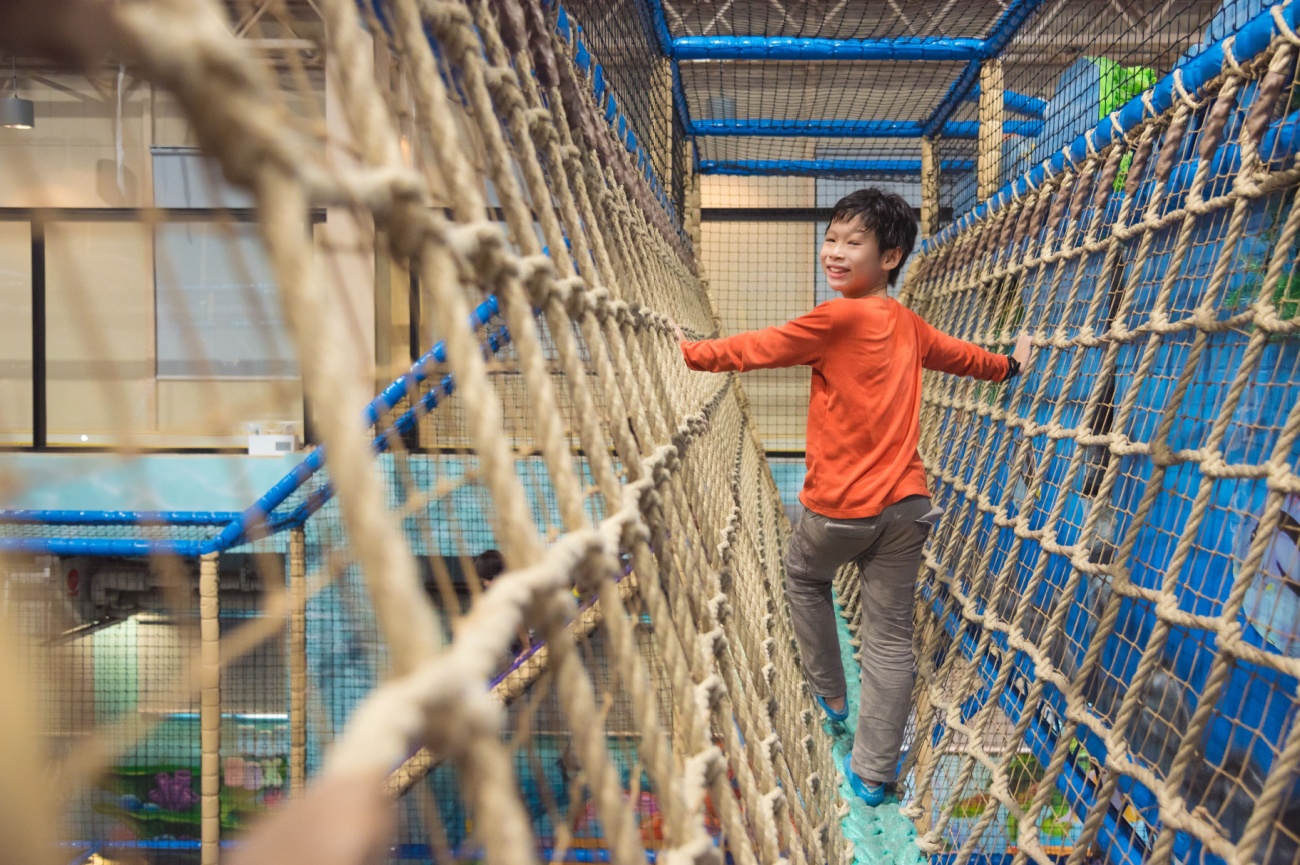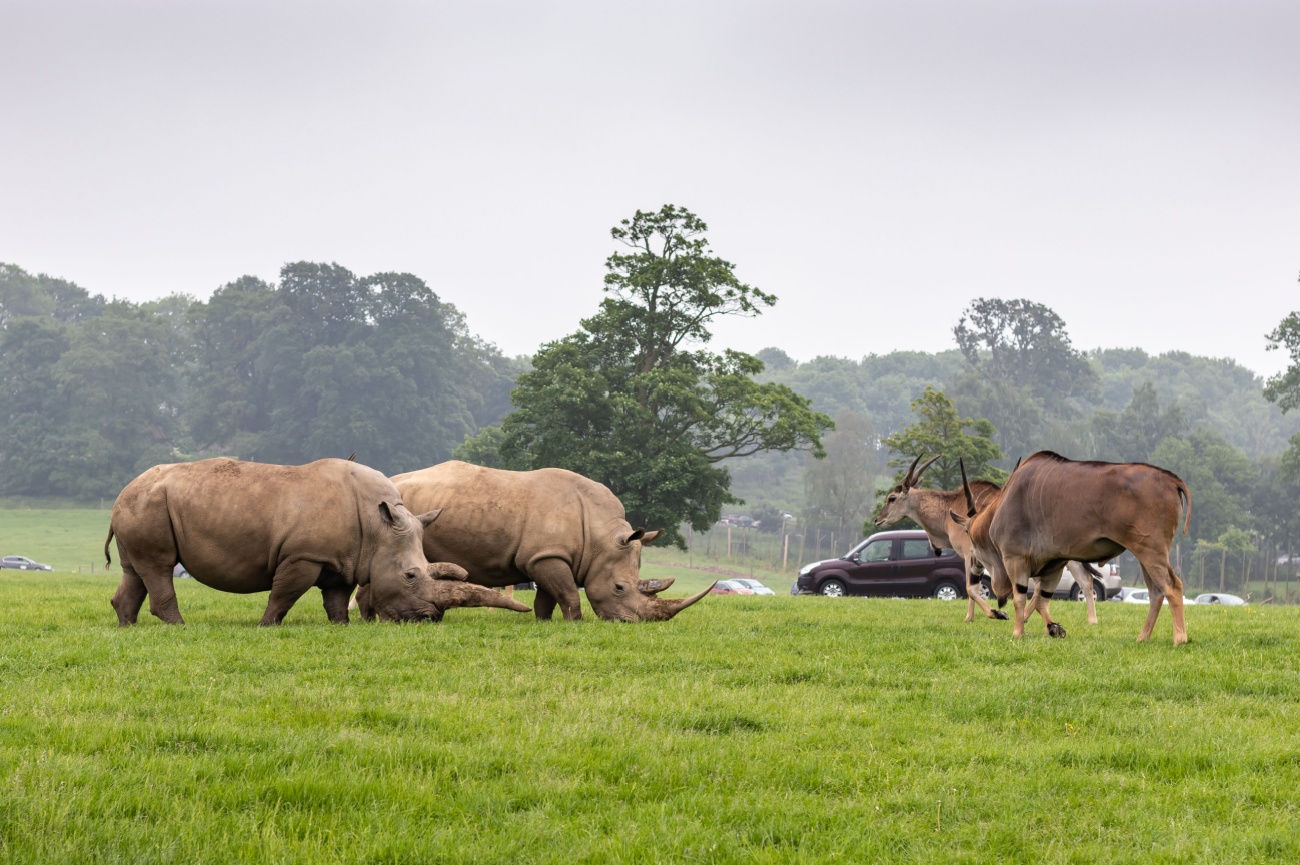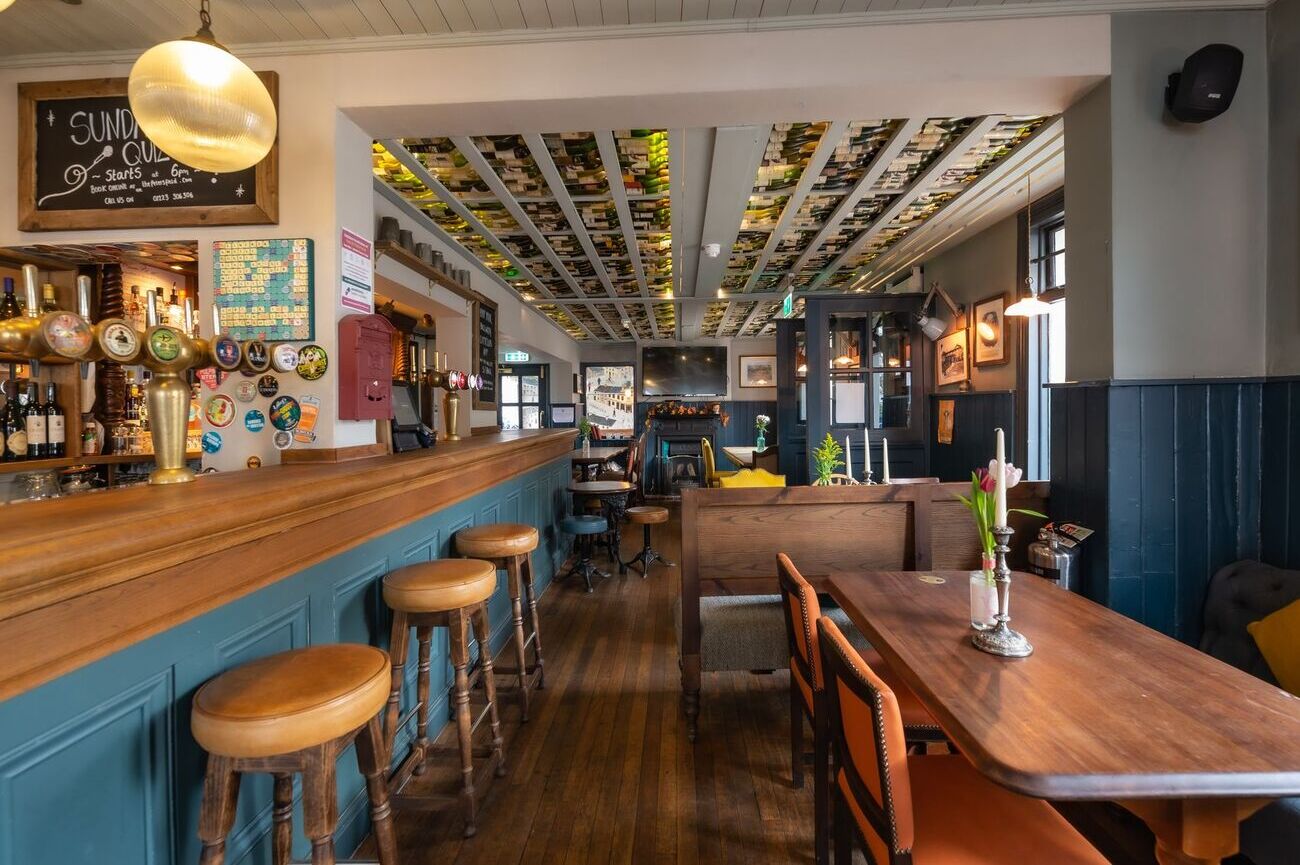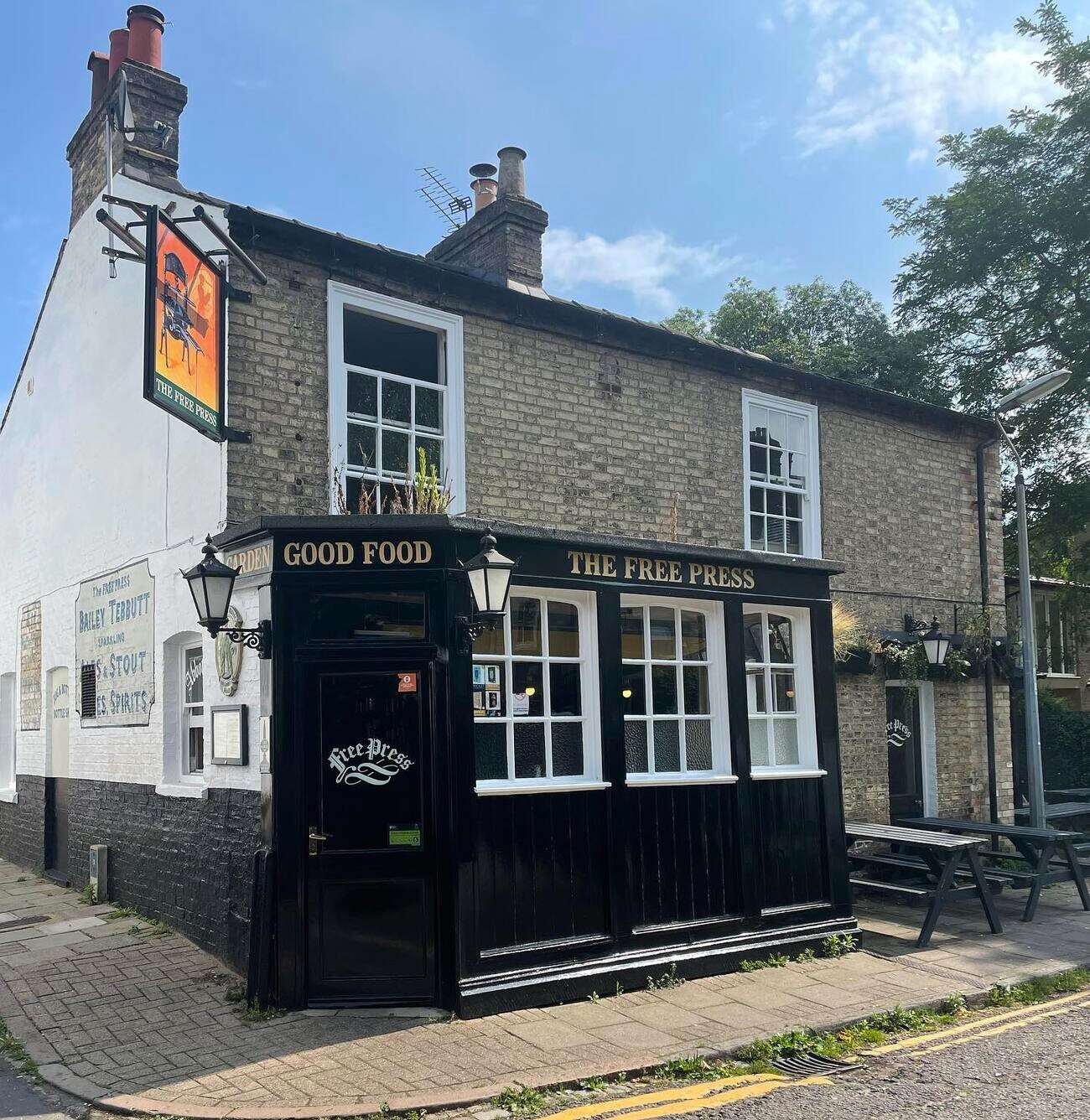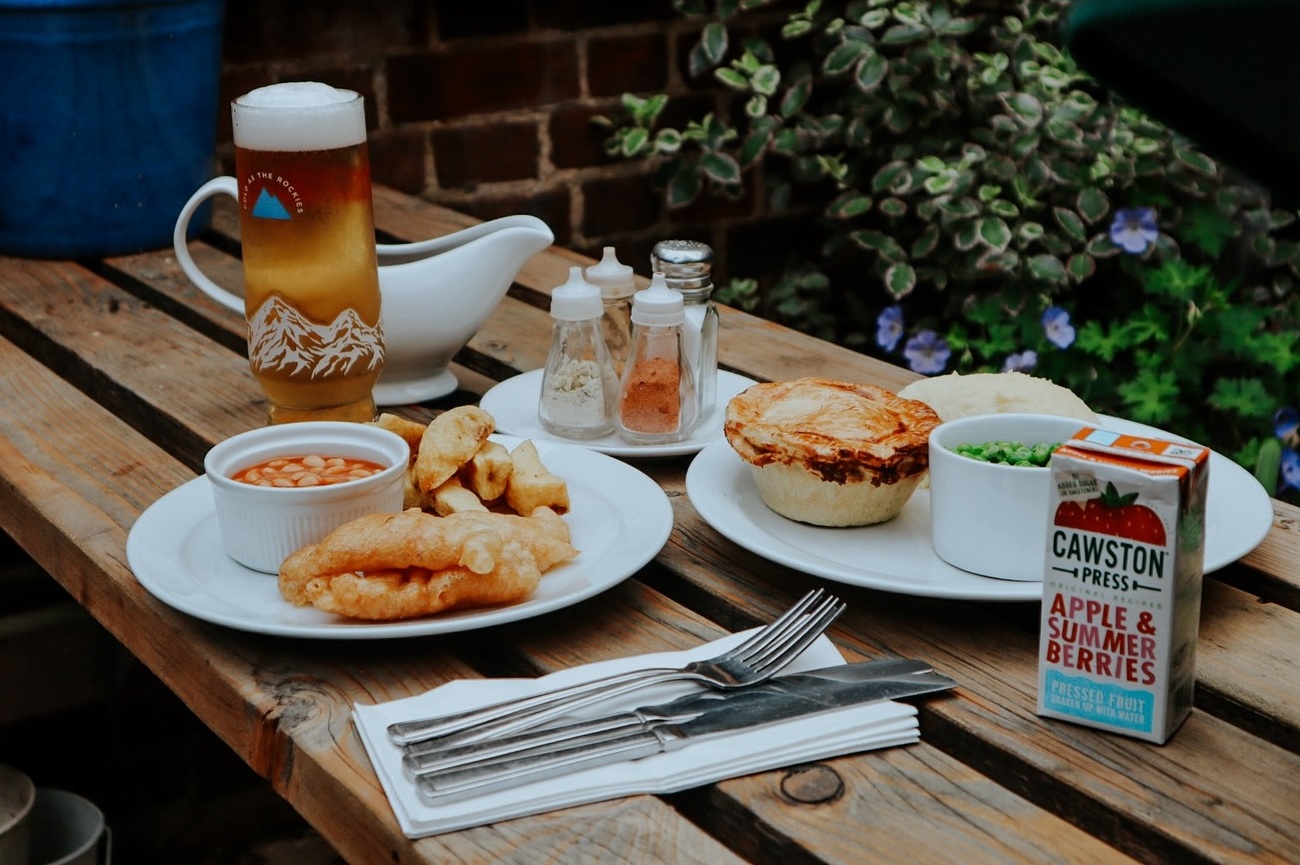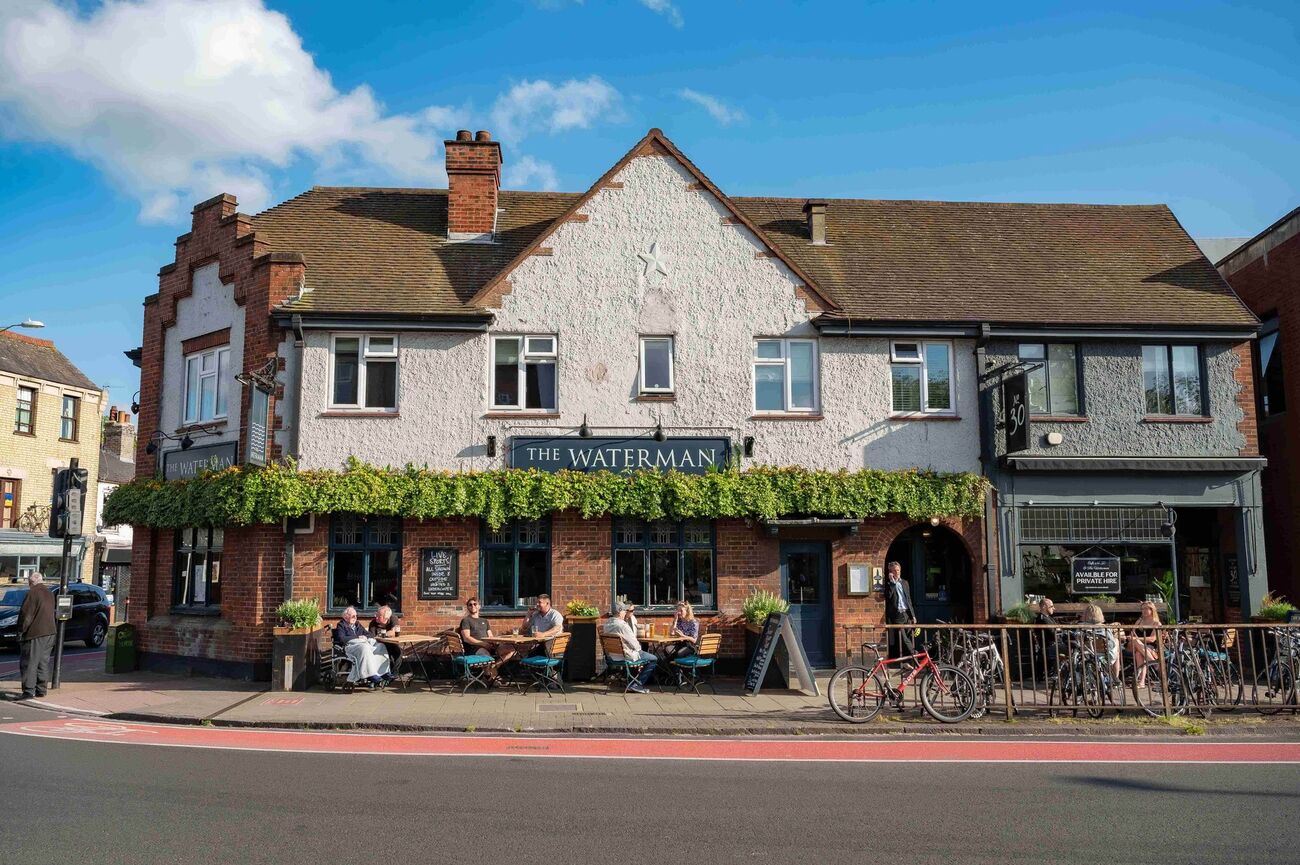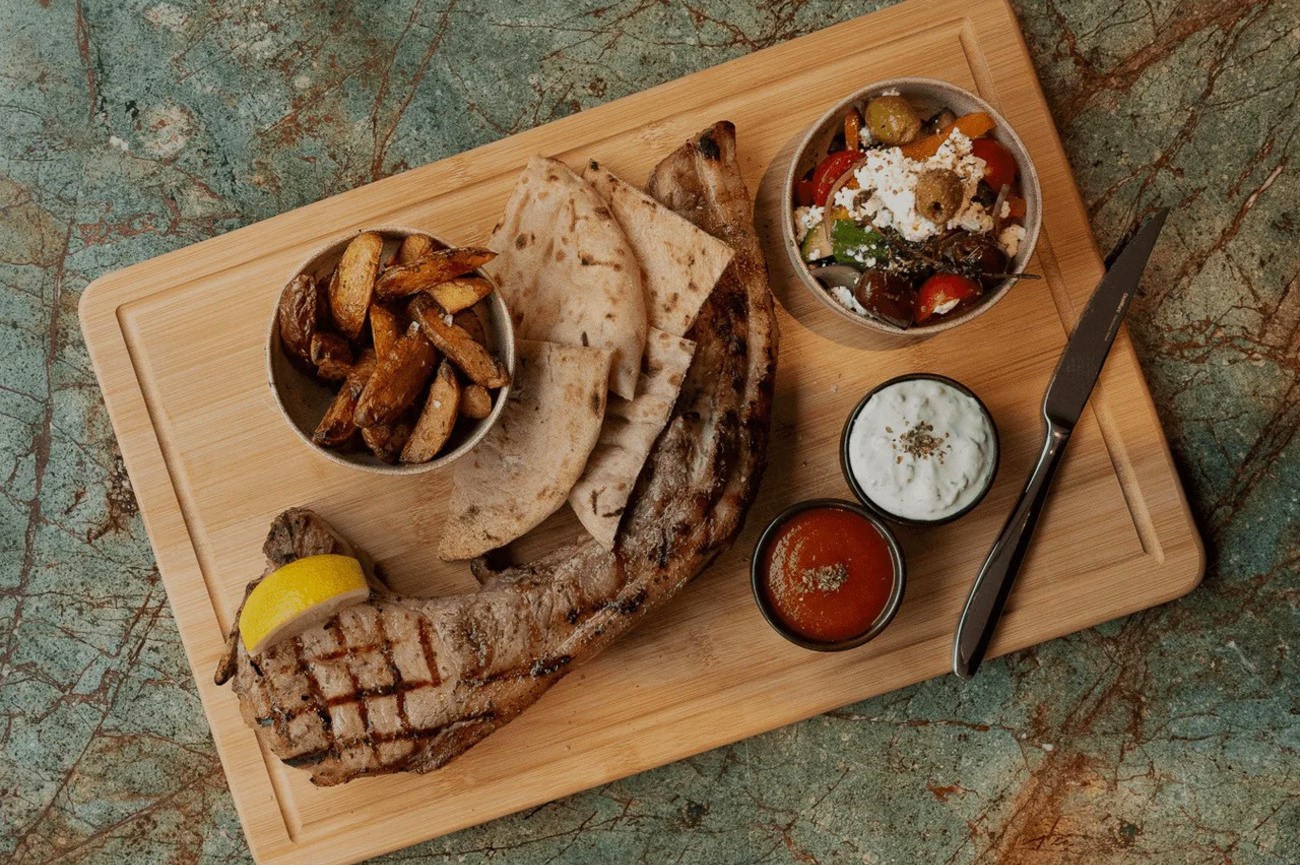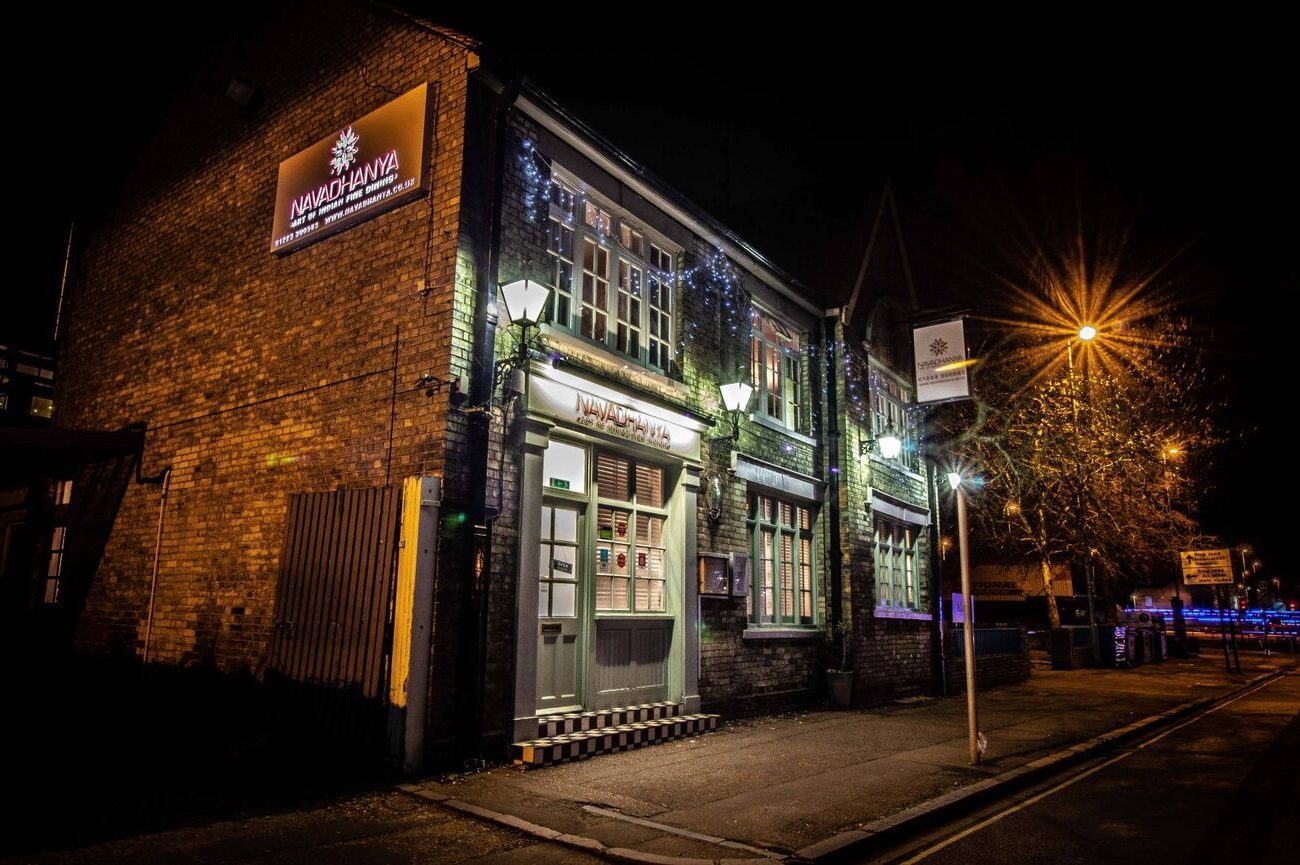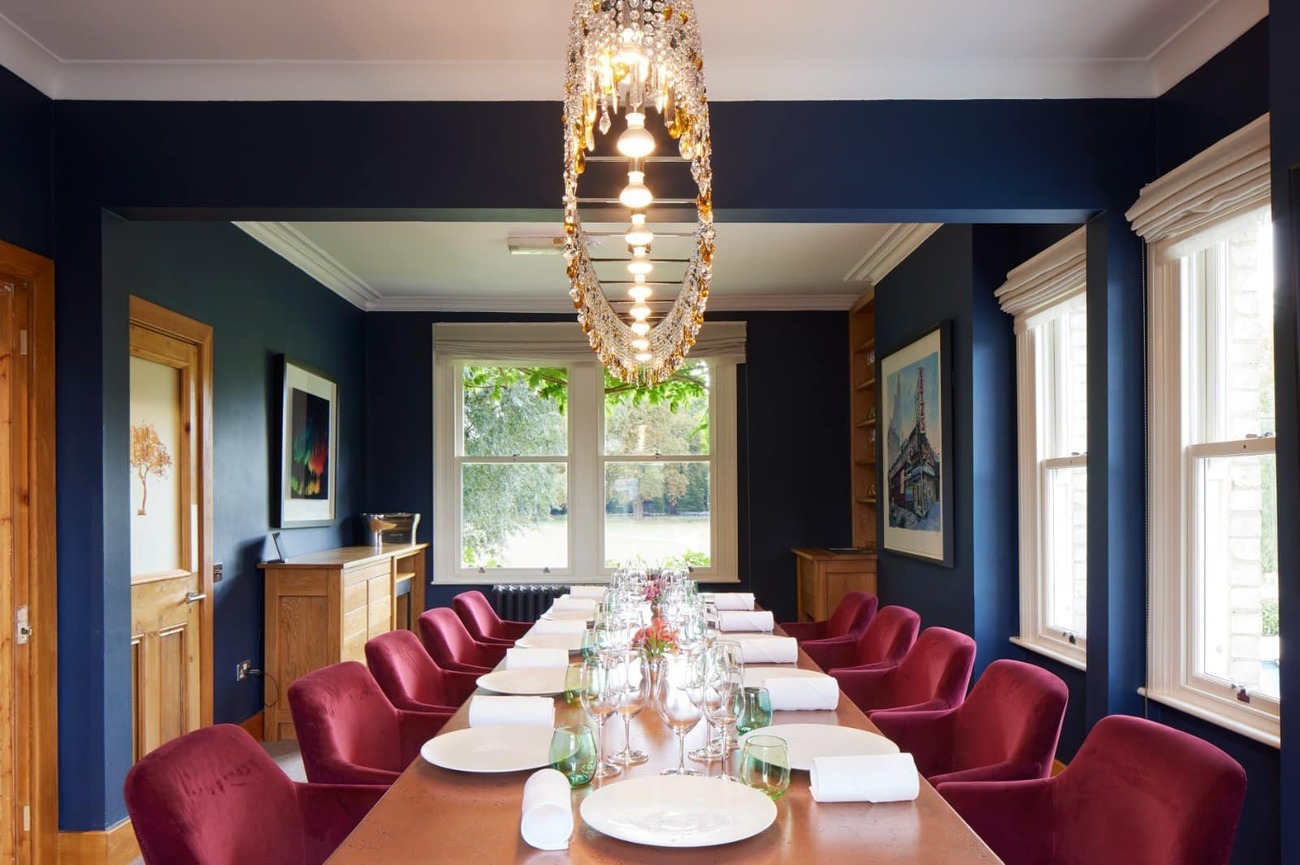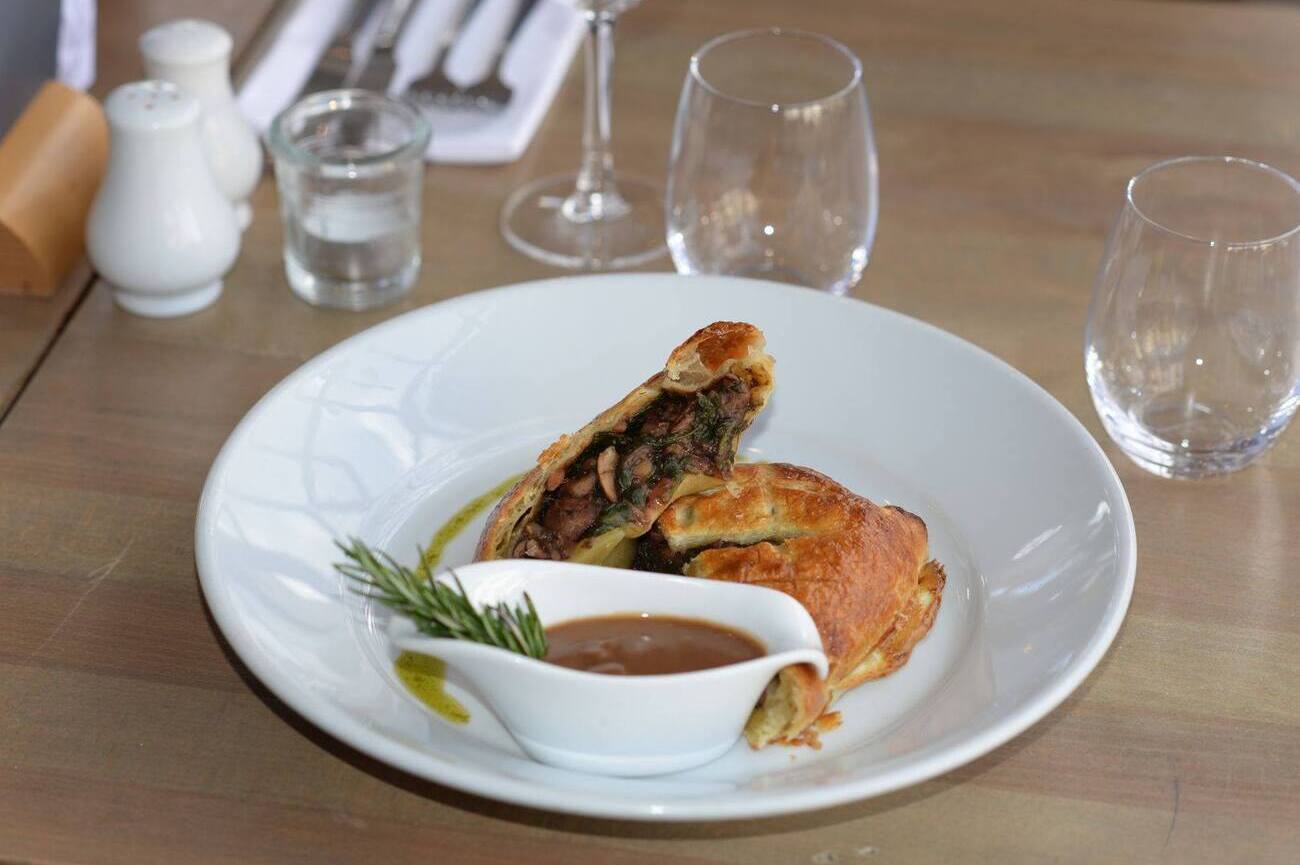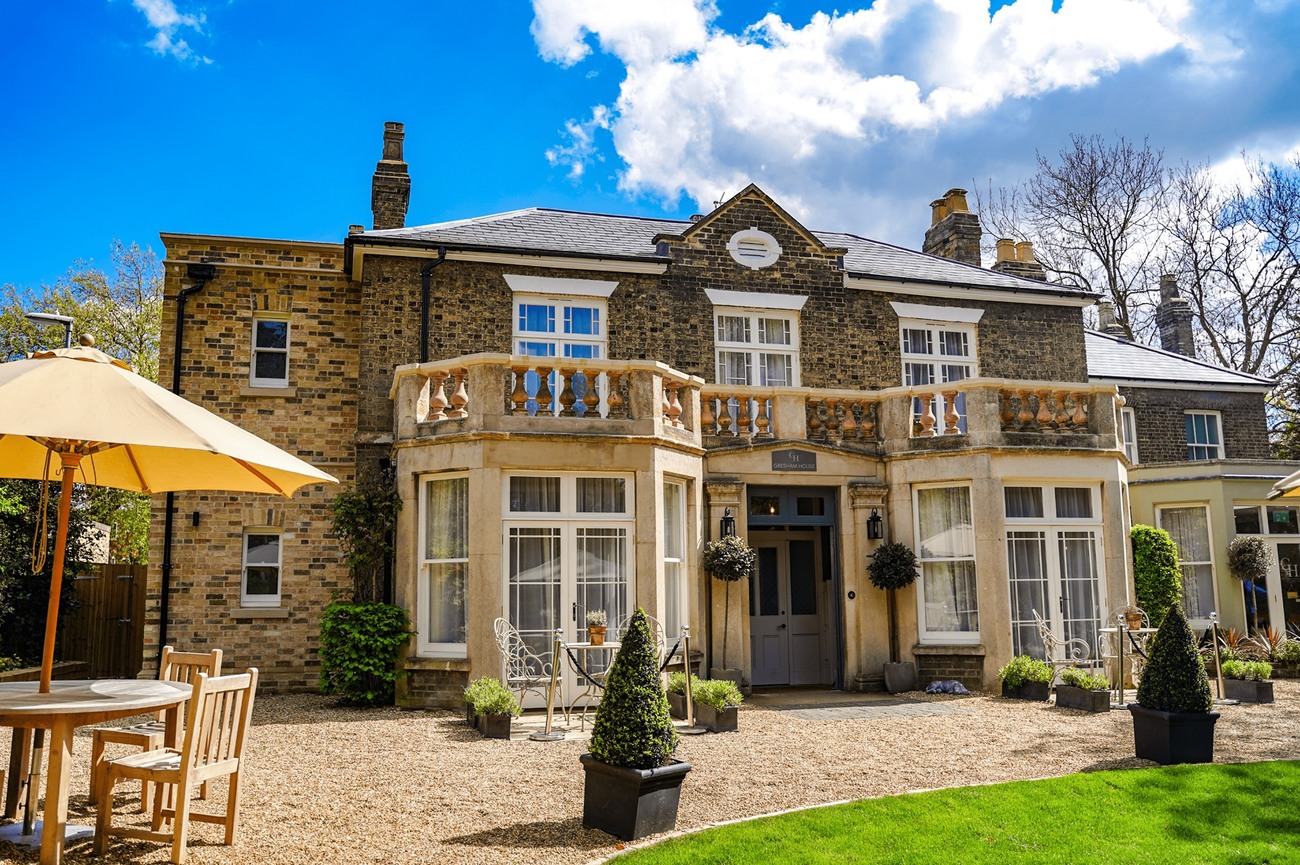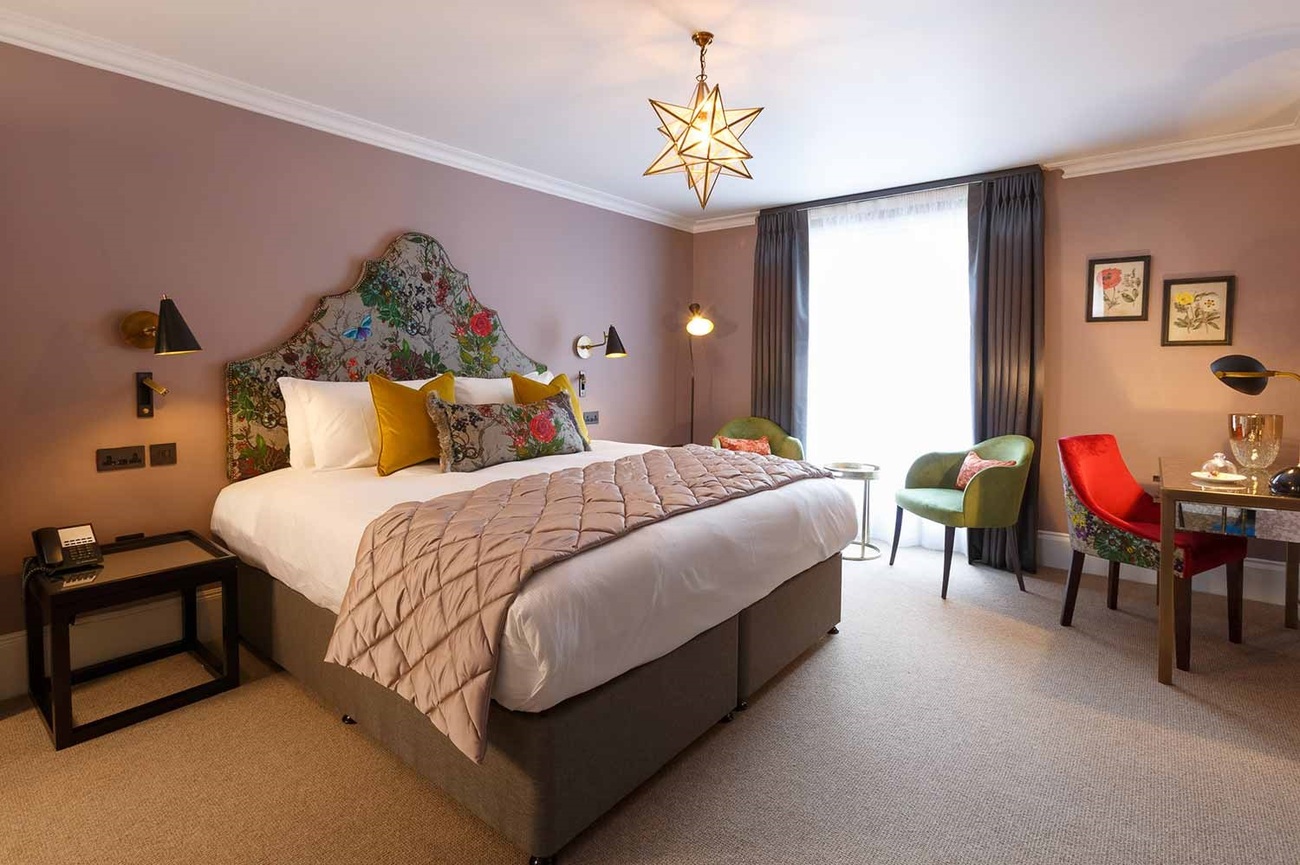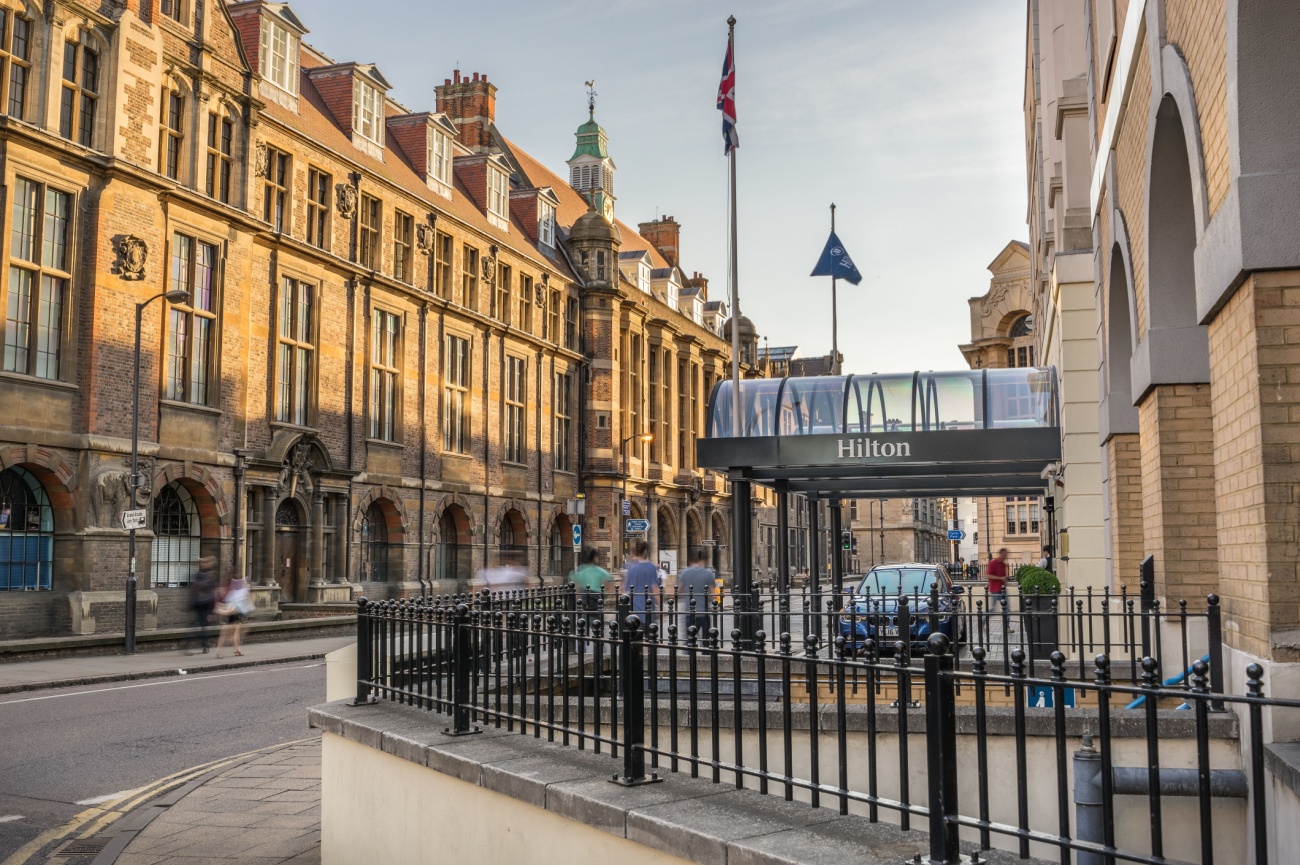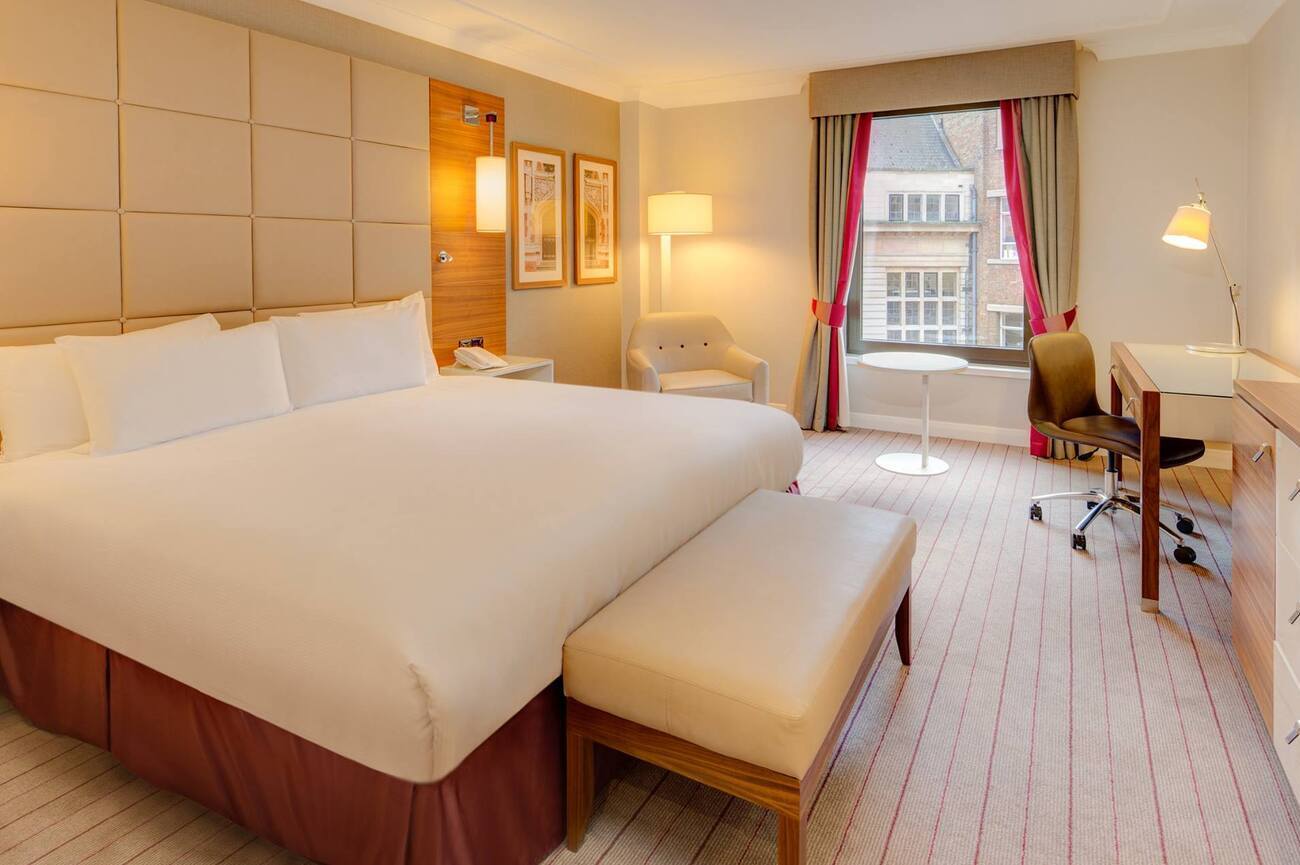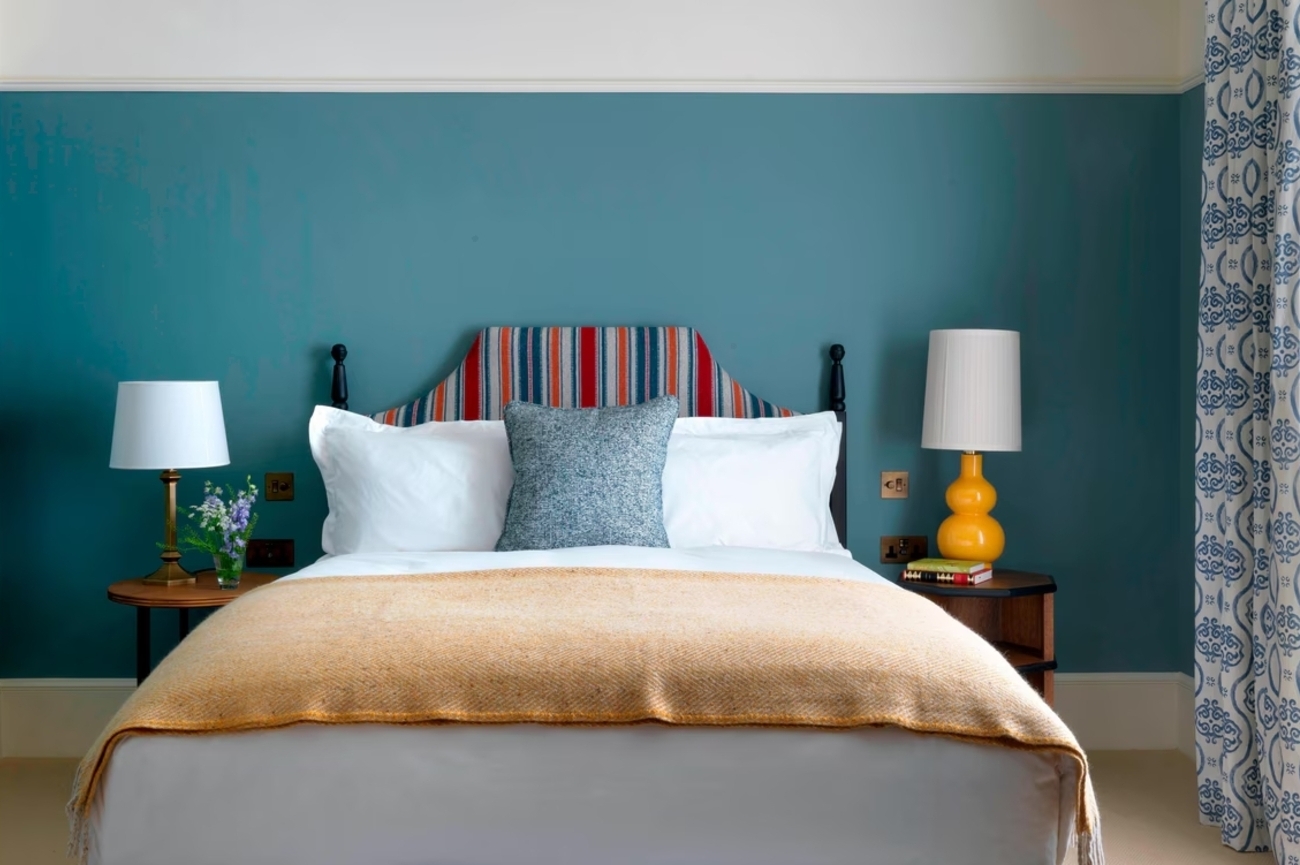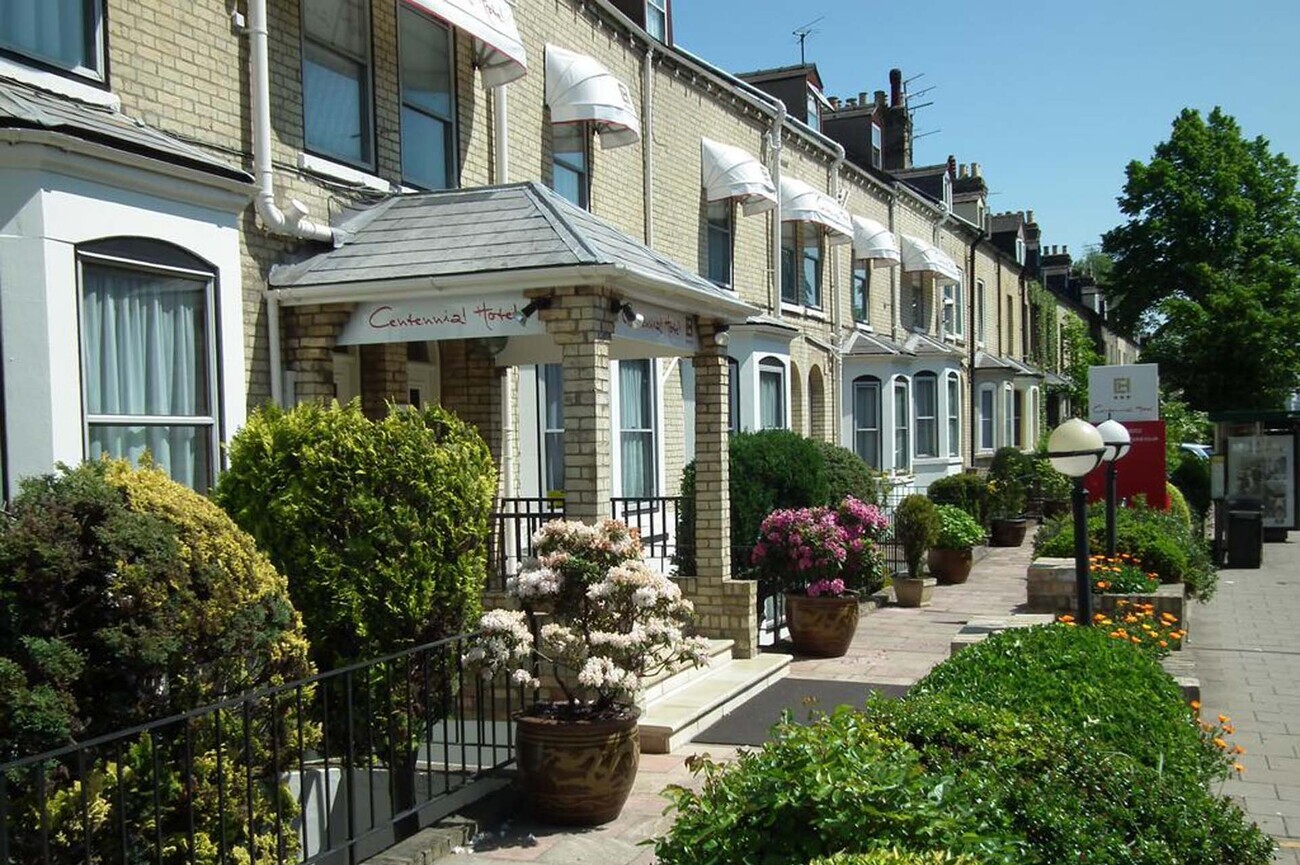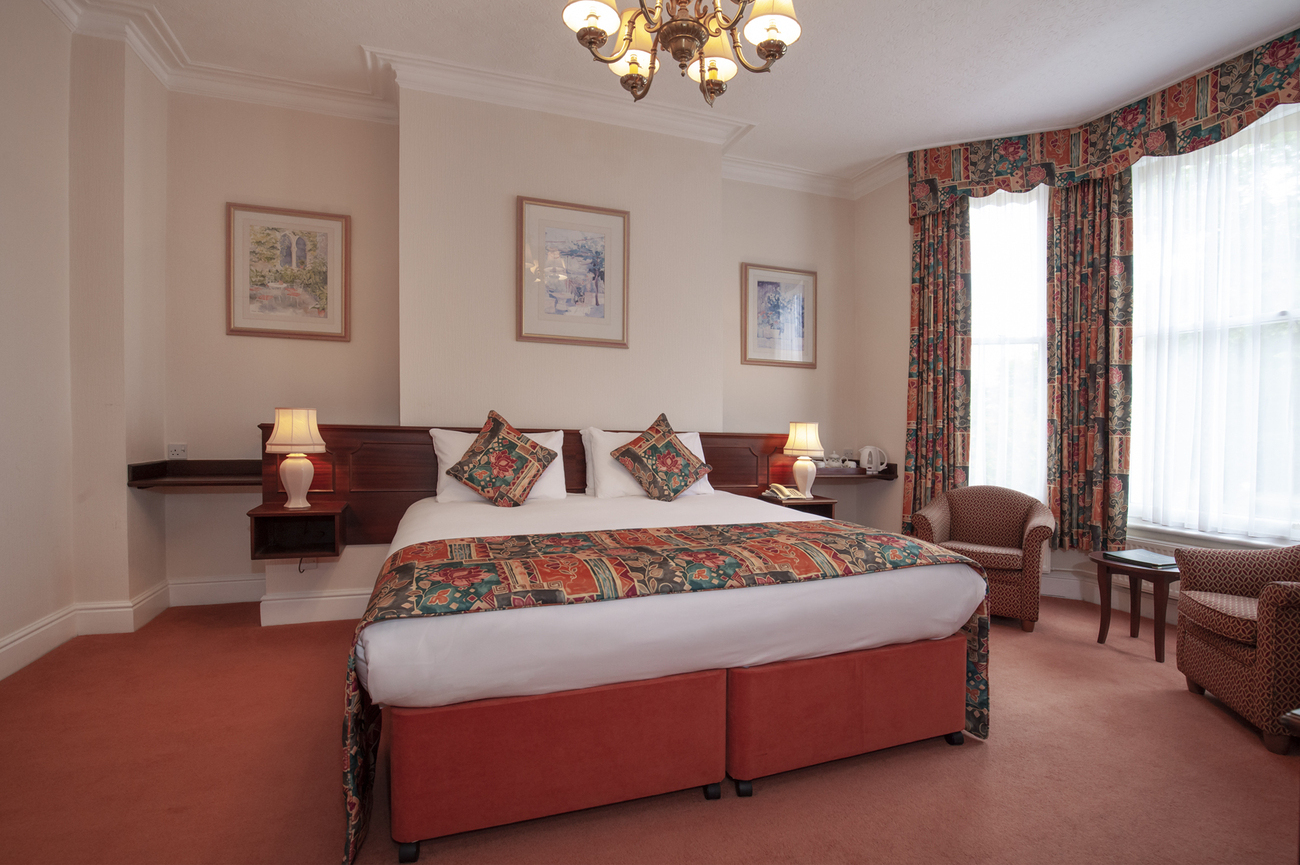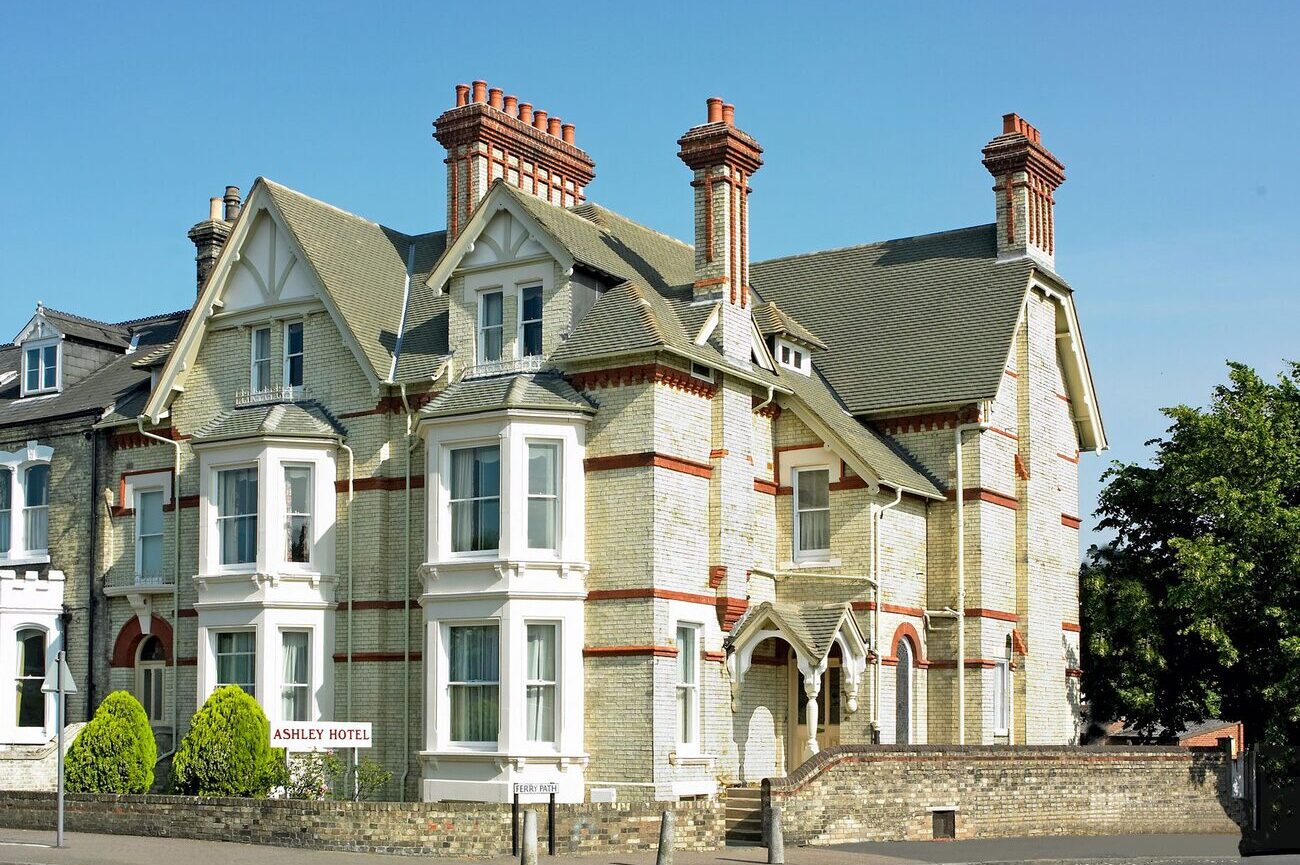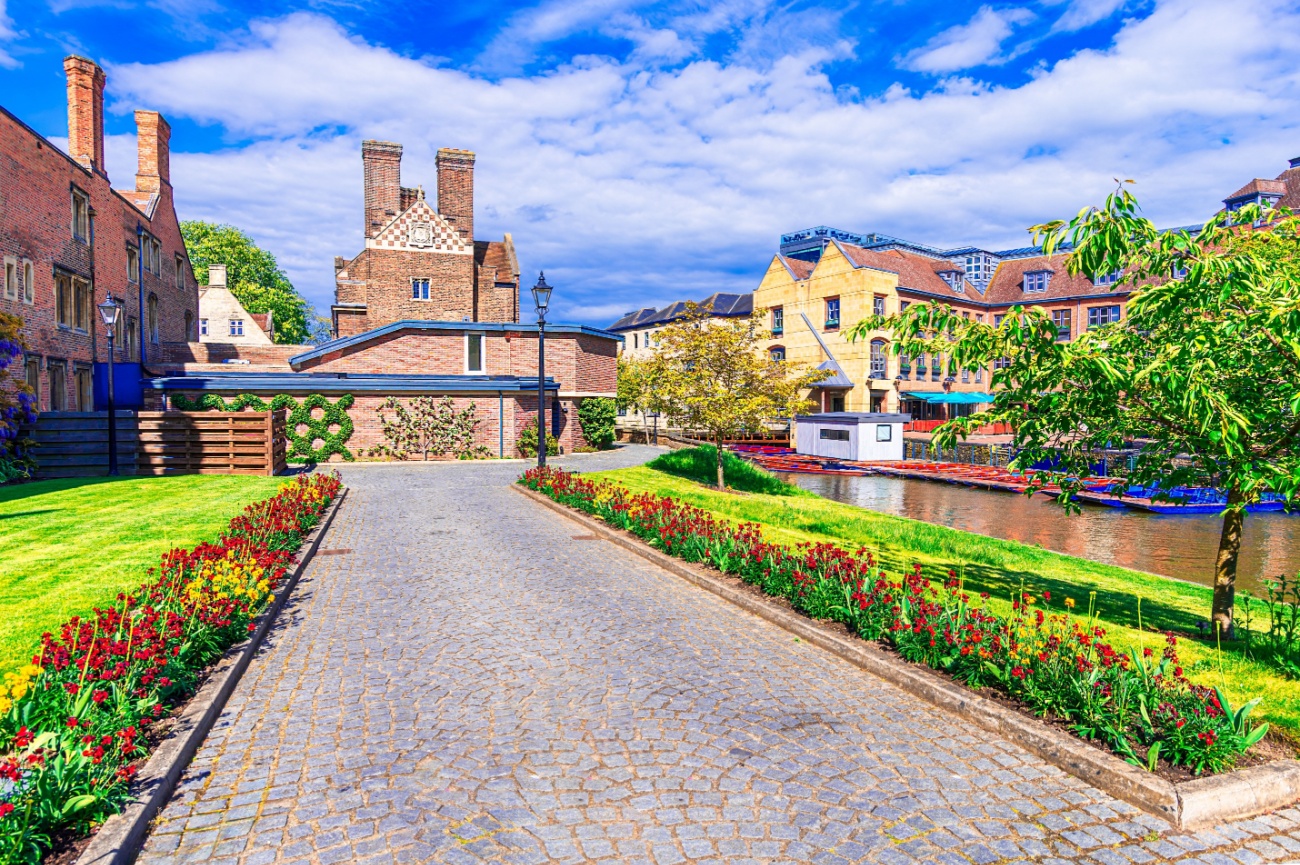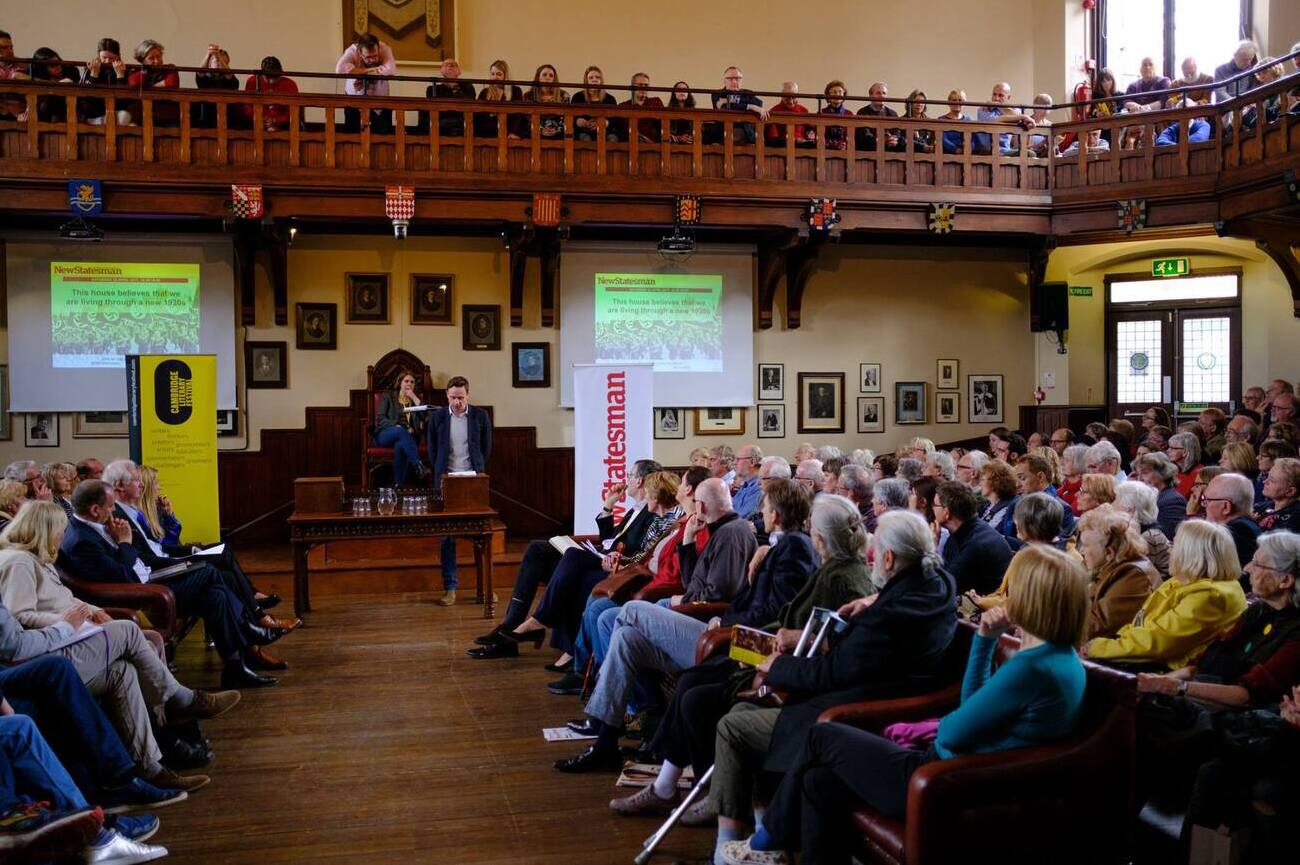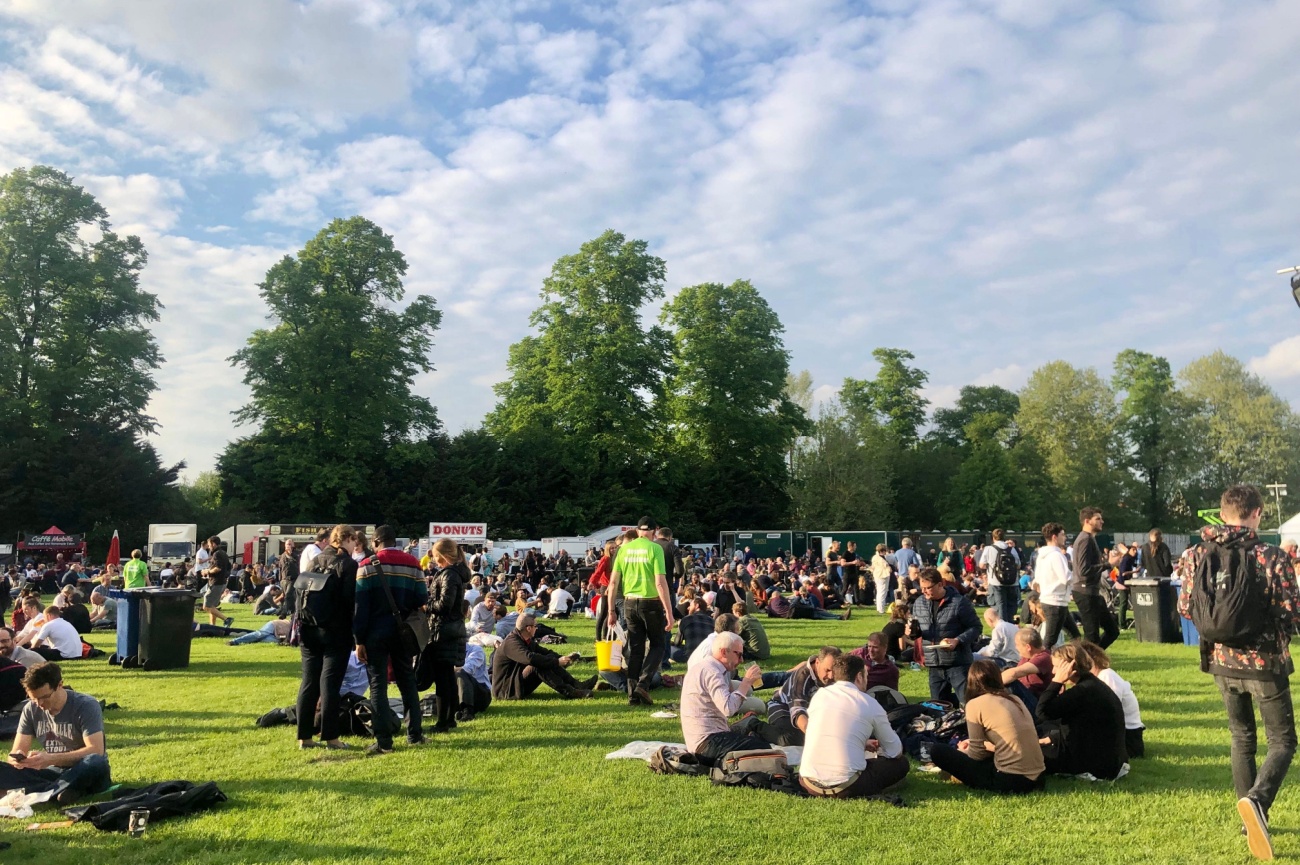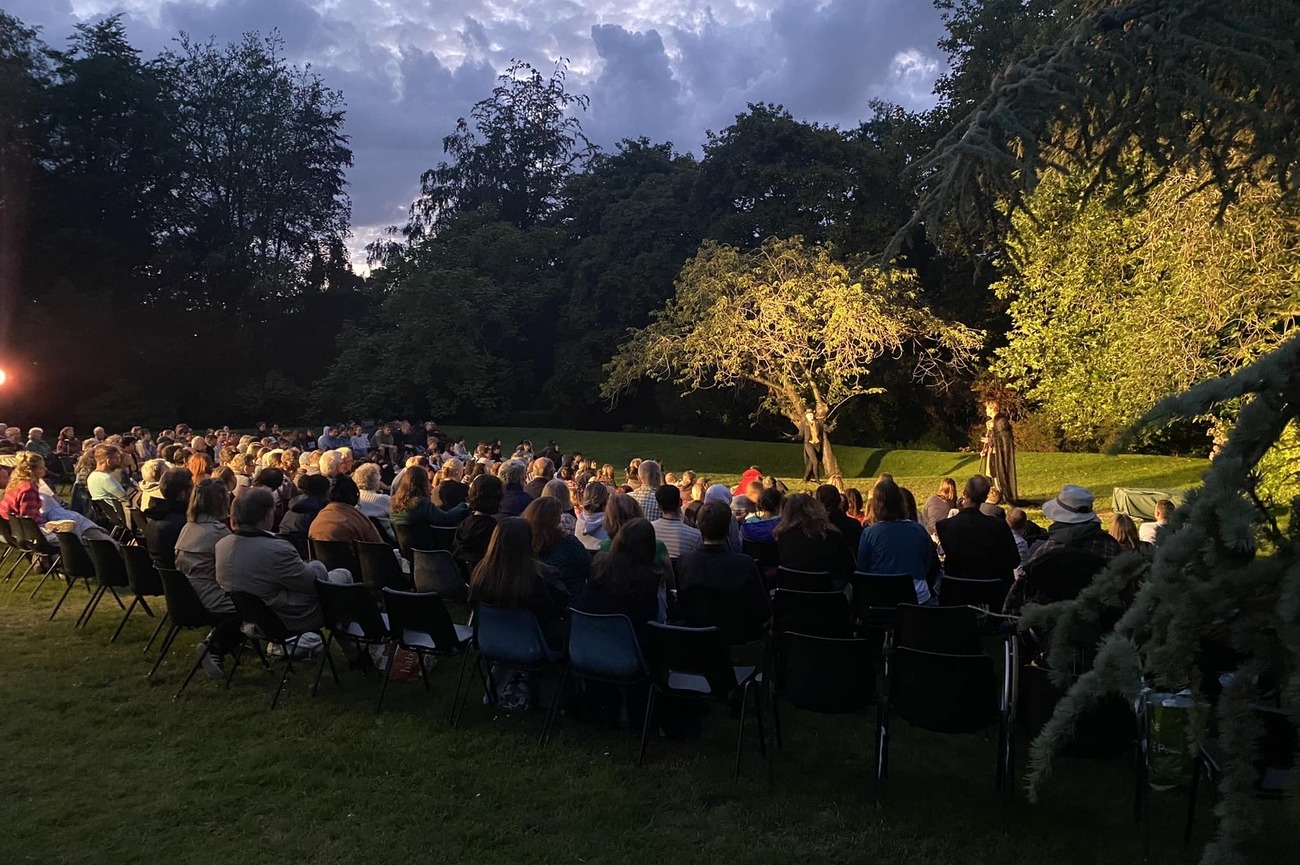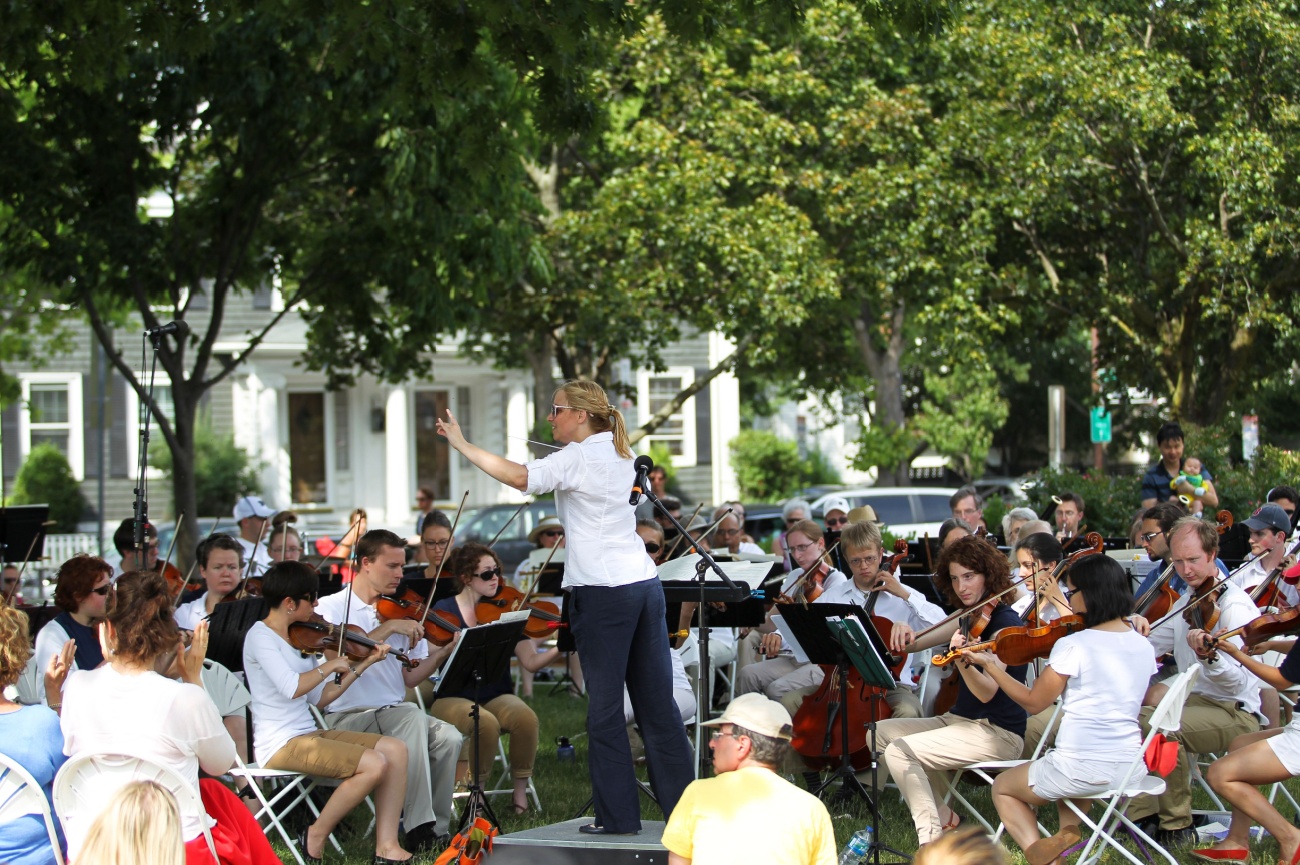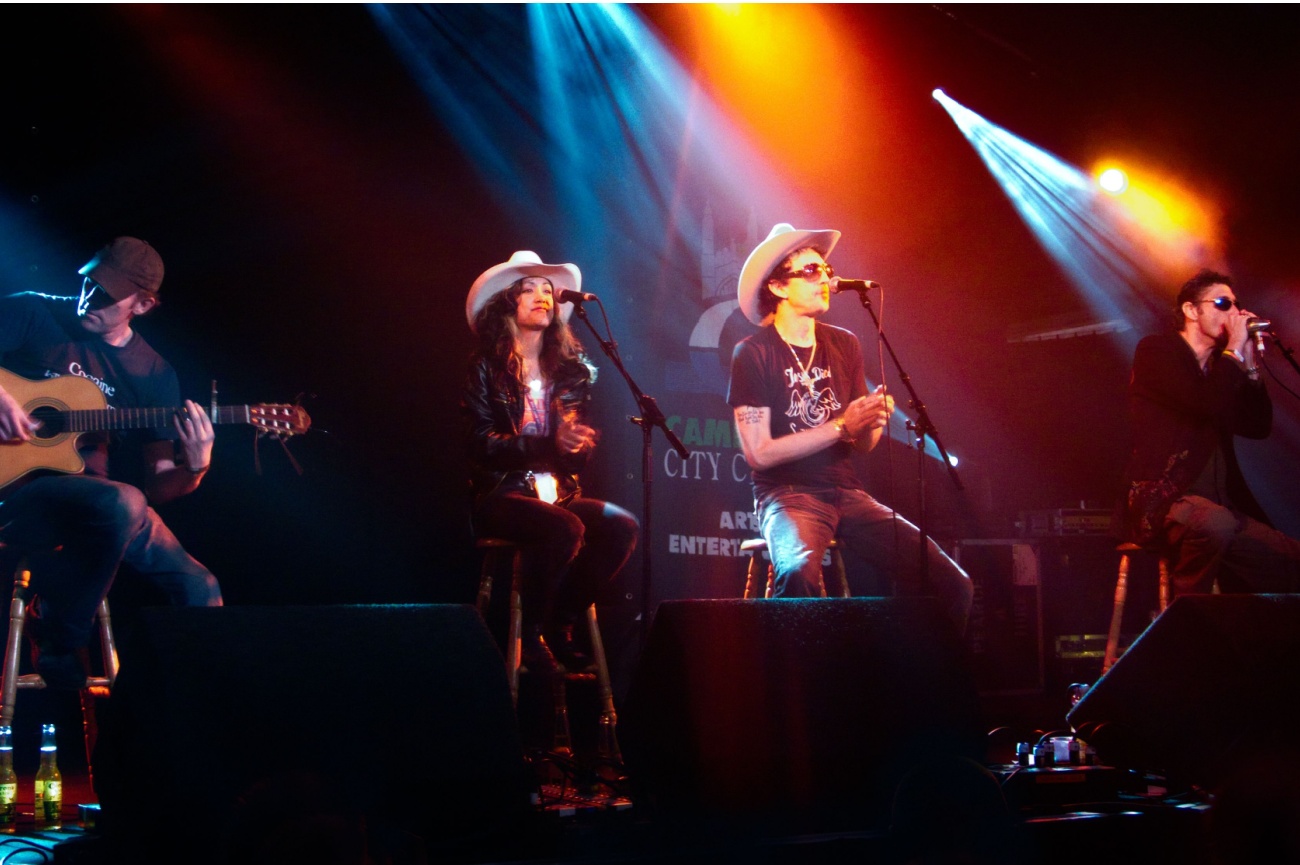THINGS TO DO IN cambridge: 2-DAY ITINERARY
The historical city of Cambridge lies 88 km north of London. Founded in the 12th century, it is famous the world over for its university which is as prestigious as Oxford. The university has 31 colleges, many of which you can visit.
Cambridge is situated on the beautiful River Cam offering opportunities for punting, a popular pastime on British rivers. The city has both an exciting cultural scene and a more relaxed vibe. There are fascinating museums to explore as well as green spaces like the Botanic Garden, where you can escape from city life.
Our two-day itinerary will take you to the highlights of the city and we will also give you some ideas for day trips close to Cambridge which will enhance your stay.
Day 1

Morning: Fitzwilliam Museum
Begin your exploration of the city at the Fitzwilliam Museum which was founded by Richard Fitzwilliam in 1816 when he bequeathed his art collection to the museum. Even before you start looking at the artwork, you will be blown away by the building’s beautiful neo-classical facade and the stunning spiral staircase.
The museum houses more than half a million artworks and artefacts, one of the largest collections of art in England. You will be able to see paintings by artists such as Rembrandt, Van Gogh, and Monet and highlights include Titian’s Venus and Cupid with a Lute Player and Renoir’s Place Clichy. There is a fascinating collection of sculptures showcased including Byzantine wood and ivory pieces and Renaissance bronzes. Look out for the impressive collection of Egyptian coffins and a collection of rare coins dating back centuries.
The Corpus Clock
A nine-minute walk will take you to the Corpus Clock, also known as the Grasshopper Clock. It was unveiled by Stephen Hawking in 2008 and is an amazing and very unusual piece of workmanship. The clock is 1.5 metres in diameter and is made of stainless steel covered in 24-carat gold. There aren’t any hands or numbers, but instead LED lights illuminate slits which show the hours, minutes, and seconds. On top of the clock is a giant grasshopper that eats the minutes as they tick by. At each hour, you will hear chains hitting a coffin reminding you that life is short.
Museum of Archaeology and Anthropology
Not far from the Corpus Clock is the Museum of Archaeology and Anthropology which was founded in 1884 to house local artefacts. Now, however, it exhibits objects from all over the world going back many thousands of years.
You can spend some time at the museum as there are 25 galleries to explore. Enjoy the Egyptian mummies and Buddhist sculptures and see the skeleton of an ancient Roman woman as well as 500-year-old freeze-dried potatoes from Peru. Other highlights include Samurai armour from Japan and the finds from the Anglo-Saxon Trumpington Bed Burial, including the gold and garnet Trumpington cross found on the skeleton of a teenage girl.
University Museum of Zoology
The University Museum of Zoology is just across the road from the Museum of Archaeology and Anthropology so is the ideal place to go next. Both museums are free to enter. The museum celebrates the animal kingdom with mammals, birds, sea life, reptiles, insects, and molluscs showcased. A highlight is the new exhibit of a 21-metre-long fin whale. Interestingly, there are specimens on display which were found by the naturalists Charles Darwin and Alfred Russel Wallace. Displays change as the museum brings up items from the stores and you might even get to see the skeleton of the now extinct dodo. The museum also holds temporary exhibitions. By this time, you are probably ready for lunch, and you can eat in the museum at the Whale Cafe.
Day 1, morning - cambridge Tour Map
Afternoon: Kings College Cambridge
You shouldn’t go to Cambridge without visiting at least one of the colleges and Kings College is a good choice. It is the most famous of Cambridge’s colleges and is known the world over for its choir.
The highlight of the college is the chapel which was built between 1446 and 1515 during The War of the Roses, with Henry VI laying down the first foundation stone. Here you will be able to admire some of the most spectacular Gothic architecture in the world. A highlight of the chapel is the painting, The Adoration of the Magi, by Rubens. You may notice some graffiti on the walls close to the altar and wonder why it’s there. The reason is that during the English Civil War in the 17th century, the chapel was used as a training ground for soldiers, and they are to blame for defacing the walls.
Great St Mary’s Tower
A couple of minutes’ walk from Kings College takes you to the University Church and Great St Mary’s Tower. It is worth climbing the 123 steps of the tower to get a fantastic view of Cambridge. There is a cafe in the church so grab a coffee before continuing your afternoon exploration.
Wren Library
If you can get to the library before it shuts at 2, you will be rewarded with a fantastic literary experience. It houses more than 80,000 rare books and manuscripts and you will be able to see such treasures as Shakespeare’s first folio, handwritten notes by Robert Oppenheimer, and a first copy of Winnie the Pooh. There are also unusual objects on display like a lock of Isaac Newton’s hair.
The library was designed by the famous Christopher Wren who also designed St. Paul’s Cathedral in London.
Traditional Punting Cambridge
End your first day’s exploration of Cambridge with a relaxing punting experience on the River Cam. A punt is a flat-bottomed boat propelled by a person pushing a pole against a shallow riverbed. There are different punting experiences on offer where you are chauffeured so you can enjoy the surroundings. You can take a champagne or gin punt and can enjoy your drinks while travelling along the river. Another option is the afternoon tea punt when, after your trip on the river, you head to a restaurant for a traditional English afternoon tea with sandwiches, cakes, and scones. You can also rent a punt where a member of your party does the punting.
Day 1, afternoon - cambridge Tour Map
Day 2

Morning: Museum of Classical Archaeology
This museum is a little way out from the city centre, but it is worth visiting so head there first and work your way back to the centre. In the museum you will find one of the world’s largest plaster cast collections. They represent some of the most stunning sculptures from ancient Greece and Rome and there are 450 on display covering the period from 1700 BC to 400 AD.
Queen’s College
Head back to the city centre and stop at Queens College which was founded in 1448. Here you can explore the courts and gardens, but the highlight is the Mathematical Bridge, an iconic landmark in the city. It is an unusual bridge connecting the Tudor part of the college to the new buildings. Made of wood in 1748, it has had to be rebuilt twice due to the wood's ageing. It is quirky because it looks like an arch but has been built from straight timber, a wonderful feat of engineering.
Sedgewick Museum of Earth Sciences
The final stop in your morning’s tour is the Sedgewick Museum of Earth sciences. Explore 4.5 billion years of the earth’s geological history at this amazing museum. It houses around 2 million minerals, rocks and fossils which will fascinate young and old alike. Highlights include the largest collection of meteorites in the UK and a replica dinosaur skeleton given to the museum in 1896 by the King of Belgium.
Day 2, morning - cambridge Tour Map
Afternoon: Scott Polar Research Institute
There are plenty of restaurants along the way from the Sedgewick Museum of Earth Sciences to the Scott Polar Research Institute, so it won’t be difficult for you to find somewhere to have lunch. If you like pizza and pasta head to Zizzi’s but if you prefer Asian, try the Charlie Chan restaurant.
The Scott Polar Research Institute was established in 1920 to discover more about the two polar regions. It houses the Polar Museum which you can visit and learn more about the Arctic and the Antarctic. It houses more than 5,000 objects and highlights include 140-million-year-old fossil ferns, Ernest Shackleton’s snow goggles, and a camera used by Robert Falcon Scott.
Cambridge University Botanic Garden
Enjoy a relaxing afternoon at the Cambridge University Botanic Garden which is a 13-minute walk away from the Scott Polar Research Centre. It covers around 40 acres with more than 8,000 plant species, and you can easily spend a couple of hours exploring the different gardens. Amongst others, visit the Mediterranean beds, the rose garden, the winter garden, and the bog garden. Admire the British wildflowers and visit the tropical glasshouses which will introduce you to completely different types of plants.
Day 2, afternoon - cambridge Tour Map
Other Things To See In Cambridge
- Museum of Cambridge: The Museum of Cambridge depicts what daily life was like for the people of Cambridge over the last 300 years and exhibits more than 40,000 artefacts. It is housed in a beautiful 400-year-old former pub and coaching inn.
- Kettle’s Yard: Kettle’s Yard is Cambridge’s contemporary art gallery. It has a permanent collection and hosts visiting exhibitions.
- Shop For Unique Souvenirs in Market Square: Cambridge is a market town and the centre of trading since the Middle Ages has been Market Square. It holds a general market from Monday to Saturday with around 100 stalls selling a wide variety of merchandise, including fruit, vegetables, vinyl, clothing, flowers, jewellery, and books. There are also stalls offering hot and cold food. On Sundays, you will find the Arts, Crafts, and Local Produce Market where artists, craftsmen, and farmers offer their creations. You may find unique souvenirs to take home with you at either market.
- The Round Church: The Round Church was built in 1130 making it even older than the university. It has many beautiful features including stunning Norman architecture, stained glass windows, and wooden angels carved in the 15th century.
- Grantchester Village: Grantchester is a charming village that was used in the filming of the TV series Grantchester. It lies 3 km south of Cambridge city centre. Visit the mediaeval church of St. Andrew and St. Mary, which was used in the TV show. Enjoy a traditional afternoon tea in The Orchard Tea Garden or have a pint of real ale in one of the three pubs in the village.
- University of Cambridge: 31 colleges make up the University of Cambridge and most can be visited, some even being free to enter. The most interesting colleges include Pembroke College, which has a chapel designed by Christopher Wren, the architect of such famous buildings as St. Paul’s Cathedral and Hampton Court Palace. Jesus College showcases some stunning sculptures in the gardens, Magdalene College has the Pepys library which houses Pepys’ diaries, and Sydney Sussex College is where Oliver Cromwell’s head is buried.
- Cambridge University Press Bookshop is the oldest publishing house in the world. It was founded in 1534 and its bookshop in Cambridge opened in 1992. The shop is home to over 50,000 different titles and it also sells gifts and souvenirs with a Cambridge theme.
- Our Lady and the English Martyrs Church was built between 1885 and 1890 in the Gothic Revival architectural style. The windows along the aisle were destroyed during WWII but have been replaced. They show portraits of saints, as well as depicting sufferings the English martyrs had to endure. It is a Catholic church and is the tallest building in the city at 65m high, including the spire.
- The Cambridge Gin Laboratory: If you enjoy a gin and tonic, you will love The Cambridge Gin Laboratory. It offers several classes which have to be booked in advance. Find out how to pair gin with artisan cheese, learn how to make gin cocktails, discover how to taste like a professional, or learn how to blend your own bottle of gin using your choice of different botanicals. Alternatively, you can just visit the shop and taste a selection of gins.
- Cambridge Corn Exchange: This building used to be a corn exchange and is now an arts and music venue, hosting events such as concerts and comedy shows, and attracting many well-known performers. Shows have included The Nutcracker and Legend, the Music of Bob Marley.
- Cambridgeshire Wine School: If you want to learn more about wine, head to Cambridgeshire Wine School. Wine tastings are on offer as are more specialised classes such as pairing wine and cheese and Bordeaux wine tips. There is even a class teaching you more about champagne and sparkling wine.
- Cambridge American Cemetery & Memorial: The cemetery covers 123 hectares, and you will find 3,811 graves of armed forces personnel, most of whom died in the Battle of the Atlantic. There are also 5,127 names on the Wall of the Missing. It is a moving place to visit and the visitor centre tells more about the men who died, with photos, films, and interactive displays on show.
Day Trips From Cambridge
- Imperial War Museum, Duxford: The Imperial War Museum is located 13 km south of Cambridge and focuses on the military history of the UK, particularly the air force, but it also has a maritime section. It is housed at Duxfield Airfield which was used during the First World War. It is the largest air museum in Europe and most of the exhibits are exhibited in aircraft hangers, adding to the authenticity of the experience. There are even displays when restored aircraft take to the skies.
- Thetford Forest: For a day amongst nature, head to Thetford Forest, 56 km north of Cambridge. You can easily spend the day here as there are 46,282 acres to explore. Rent a bike and cycle on wither the quiet roads or even off-road, or enjoy walking or birdwatching. If you have children, this is the perfect place to take them as there are play facilities. They will love Go Ape with high rope courses, zip lines, archery, and bungee trampolines. There is a cafe here so you can relax with a drink while your children have fun.
- Chelmsford: 133 km south of Cambridge is the only city in Essex, Chelmsford. Apart from great shopping, there is plenty to do. Visit Chelmsford Cathedral with its beautiful stained-glass windows, sculptures, and an impressive painted ceiling. Learn about the history of the city at Chelmsford Museum and for a relaxing experience, enjoy a leisurely walk around Hylands Estate and Gardens.
- Wimpole Estate, Royston: Wimpole Estate is just under 17 km southwest of Cambridge and covers 3,000 acres of parkland and farmland. The house was built in the 17th century and its Georgian interiors can be visited. However, the highlights are in the grounds which you can explore with a rental bike and the farmland which children will love. It is home to many rare breeds of animals which they can meet. The estate has a cafe so you can break up your exploration with a drink or a snack.
- Shepreth Wildlife Park: Shepreth Wildlife Park, 13.8 km south of Cambridge, is a great place for the whole family. It started as a refuge for injured and orphaned animals and now is involved in breeding programmes for endangered animals. It houses around 100 different species including the Sumatran tiger, monkeys, wallabies, reptiles, and even creepie crawlies.
- Newmarket Racecourse: Newmarket Racecourse is a flat racing venue for thoroughbred horses and is just 22.88 km east of Cambridge. It has two racecourses, the Rowley Mile and the July Course, each having a capacity of 20,000. If you enjoy horse racing, Newmarket Racecourse has a packed calendar so you may well be lucky enough to be in the area when there is a racing event. The racecourse has two restaurants, one at each course. The Champions Gallery at the Rowley Mile overlooks the track so you can watch the races while enjoying a three-course meal.
- Audley End House: Audley End House is 24 km south of Cambridge and is a stunning 17th-century stately home with gardens designed by Capability Brown and acres of parkland. Although the house is now one-third of its original size, it is still big. You can visit the state apartments, redesigned in the Gothic style in the 19th century, the Great Hall, and chapel. The service wing comes alive at some weekends when costumed actors portray Victorian kitchen staff. Children will love the Victorian stables where they can meet the horses and dress up as Victorian stable workers. The estate has two venues for grabbing a drink or a meal.
- Saffron Walden Golf Club: Saffron Walden Golf Club is at the back of Audley End House. It is an 18-hole golf course and although a private members club, it does accept visitors if you book in advance. As well as the course, there is a putting green, driving nets, a short game practice area, and a covered driving range. The golf club offers a Clubhouse which has stunning views of the Capability Brown Parkland. It seats 140 and offers freshly prepared food.
- Anglesey Abbey is 23 km northeast of Cambridge, but it isn’t an abbey, but a Jacobean house. Take a tour of the house and see the original furniture and artwork. The highlight is the Saxon Atlas which was produced in 1579 and is the first national atlas ever made. The park surrounding the house is enormous and has seven beautiful gardens and five lawns with deckchairs. Children will enjoy the outdoors as the playground has three exciting areas, the treehouse, a playpark, and a section where they can build dens.
- Kimbolton Castle is a country house 48 km northeast of Cambridge. It started as a wooden motte and bailey castle and then became an extravagant Tudor stone castle where Catherine of Aragon, King Henry VIII’s first wife, died. It is now a school but can be visited on certain days of the year on an organised tour. You will see some of the state rooms including the Queen’s room, where Catherine died, and the Heritage room which tells the story of the castle.
- Ickworth House is 47 km east of Cambridge close to the town of Bury St. Edmunds. It is a magnificent Georgian Italianate palace which is made up of a giant rotunda in the middle and wings on either side. The east wing is now a hotel, but the west wing can be visited and is full of Regency furniture and art by artists such as Poussin, Titian, Hogarth, and Gainsborough. You will also be able to see the Life Below Stairs exhibition which tells you about the lives of the servants in the 1930s. The rotunda also contains Regency furniture, as well as porcelain and Georgian silver.
- Ely Cathedral was built in 1083 and is 27 km north of Cambridge. It is a magnificent building which was used in TV series such as The Crown and in the film The King’s Speech. Climb the 170 steps of the tower for fantastic views and take a guided tour of the cathedral. You can even have a traditional English afternoon tea in a 14th-century undercroft. It is the third longest mediaeval cathedral in the country at 164 metres.
- Bury St. Edmunds, 48 km east of Cambridge, offers 1,000 years of history. Go through the 14th-century Great Gate to see the ruins of the Abbey of St. Edmund and wander around the beautiful gardens. You will be able to visit the herb garden, water garden, the fragrant rose garden, and the sensory garden. Another highlight of the city is St. Edmundsbury Cathedral where you can take the tower tour for fantastic views. Moyse’s Hall Museum showcases artefacts from the Bronze Age, Roman times, and the Middle Ages.
- Huntingdon is 31 km northwest of Cambridge and is a relatively small town with a history going back to the 12th century. Its main claim to fame is that Oliver Cromwell was born there and if you go to the museum, which is housed in a 12th-century hospital, you will see paintings of him and some of his belongings, such as a powder flask. Other highlights of the town include All Saints Church, which was built in the 1500s and one of the oldest houses in the UK, The Manor.
- Hitchin is 48 km southwest of Cambridge, lying at the foothills of the Chilterns. It is a market town and has a combination of mediaeval half-timbered buildings and Georgian mansions. There is a stunning church in the middle of the town, a large outdoor market, and a good selection of museums to visit, such as the British Schools Museum. The highlight, however, lies on the outskirts of town and is the Lavender Farm. It is amazing when the lavender is in bloom as it looks like an enormous blanket of purple.
- St. Albans is a market town in Hertfordshire, 71 km south of Cambridge. Here you will find the oldest pub in England so pop in for a hearty meal or a drink. The cathedral is magnificent and has the longest nave in the country at 85 metres. It is a mixture of Norman and Gothic architecture. Climb the 93 narrow steps of the 15th-century Ancient Clock Tower, which is separate from the cathedral, for great views and visit the Verulamium Museum, which is built on top of a large Roman city. It is filled with many Roman artefacts as well as other ancient objects.
- Woburn is a charming Georgian village in Bedfordshire, 69 km south of Cambridge. It has a lovely range of independent shops and more pubs than you would think there would be in a small village. The highlight is Woburn Abbey and Gardens, owned by the 15th Duke and Duchess of Bedford but at the moment it is closed for refurbishment. Reopening is expected in the spring of 2026. Visit the Woburn Heritage Museum and the Woburn Art Gallery as well as the Woburn Safari Park.
- Grafham Water is 43 km northwest of Cambridge and is set in beautiful countryside. There are 14.5 km of paved tracks around the reservoir as well as some nature trails, a playground and a visitor centre. Fishing is allowed and there is a hide for birdwatching. You can spend the day here as there is a cafe or bring a picnic.
Things To Do In Cambridge With Kids
Children will love punting on the River Cam and visiting a couple of the museums already mentioned, The Sedgewick Museum of Earth Sciences and the Museum of Zoology, but here are a few more suggestions.
- Cambridge Science Centre: This interactive science centre is specifically designed for children aged between 5 and 13. It is open at weekends and during school holidays and offers 20 hand-on exhibits, science shows, and workshops.
- Centre For Computing History: Kids these days are completely computer-literate and spend hours online. Where better to take them than to this museum where they can learn about the history of computers and the people behind them? They can enjoy hands-on exhibits and attend workshops.
- Milton Country Park: Just to the north of Cambridge is this park where your children can let loose. Apart from interesting walks and playgrounds, there is a wide range of water activities on offer including kayaking, swimming, and paddle boarding.
- Lockhouse Escape Games is located in the centre of the city. It offers four different escape games, each lasting an hour. Children under 12 must have an adult with them.
- Cambridge Museum Of Technology: The museum is open on Fridays, Saturdays, and Sundays and explores Cambridge’s high-tech companies as well as the sewage and waste systems. There is plenty here to interest children of all ages, such as museum trails, activity stations, and push-button models and machinery.
- Partyman House of Play is a soft play area with three levels of play. There are slides, a giant ball pool, and a giant jelly mountain, as well as a special area for babies and toddlers. It is run by children's entertainers, and they offer entertainment activities such as face painting and balloon modelling.
- Woburn Safari Park is 68 km south of Cambridge and is fun for the whole family. It is a drive through safari park, and you can follow the circuit as many times as you wish. After all, you won’t see the same scene twice. Animals include elephants, zebras, giraffes, monkeys, black bears, tigers, and elephants. There is also a foot safari with aquatic creatures, small mammals, and some exotic species. You can easily spend all day here as there is a restaurant, as well as the Great Woburn Railway, play area, swan boats, and keeper talks.
Where To Eat In Cambridge
There is a wide variety of restaurants in Cambridge, ranging from gastro pubs to fine dining restaurants. As England is a multicultural country, you will also find many international restaurants. Let’s take a look at some of your choices.
Gastro Pubs
- The Petersfield: This pub is in the heart of the city along Sturton Street. It has a lovely courtyard for better weather and cosy spaces inside for when it rains. It serves British seasonal food for both carnivores and vegans. According to your preferences, try the grilled beef burger, the haddock and chips, or the grilled tofu skewers. On Sundays they serve a traditional British Sunday roast.
- The Free Press: This pub is two centuries old so has plenty of history behind it. It is on Prospect Row and is a lovely place for couples to go for intimate dining. On offer are both traditional British food such as fish and chips and Mediterranean fare like Moroccan lamb leg. Enjoy any of the dishes with traditional British ales. On Sundays, a roast is on offer with a nut roast for vegetarians. Sunday lunch is very popular, so booking is advised.
- The Architect: The Architect on Castle Street is the best place to go if you want to try traditional British fish and chips. Also on offer are pies such as steak and ale pie and even a vegan hotpot.
- The Waterman: Open even for breakfast, this pub along Chesterton Road offers great food and craft beers. It concentrates on small plates and sharing platters, with vegan options. It offers a Sunday roast which includes a mushroom and cashew nut wellington for non-meat eaters.
International Restaurants
- The Olive Grove: Along Regent Street, the Olive Grove serves classic Greek dishes with a modern twist. Desserts are delicious with baklava and bougatsa on offer.
- Mercado Central: This restaurant on Green Street was created to reflect Spain’s markets and restaurants. The ingredients used in the dishes are locally sourced and seasonal. Start with the courgette. patatas, and goat’s cheese and then try the guinea fowl with mojo verde.
- Navadhanya: This Indian restaurant on Newmarket Street was awarded a Michelin Bib Gourmand award in 2020. It offers a la carte dining and tasting menus, including a vegan menu.
Fine Dining
- Midsummer House: This 2-star Michelin restaurant is a fantastic place to go for a celebration. It is situated in a Victorian villa right beside the River Cam so offers a lovely view. It offers seasonal food with exciting tasting menus.
- Galleria: Along Bridge Street, Galleria offers both classical French food and Italian pasta dishes. It is a sophisticated restaurant serving both meat and vegan dishes. Choices include pan-fried honey and garlic chicken supreme and cauliflower steak.
Where To Stay In Cambridge
- Gonville Hotel: This 4-star hotel is conveniently located just a five-minute walk from the city centre. It is innovative as the bedrooms are equipped with a QR code to make service requests. The hotel has a lovely restaurant, the Terrace, which serves locally sourced food for breakfast, lunch, and dinner as well as offering a traditional British afternoon tea. If you book directly with the hotel, your breakfast is free.
- Hilton Cambridge City Centre: 600 metres from the city centre, this 4-star hotel offers guests use of the gym for the duration of their stay. Enjoy seasonal British dishes in the Bull and Bass and lighter bites in the piano bar where you can also have afternoon tea.
- University Arms Autograph Collection: Within walking distance of the city centre, this 4-star hotel has 192 rooms. There is a spa and gym on-site for the use of guests. Parker’s Tavern bar and brasserie is open from early until late.
- Centennial Hotel: Refurbished in 2020, this 3-star hotel combines boutique with tradition. The hotel is unique in that it is set in a row of six townhouses in which you will find 39 rooms, all individually designed. The hotel has a bar and a restaurant and serves both traditional British fare as well as French cuisine using fresh, locally sourced ingredients.
- Arundel House: This 3-star hotel is in a beautiful setting overlooking the River Cam and is a 10-minute walk from the city centre. There has been thought put into the rooms as they are all individually decorated. It has a restaurant offering modern European cuisine as well as a brasserie for light lunches and afternoon tea.
- Ashley Hotel: For those travelling on a budget, this 2-star hotel offers excellent value for money. It is made up of two attractive Victorian houses built around 1900 and offers ensuite rooms, a full English breakfast, and free parking.
Best Time To Visit Cambridge
England has unpredictable weather, and it can rain at any time of the year. For the best chance of good weather, summer is your best bet though it can get busy when the schools break up for the holidays. June and September are better choices if you want to avoid the crowds, and the weather can still be pleasant. However, Cambridge is a year-round destination with most places staying open in the winter so if you don’t mind what the weather brings, you can visit at any time.
Festivals In Cambridge
Cambridge hosts many festivals throughout the year with all sorts of topics celebrated from literature to music to food and drink and more besides. Here are a few of the most popular festivals held in the city each year.
- Cambridge Literary Festival: This festival is held twice a year, in April and in November. It celebrates the written word with speakers from the literary world. It is held at different venues throughout the city.
- The Cambridge Beer Festival: Real ale is popular in the UK and this festival showcases it in May. It also gives you the opportunity to try perrys, wines, and beers and there is a great cheese stall. Enjoy the live music while you sample the drinks on offer.
- Cambridge Shakespeare Festival: Held in the gardens of different colleges, this festival puts on a series of Shakespeare plays in July and August. Enjoy a picnic in the grounds before settling down to watch powerful and exciting theatre.
- Music in the Parks: Every Sunday afternoon between 3 and 5 pm during the summer, free concerts are held in the city’s green spaces. A variety of music is offered, including funk, pop, blues, soul, jazz, Latin, and brass.
- Cambridge Rock Festival: Held at Harlocks Farm in August, the festival offers rock, folk, blues, and more across three stages. Enjoy the music with real ales, cider, lager, or wine.

